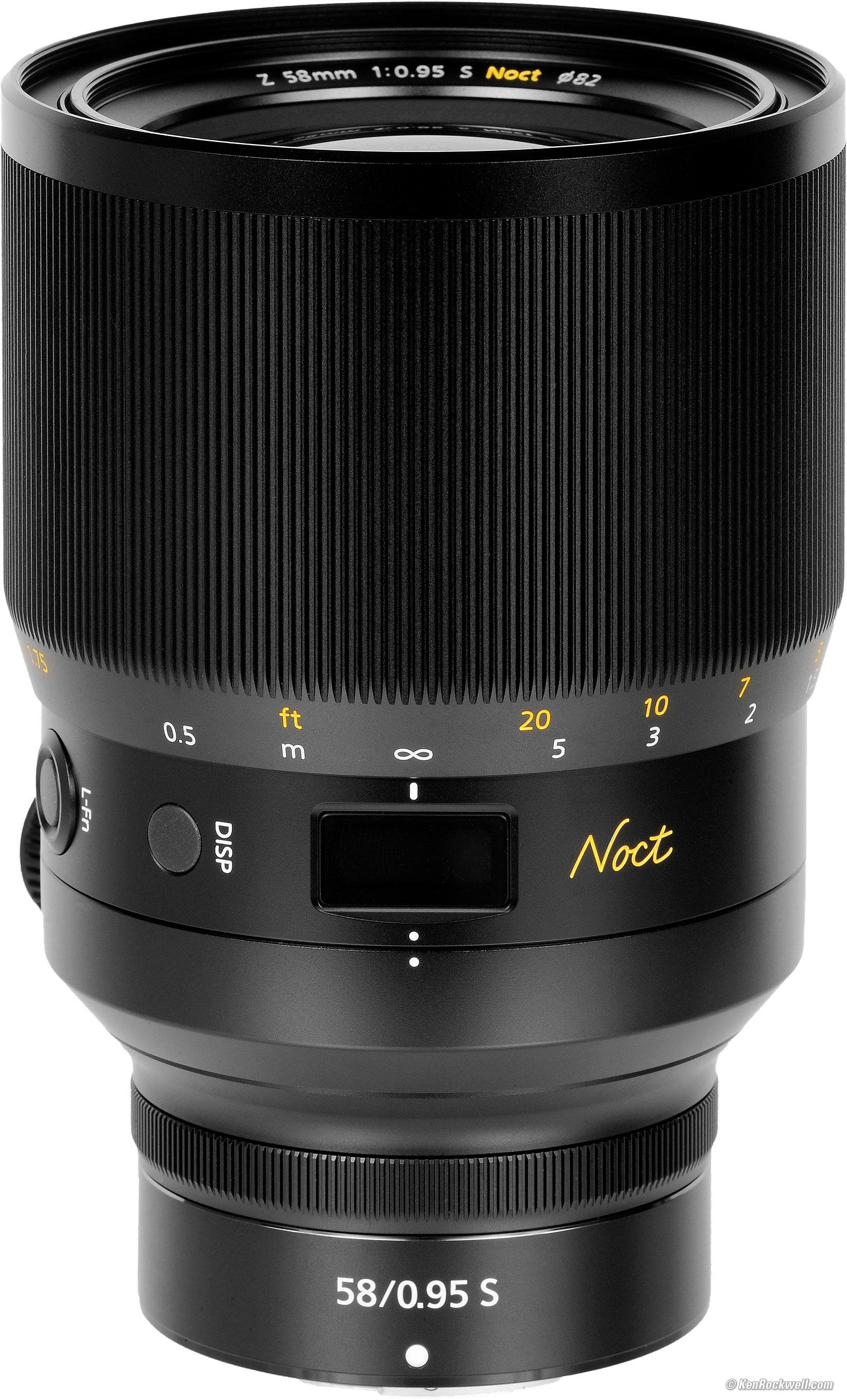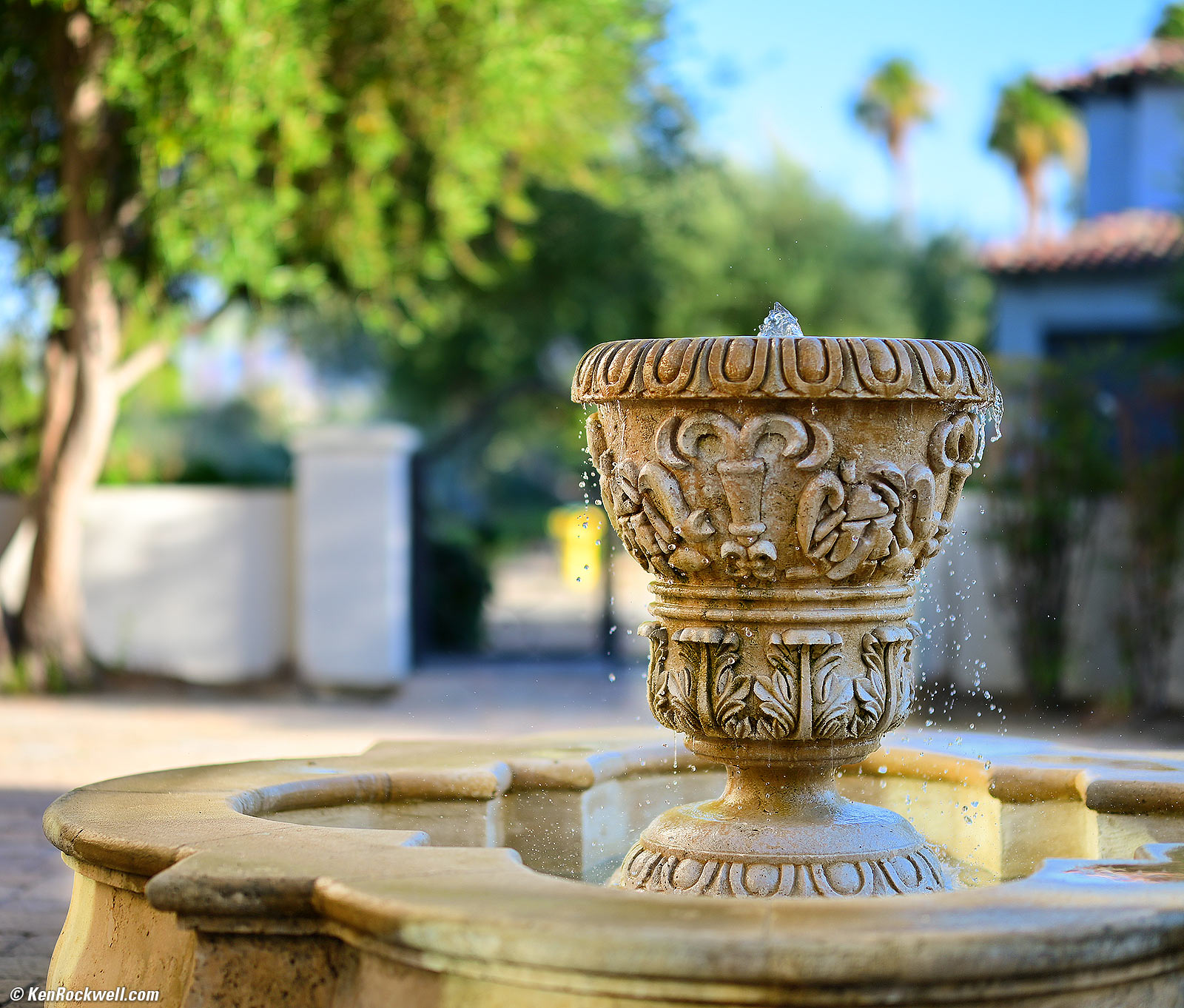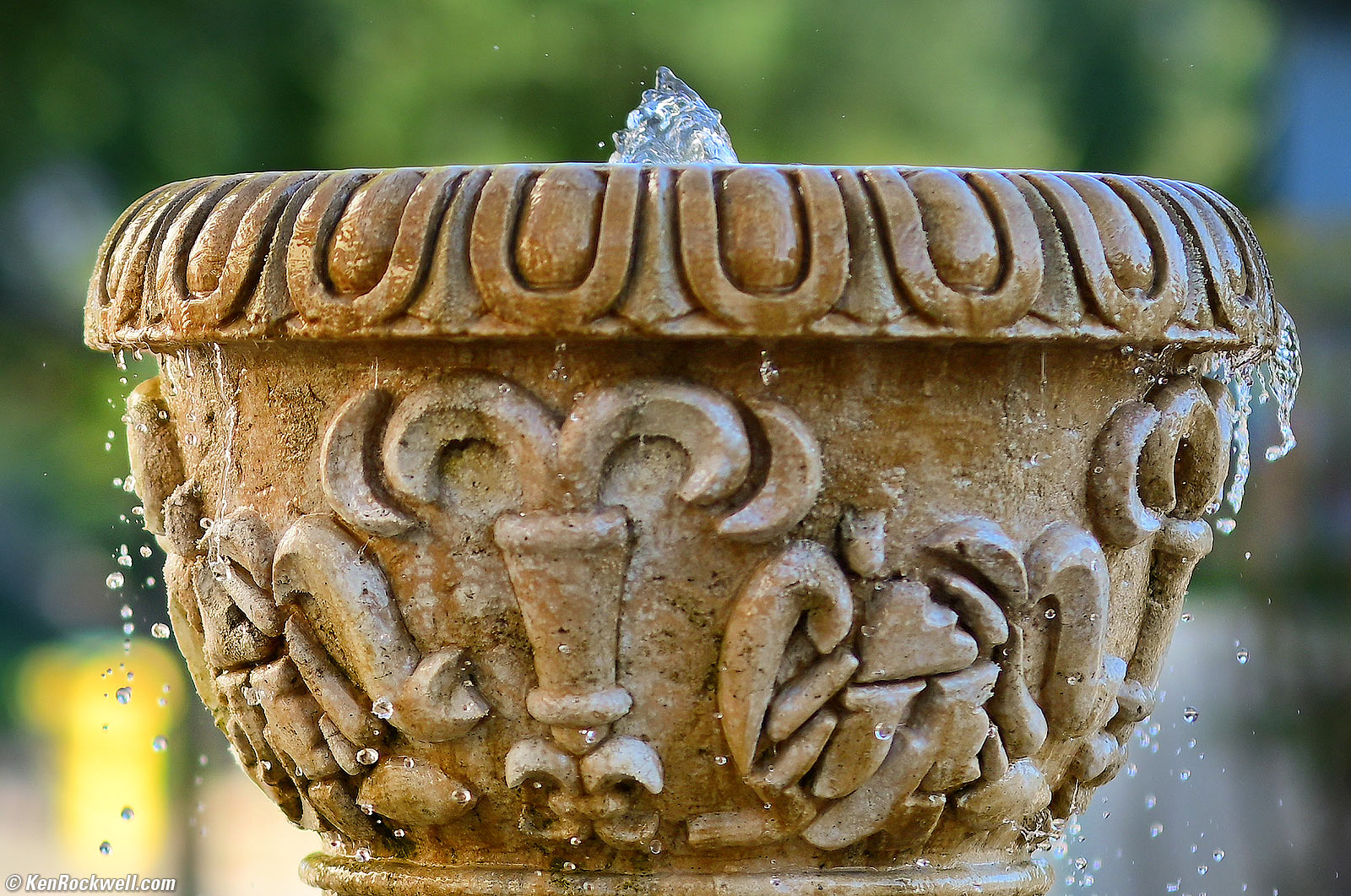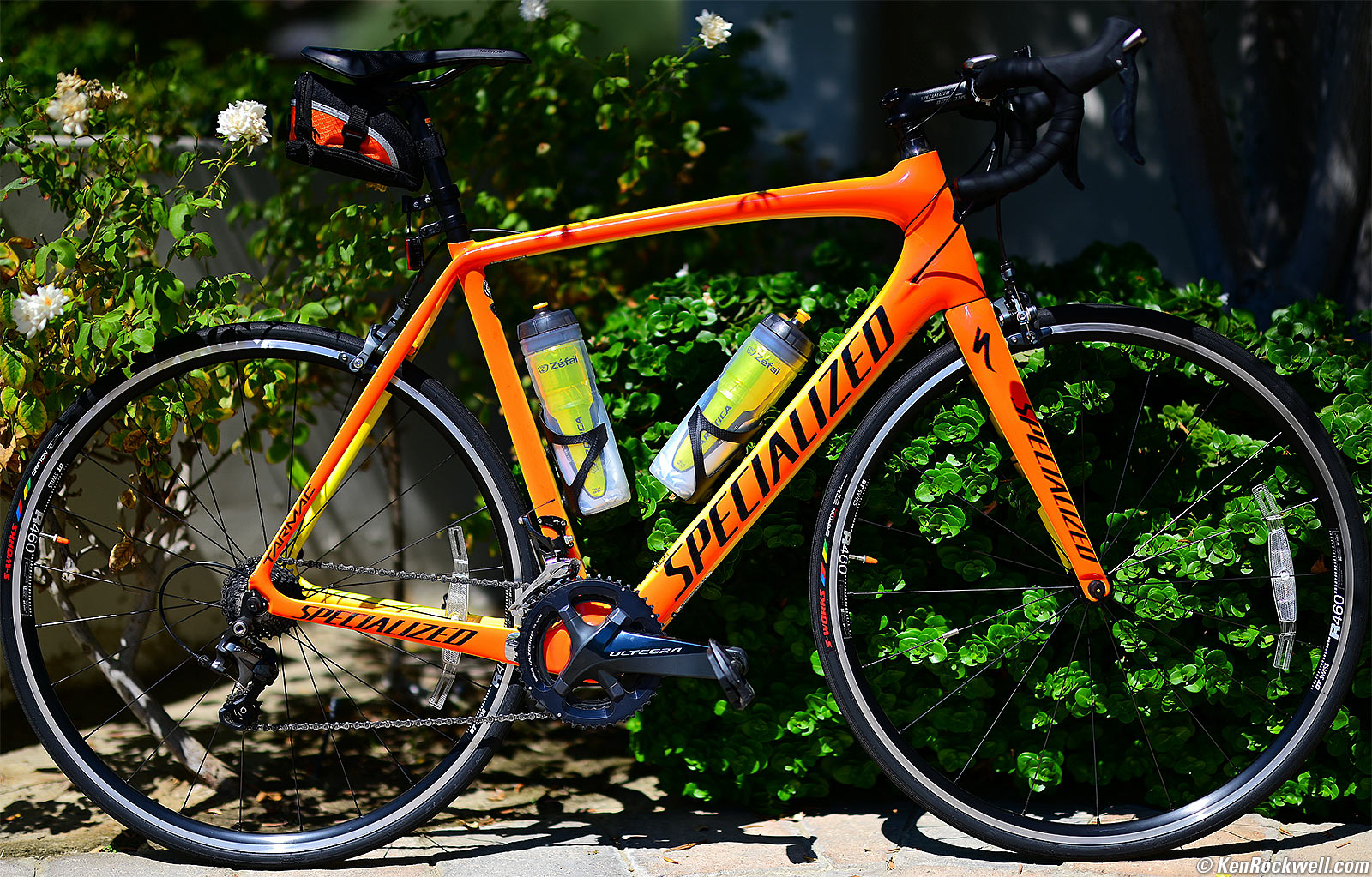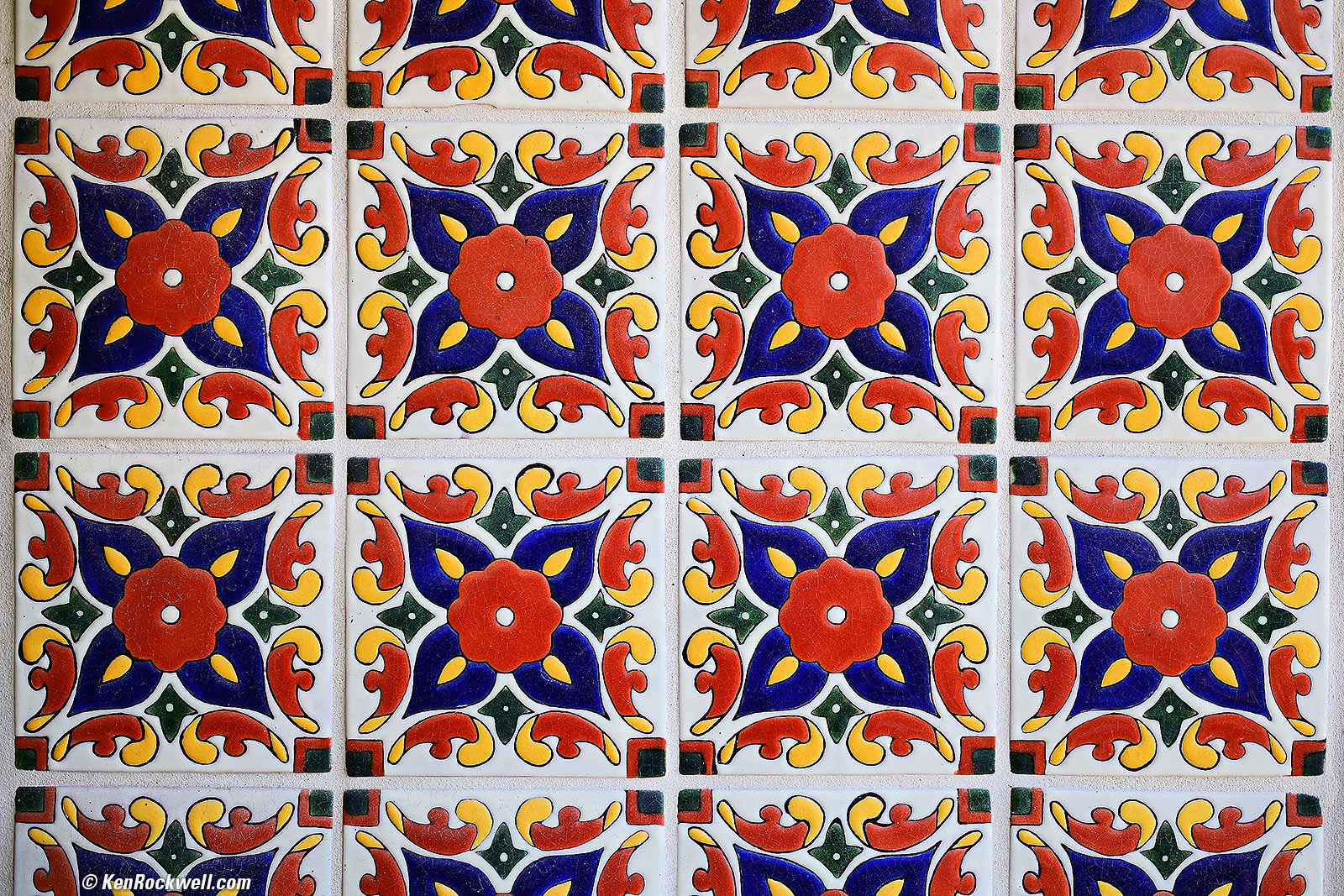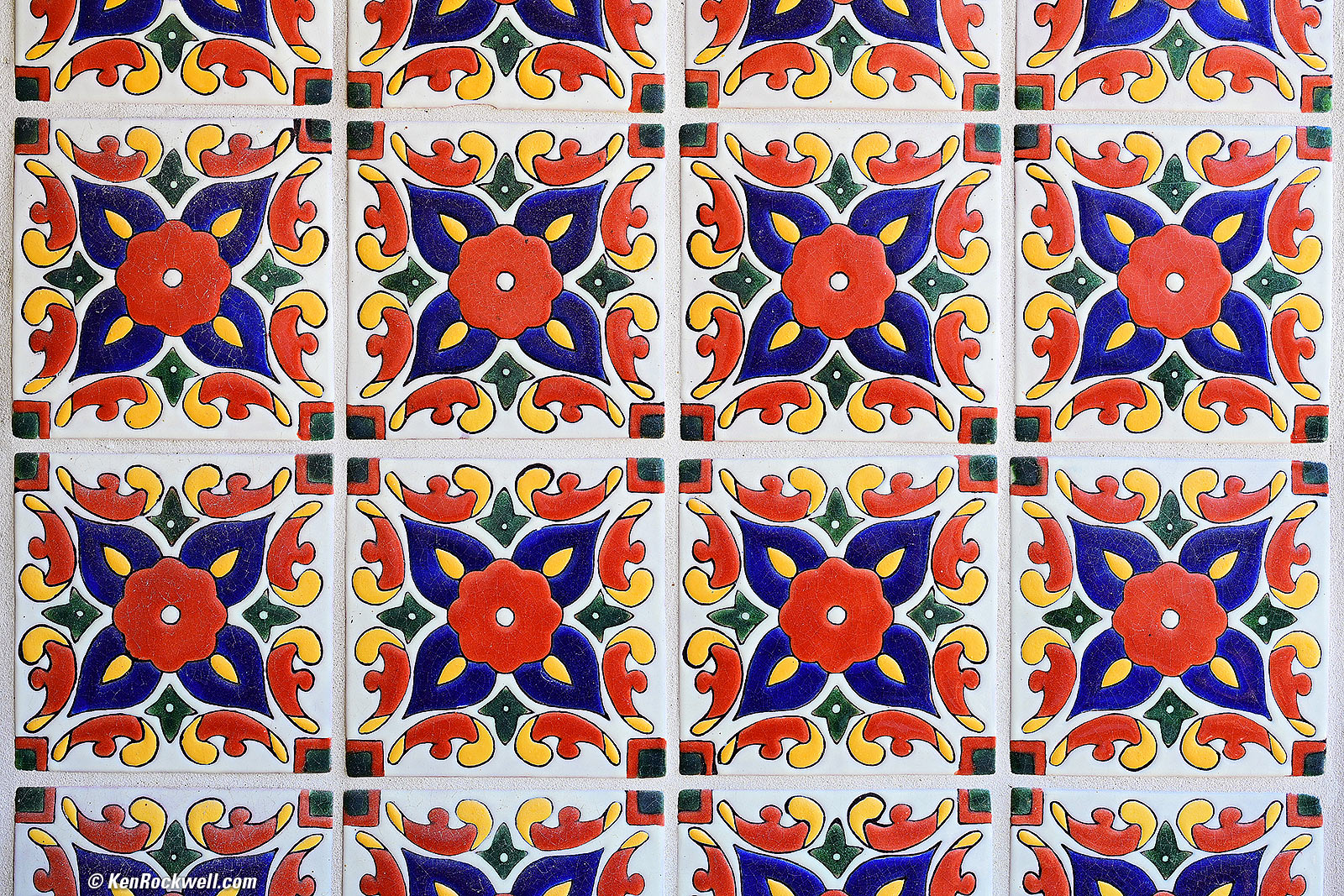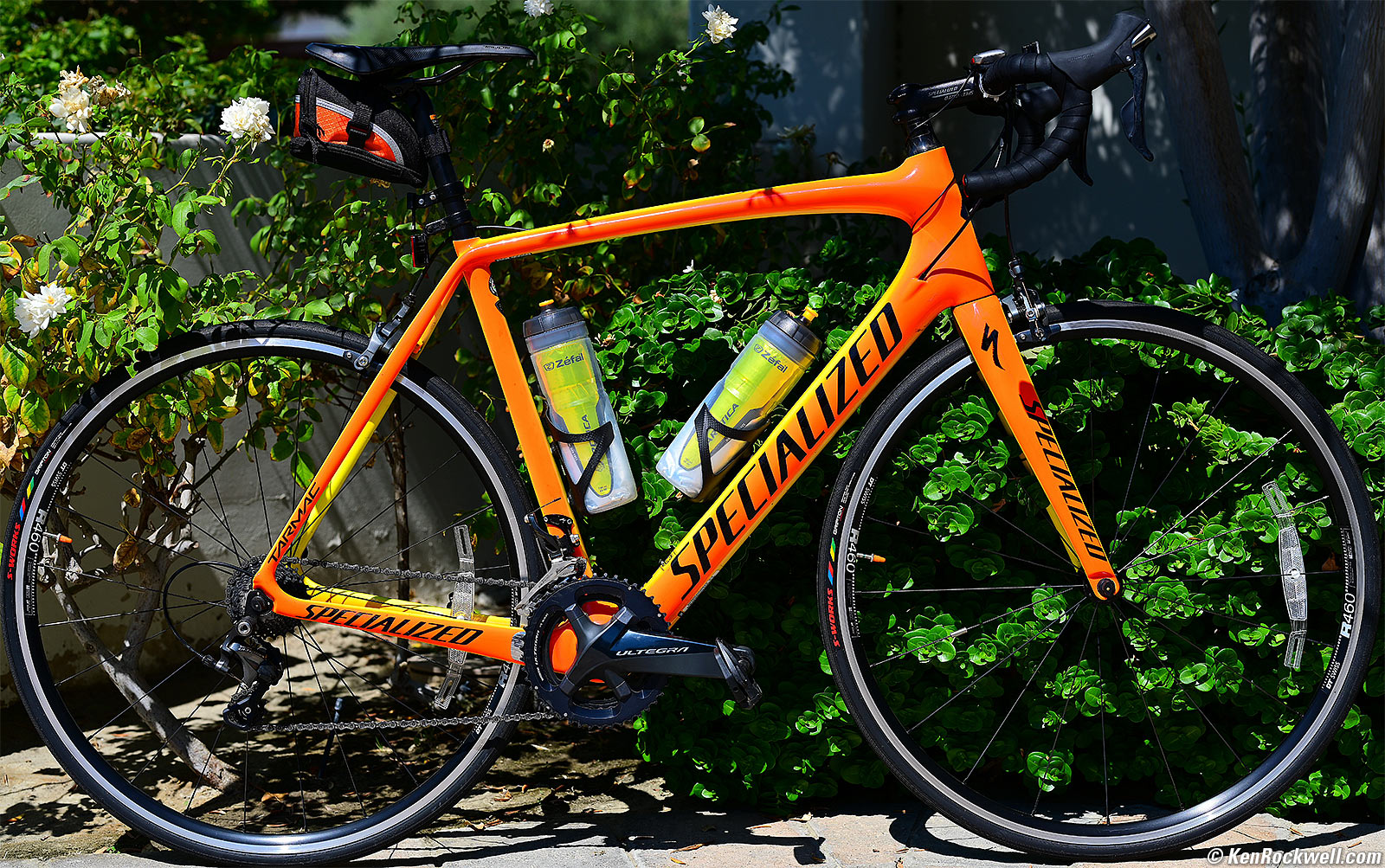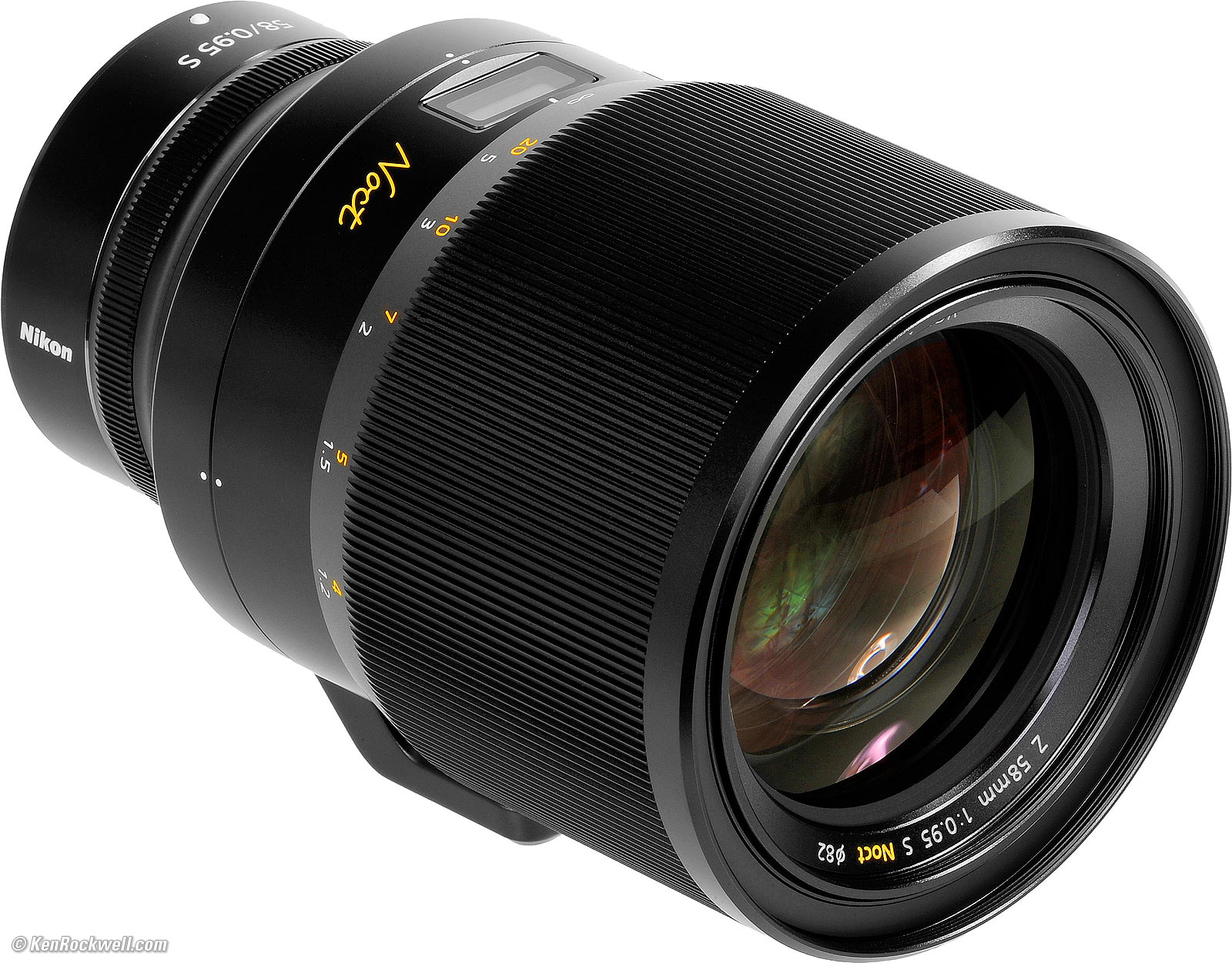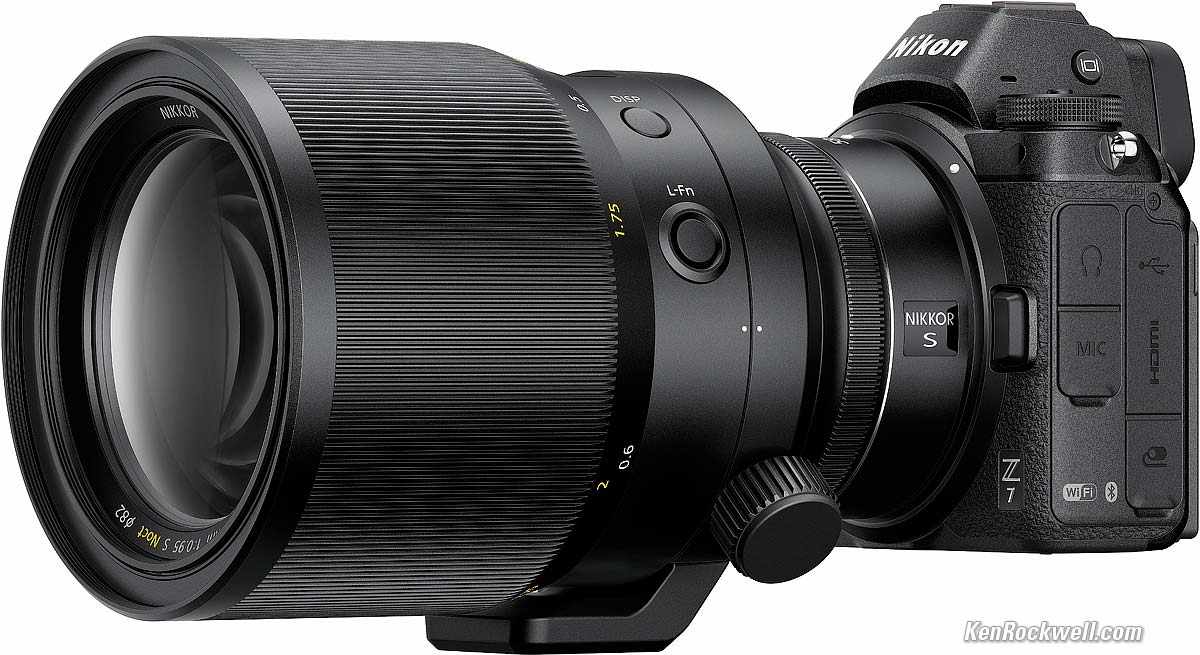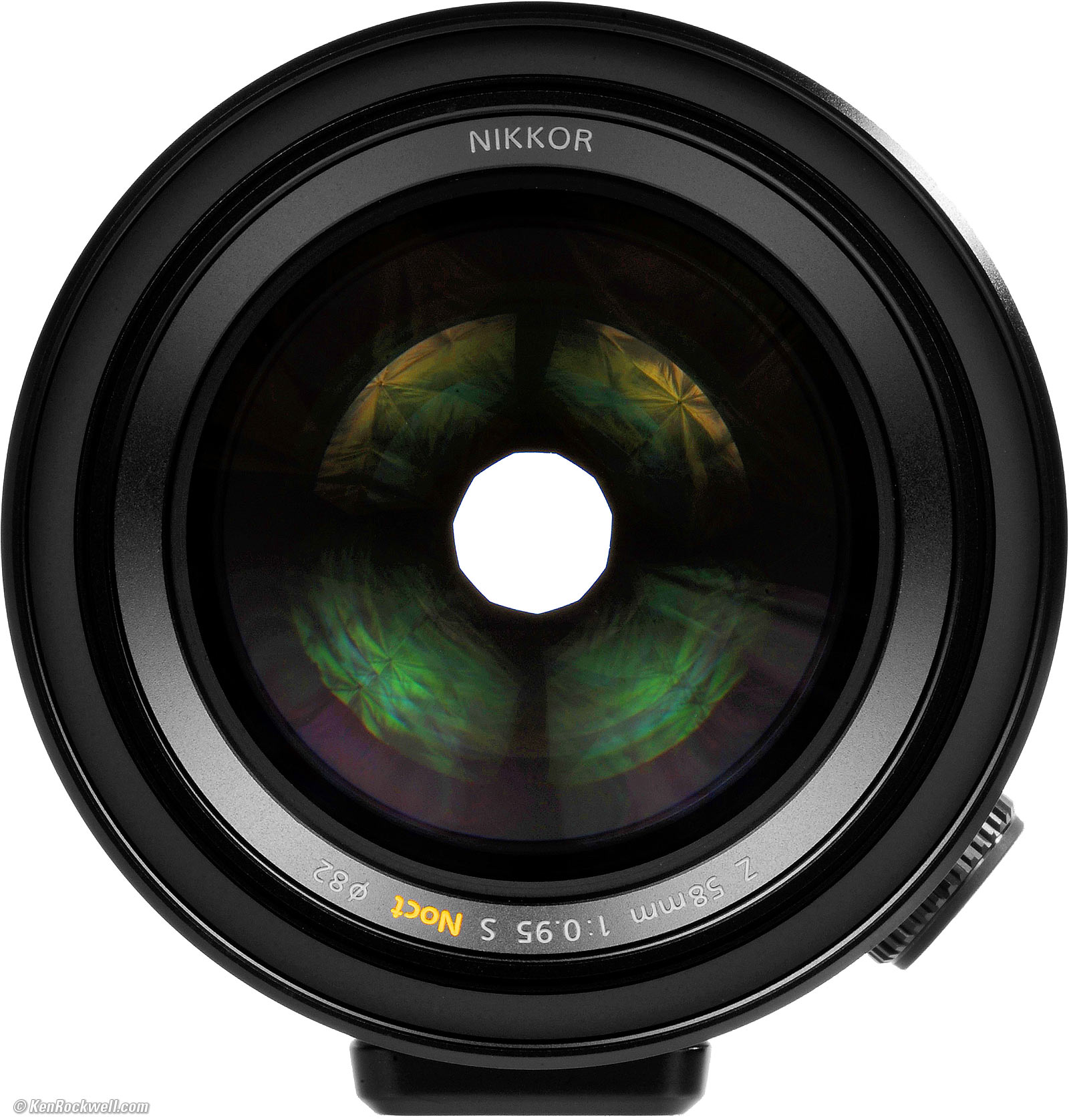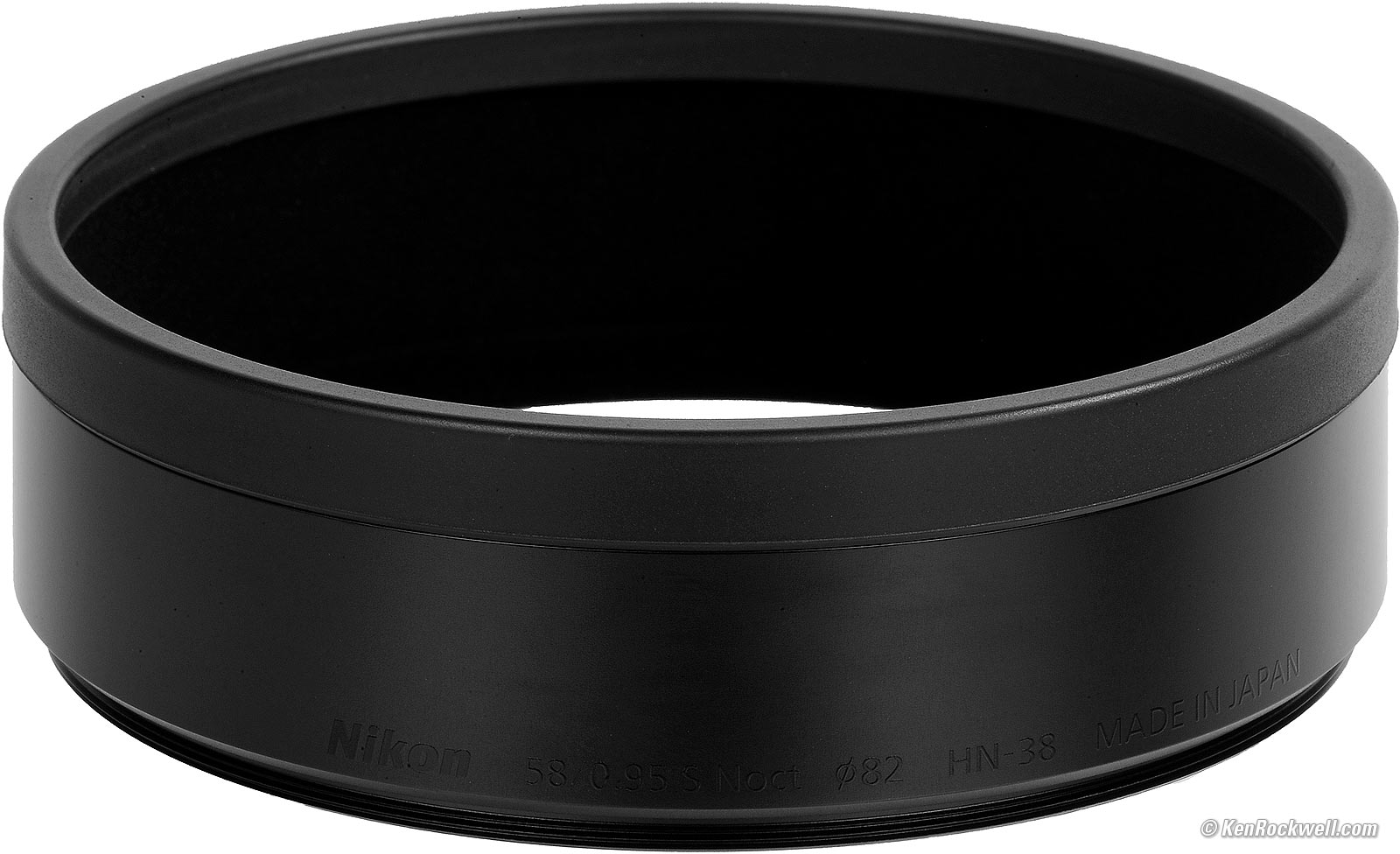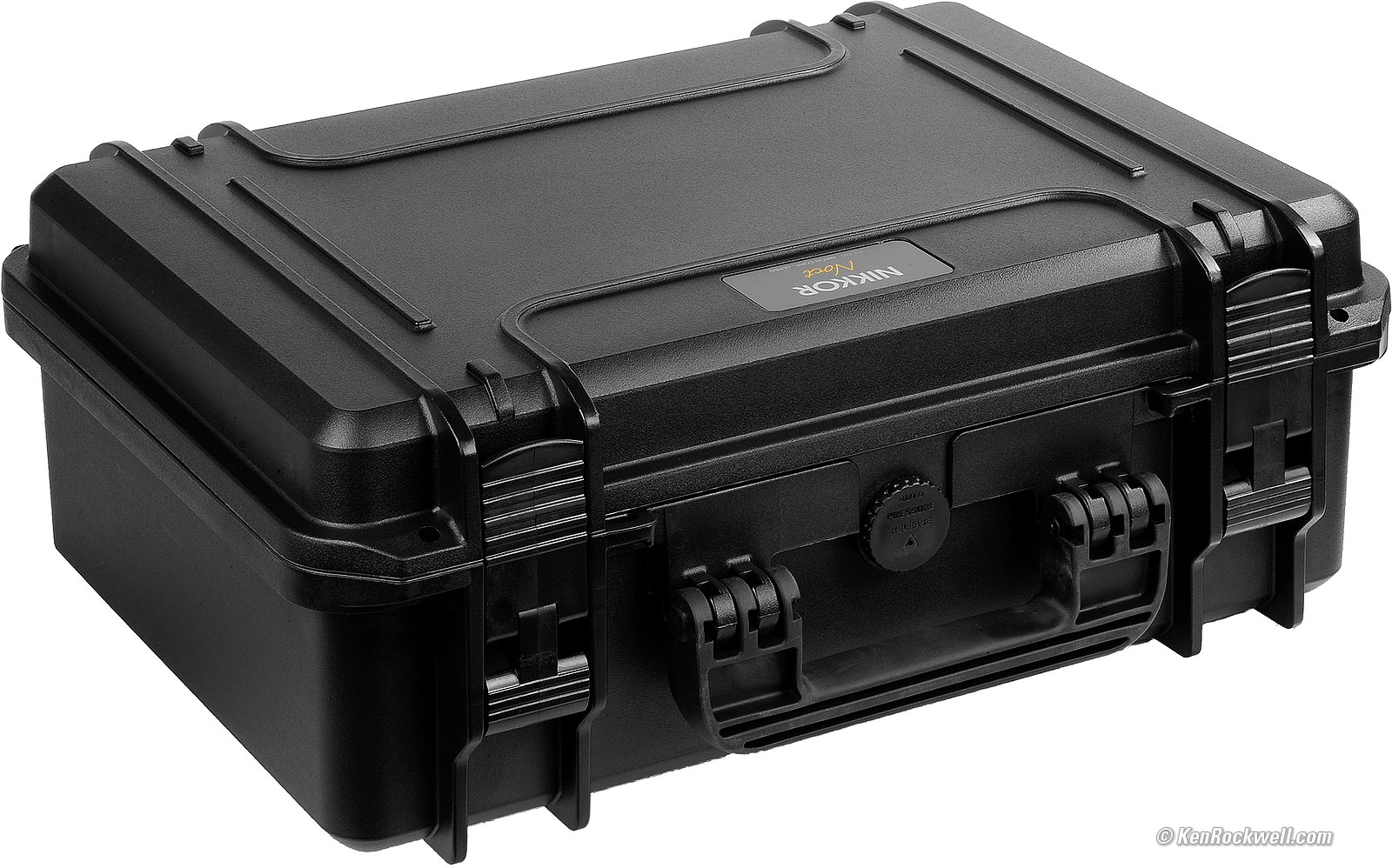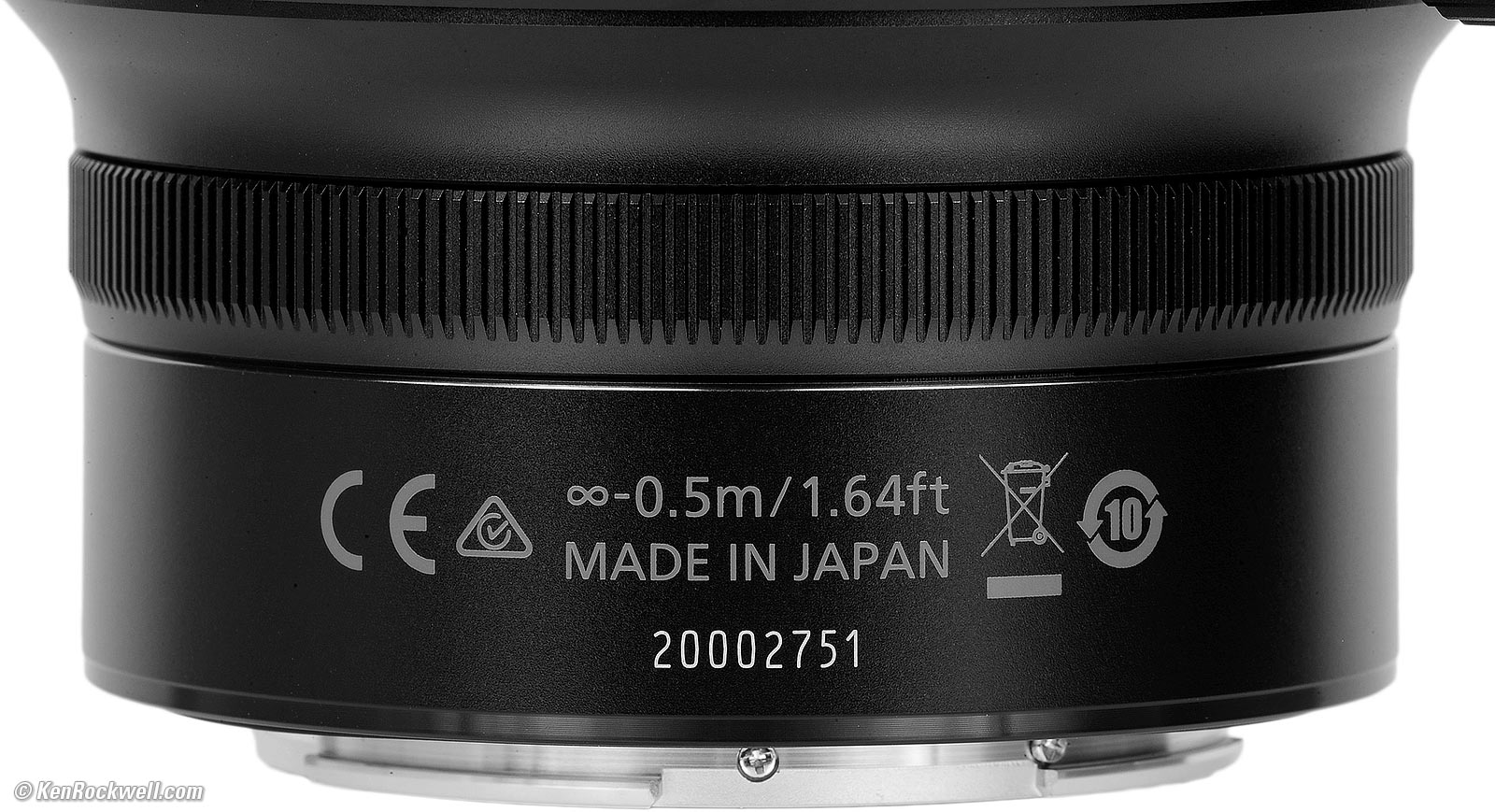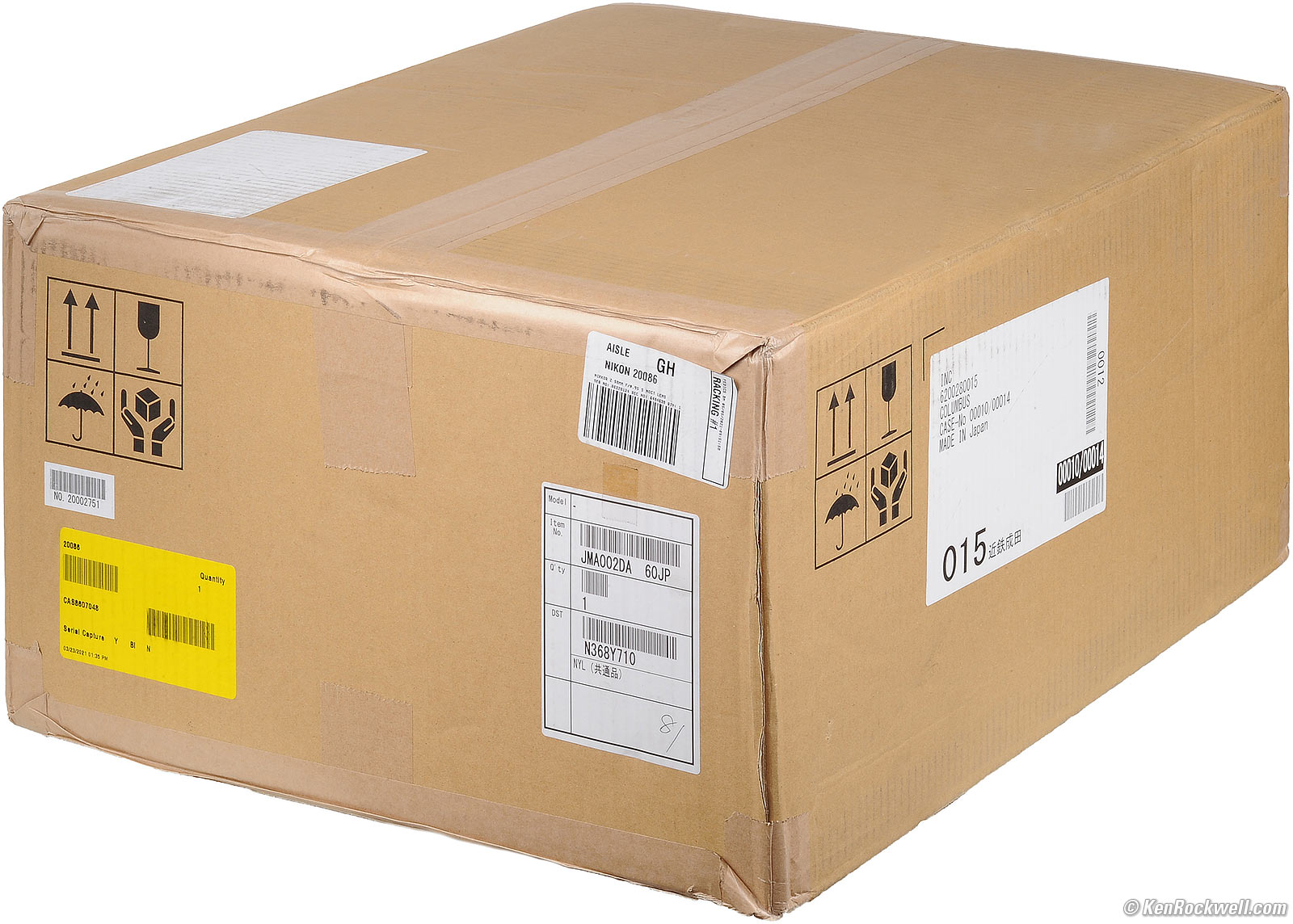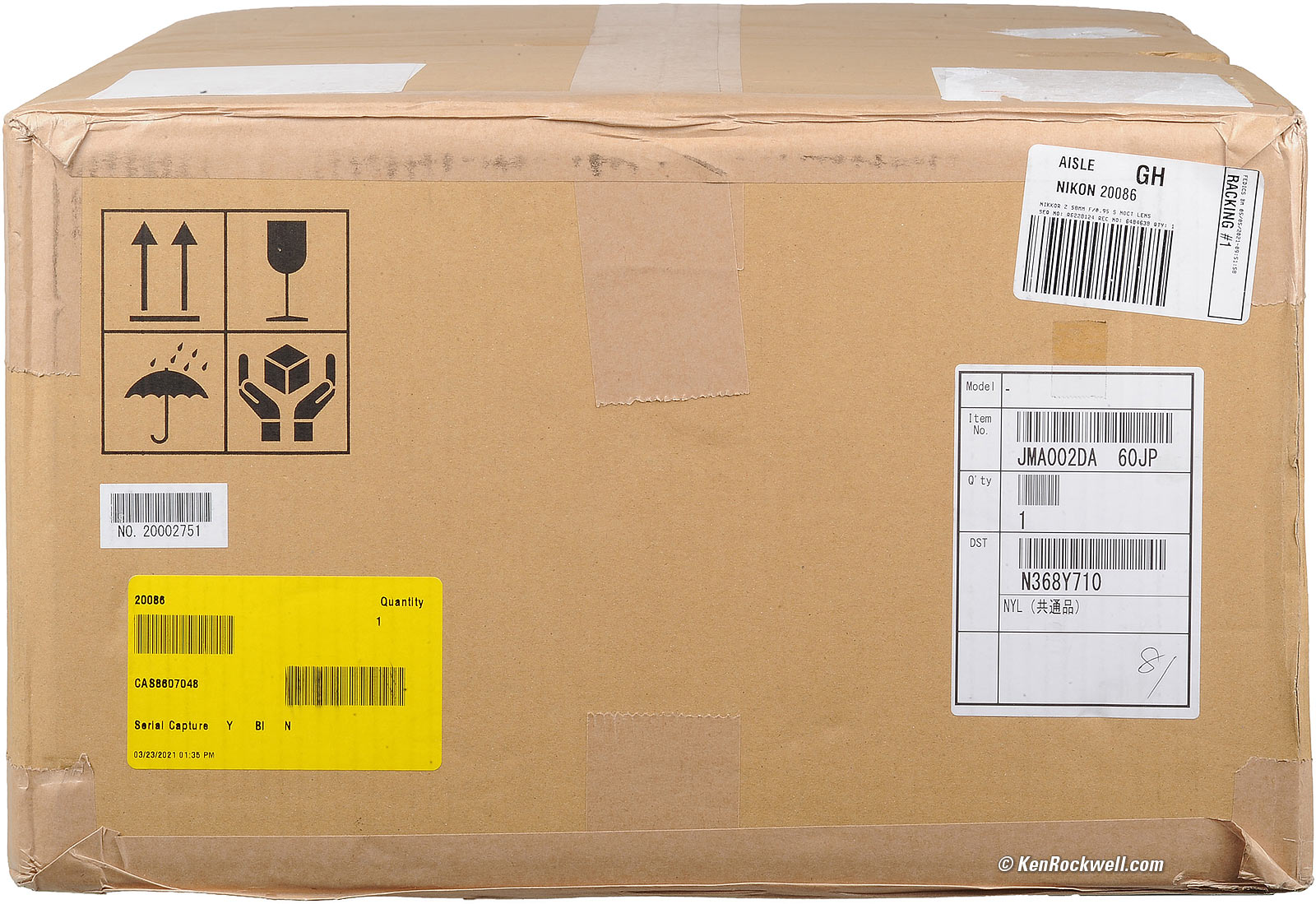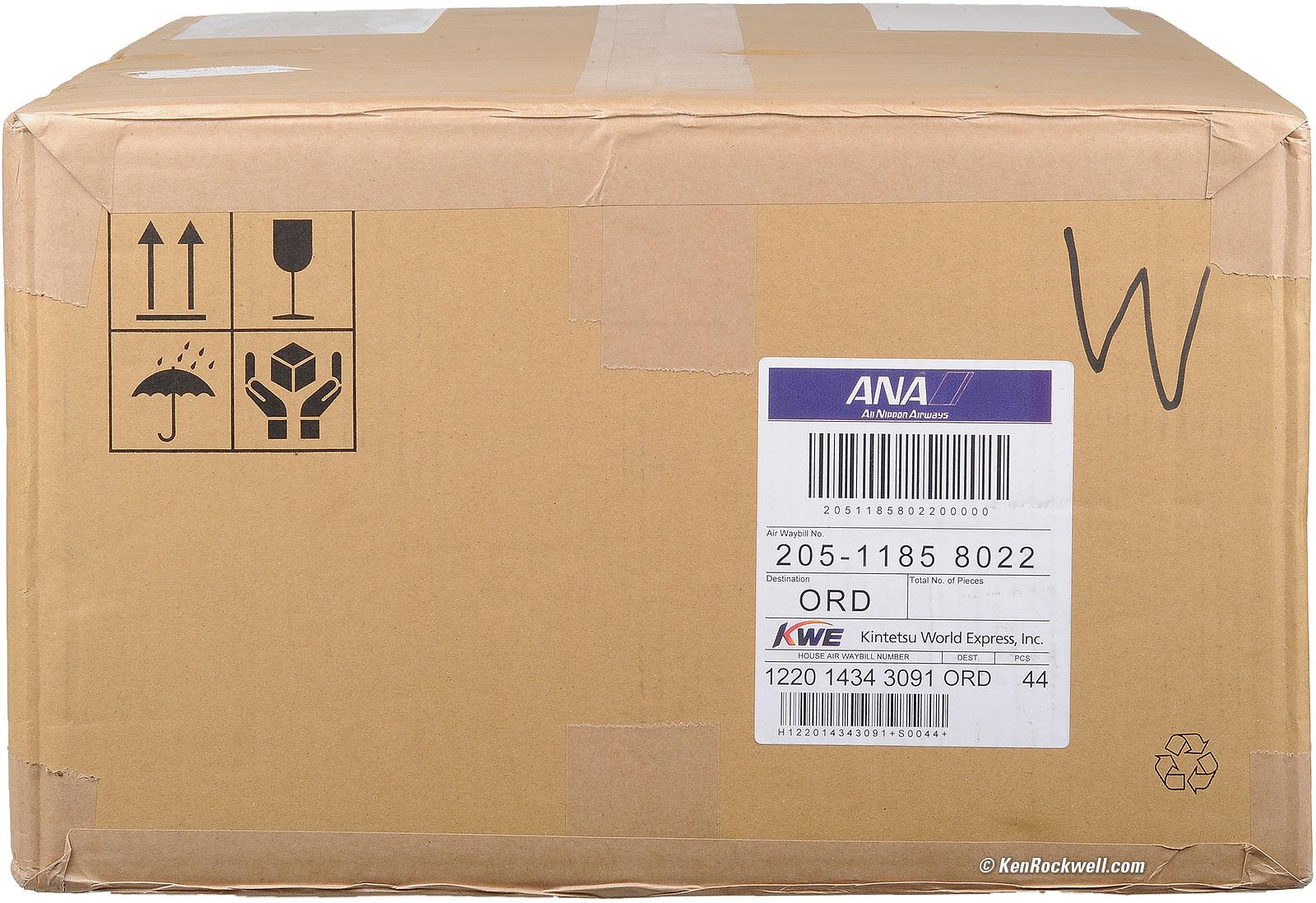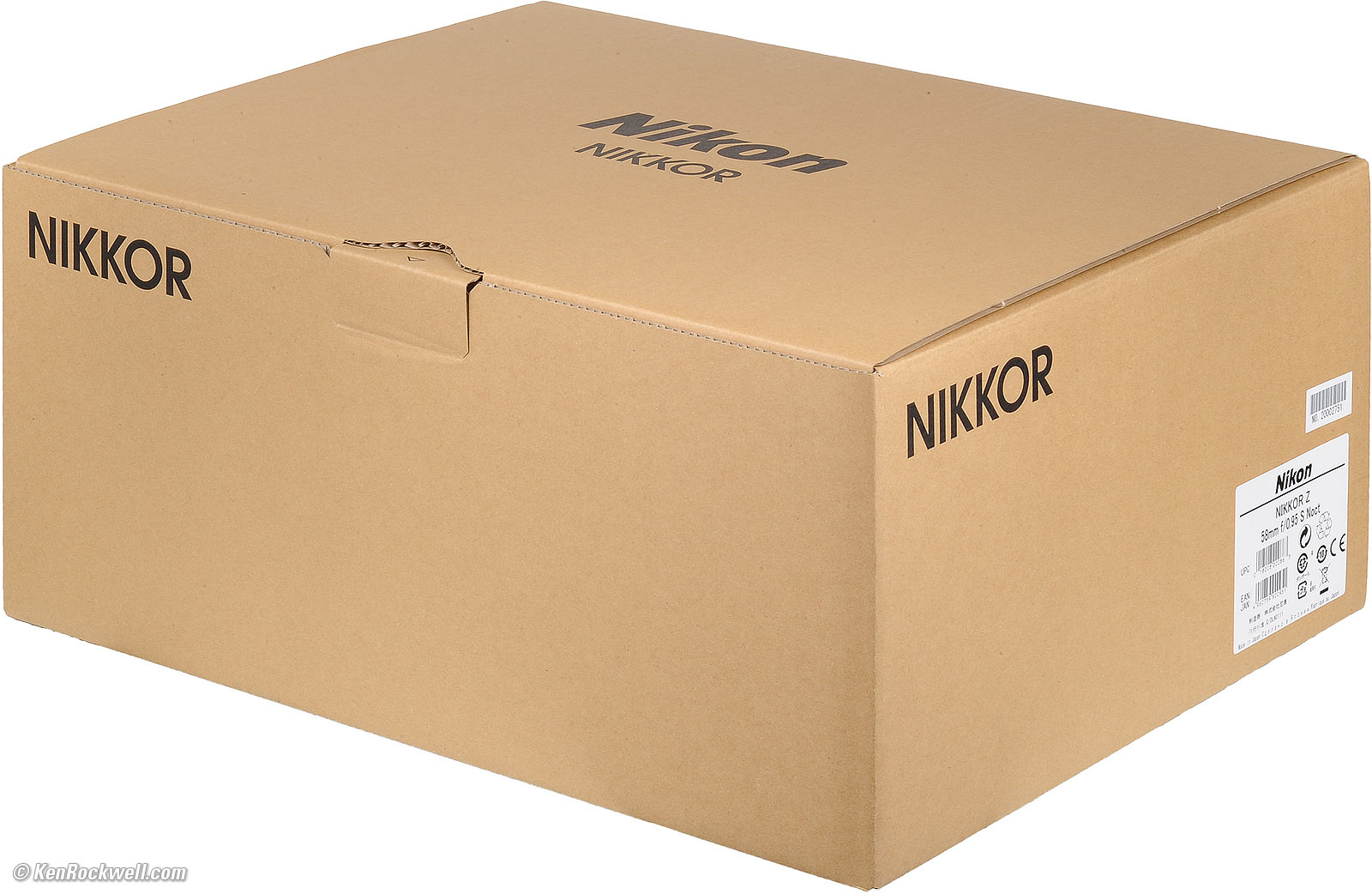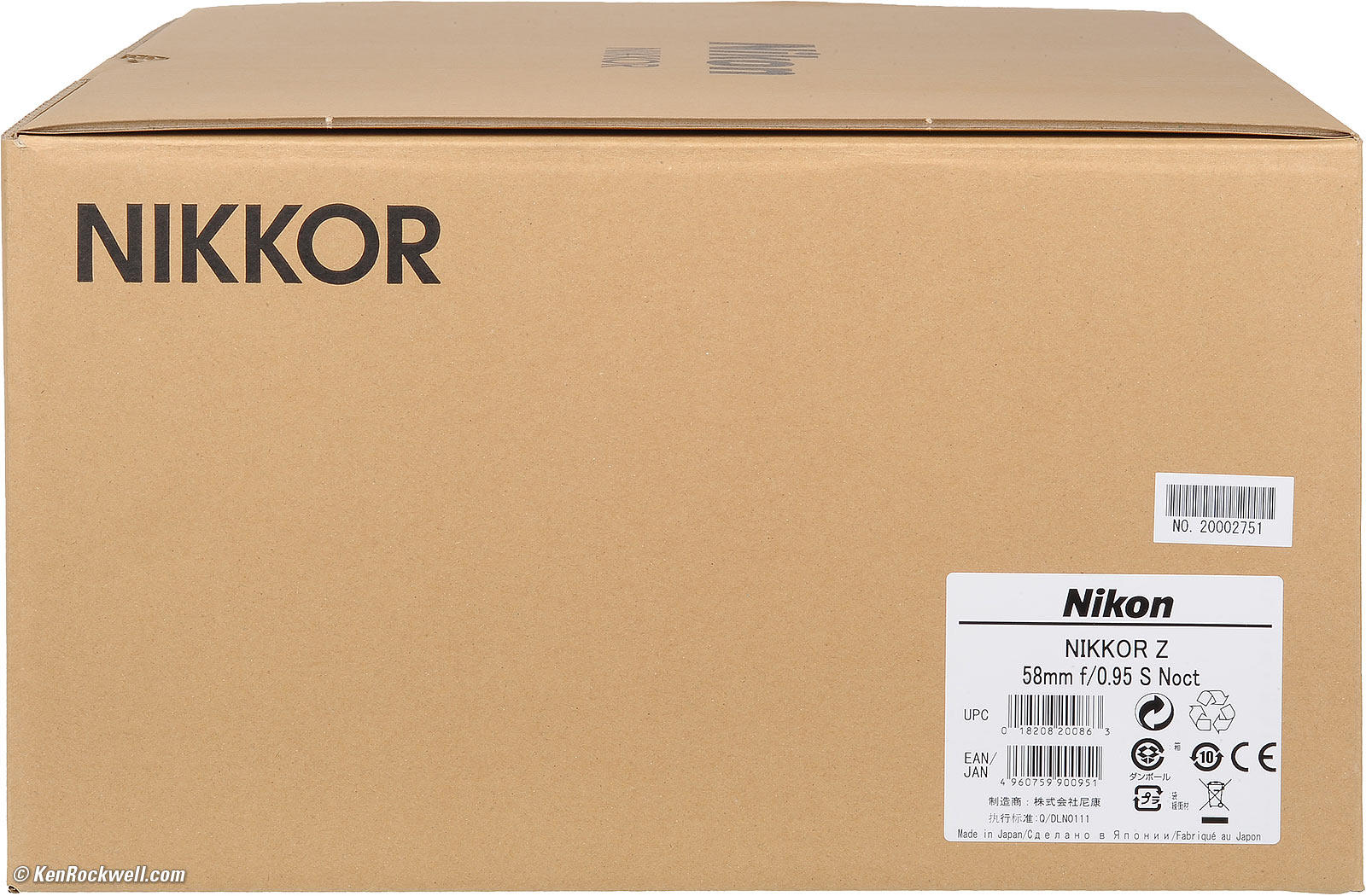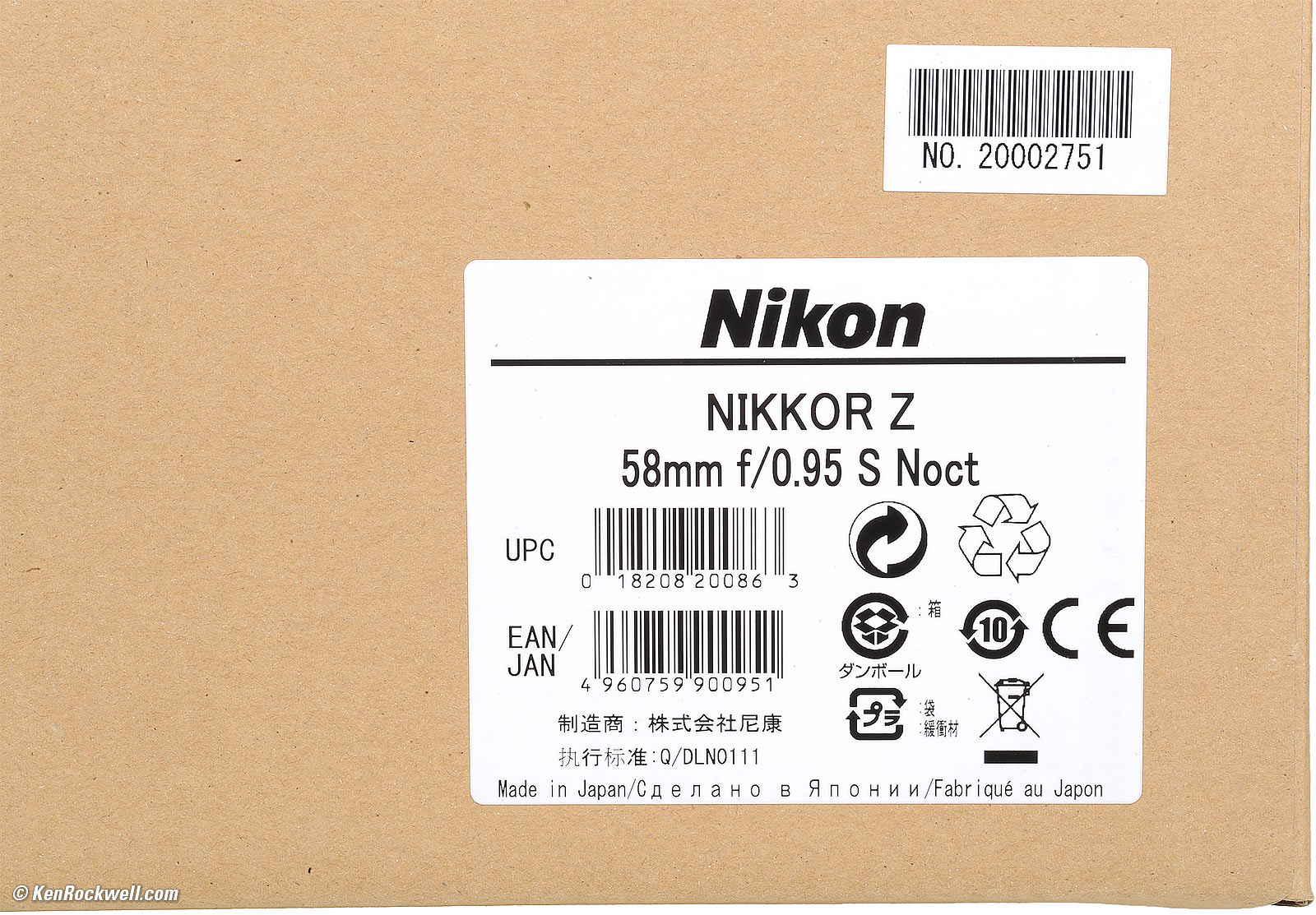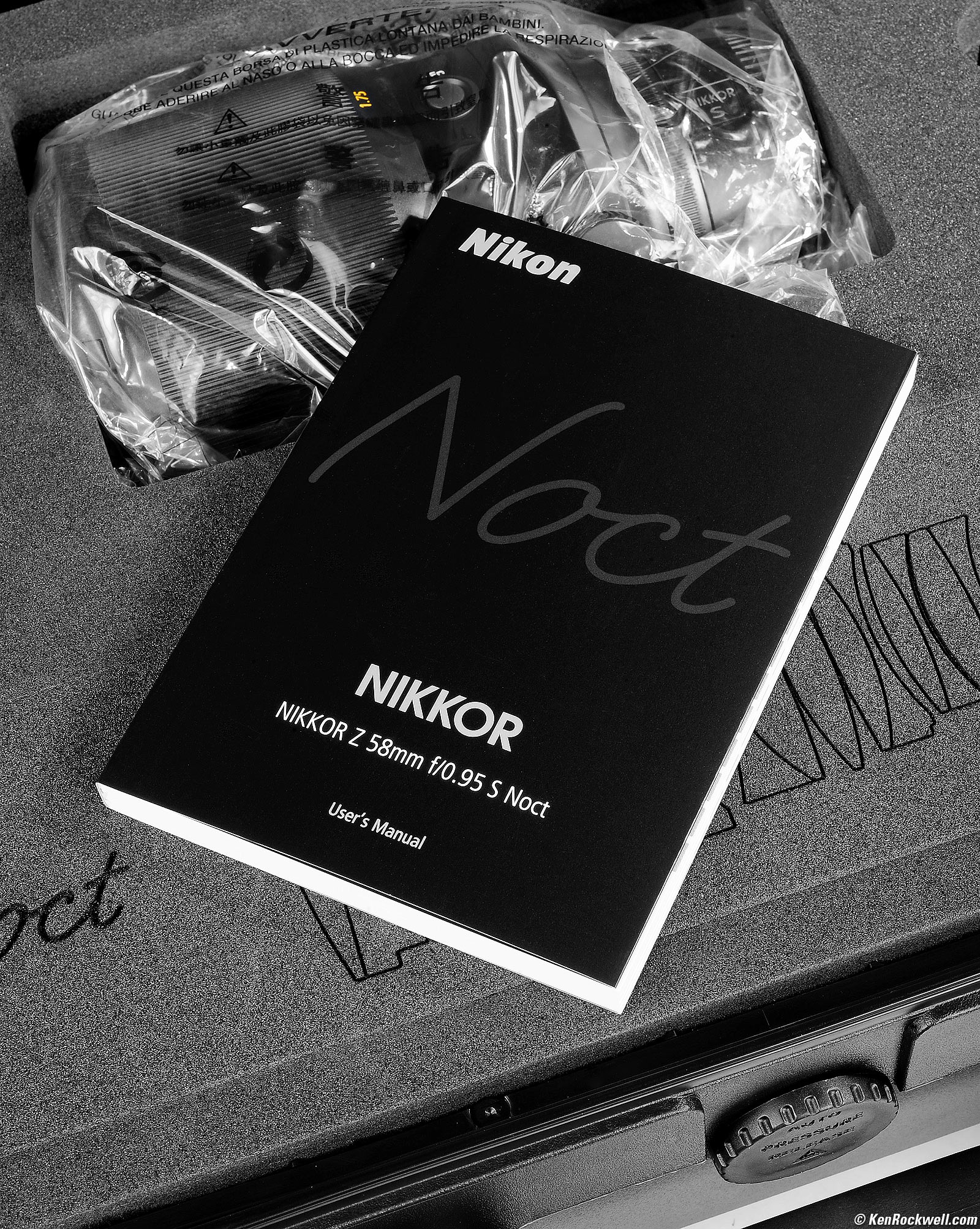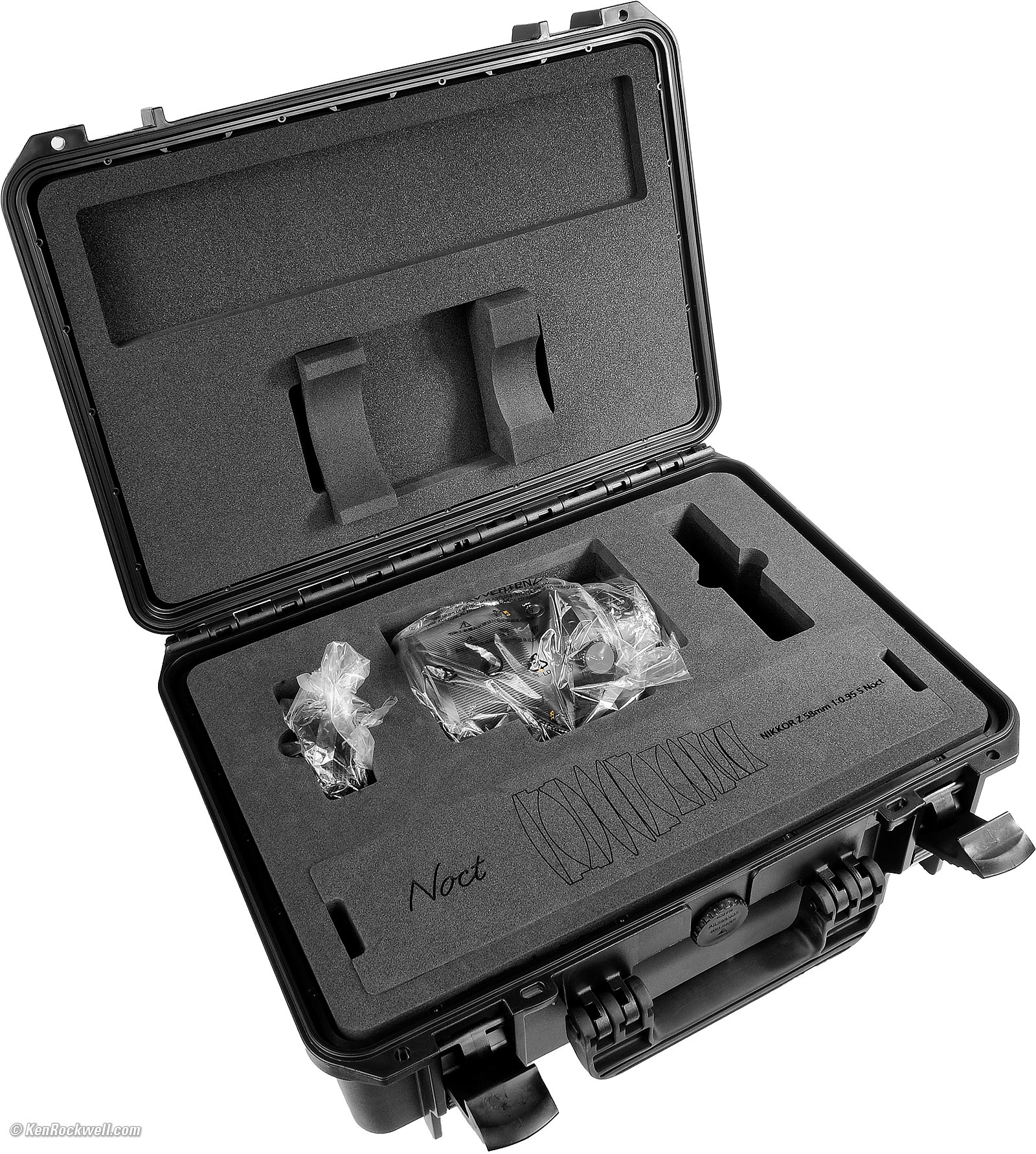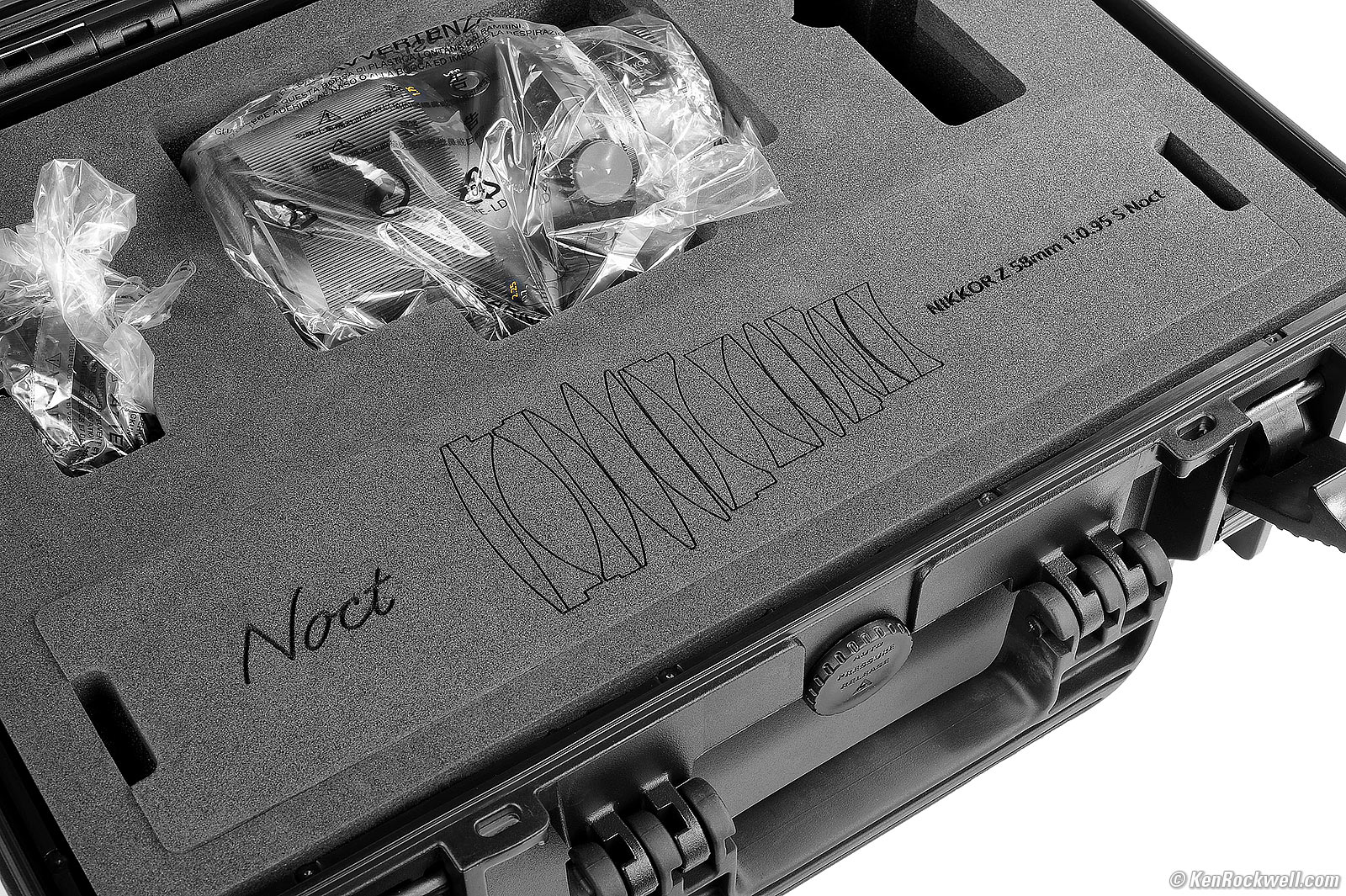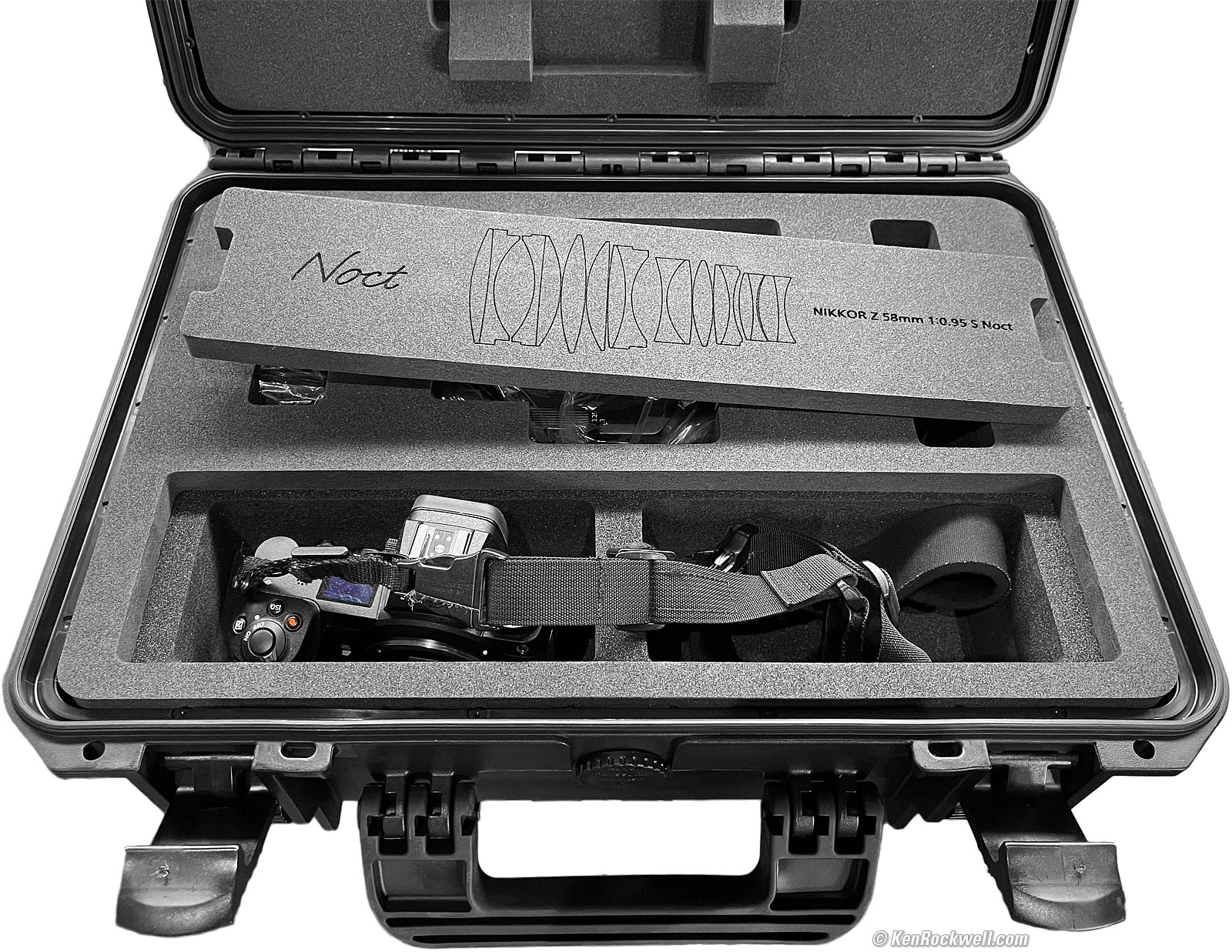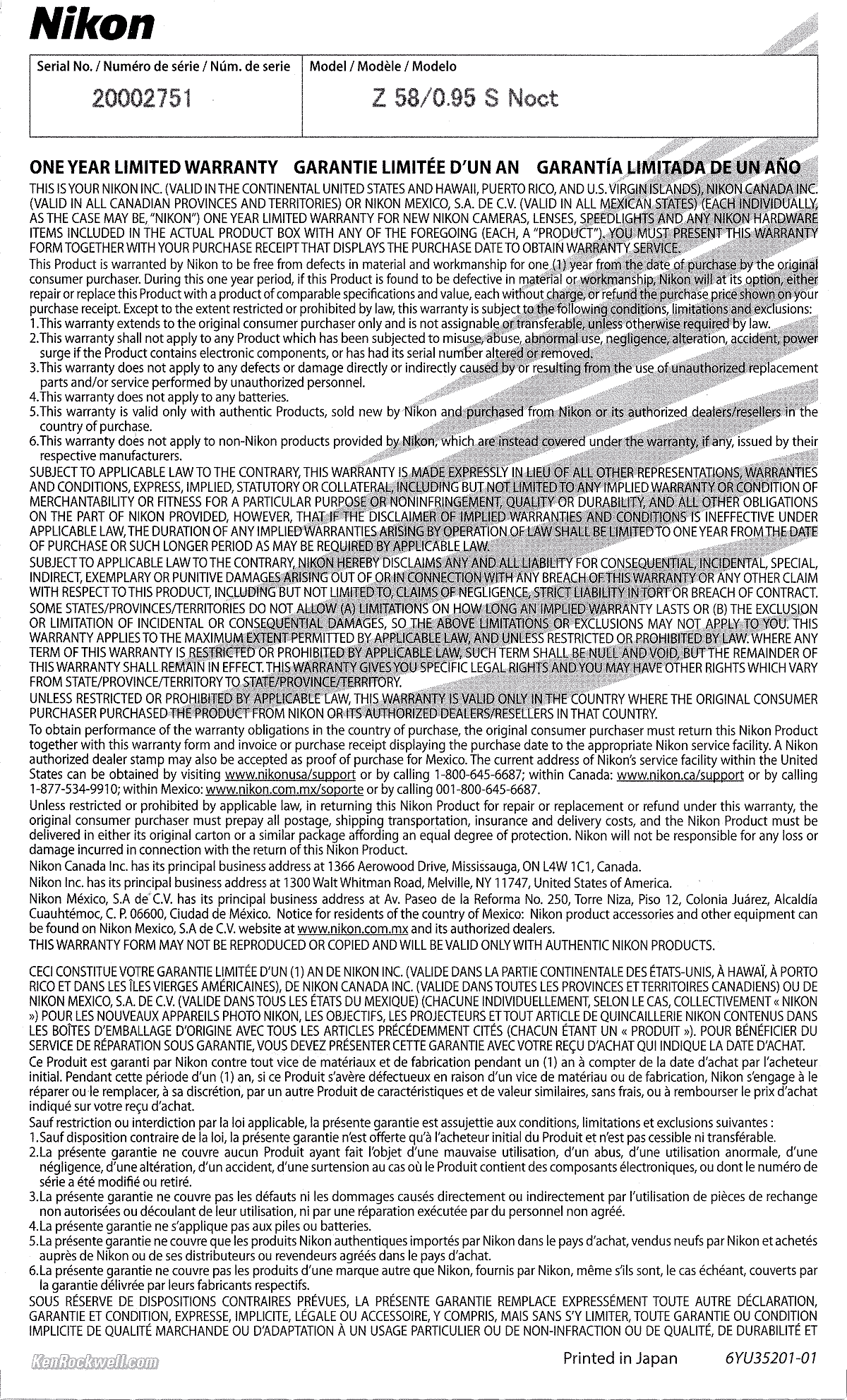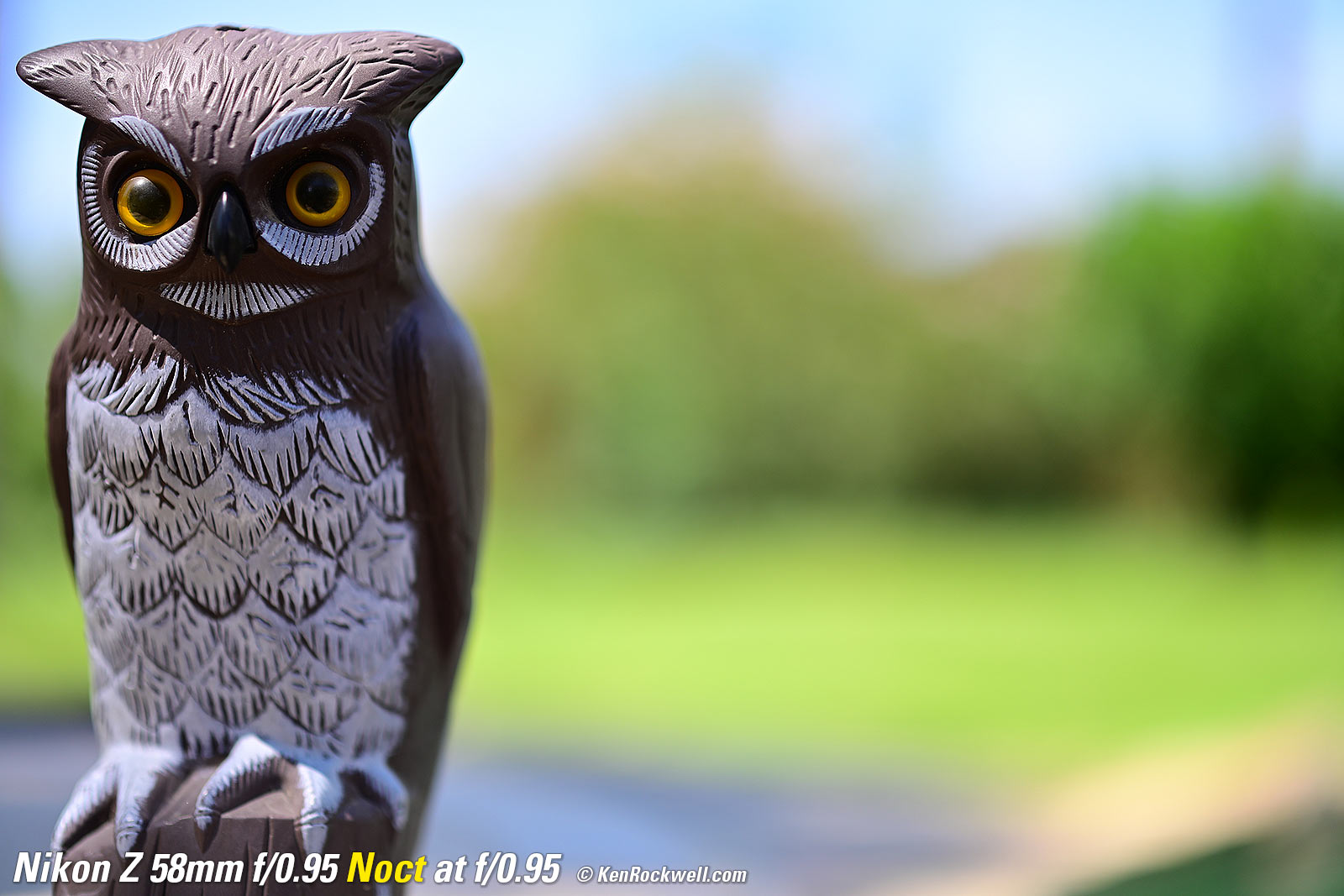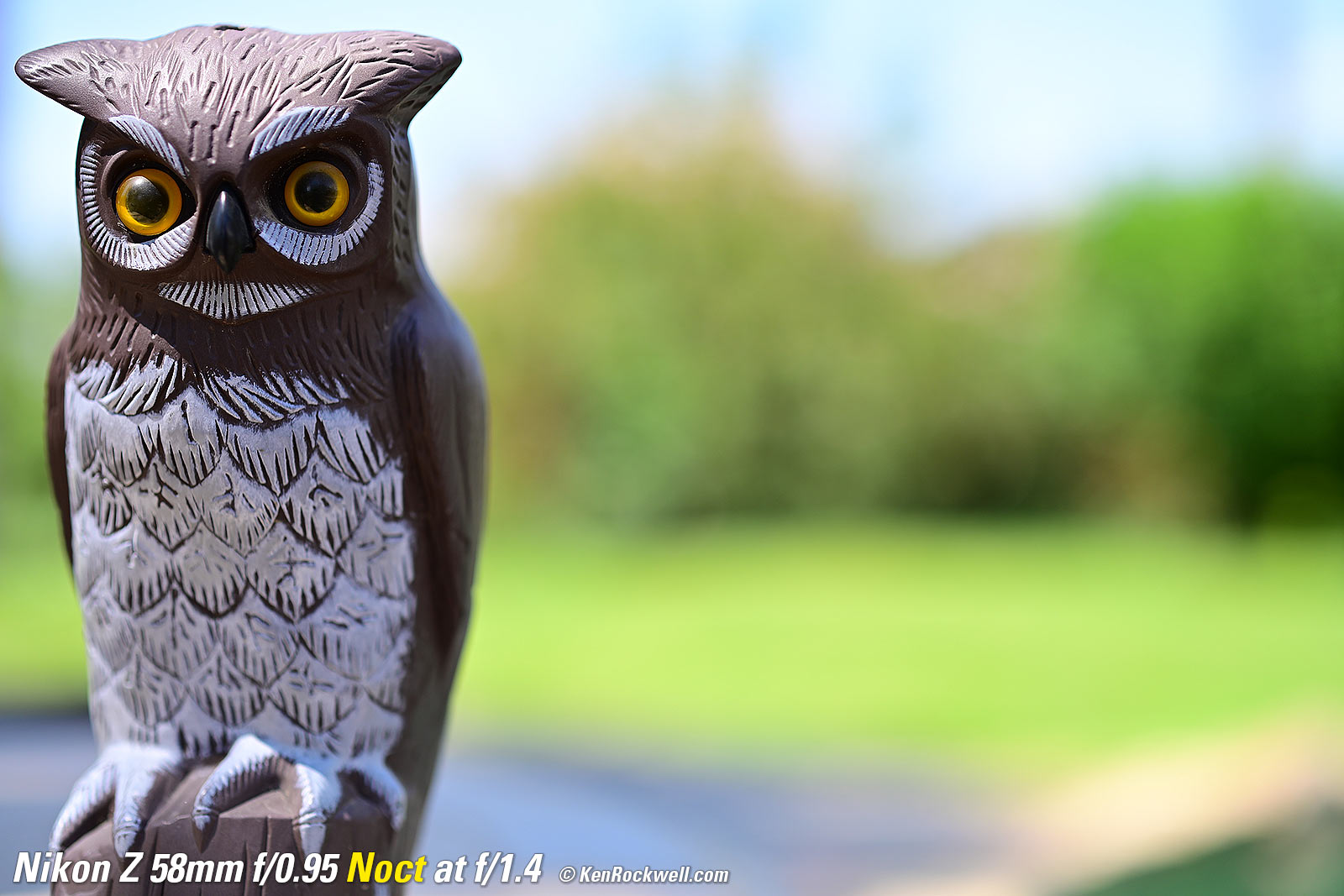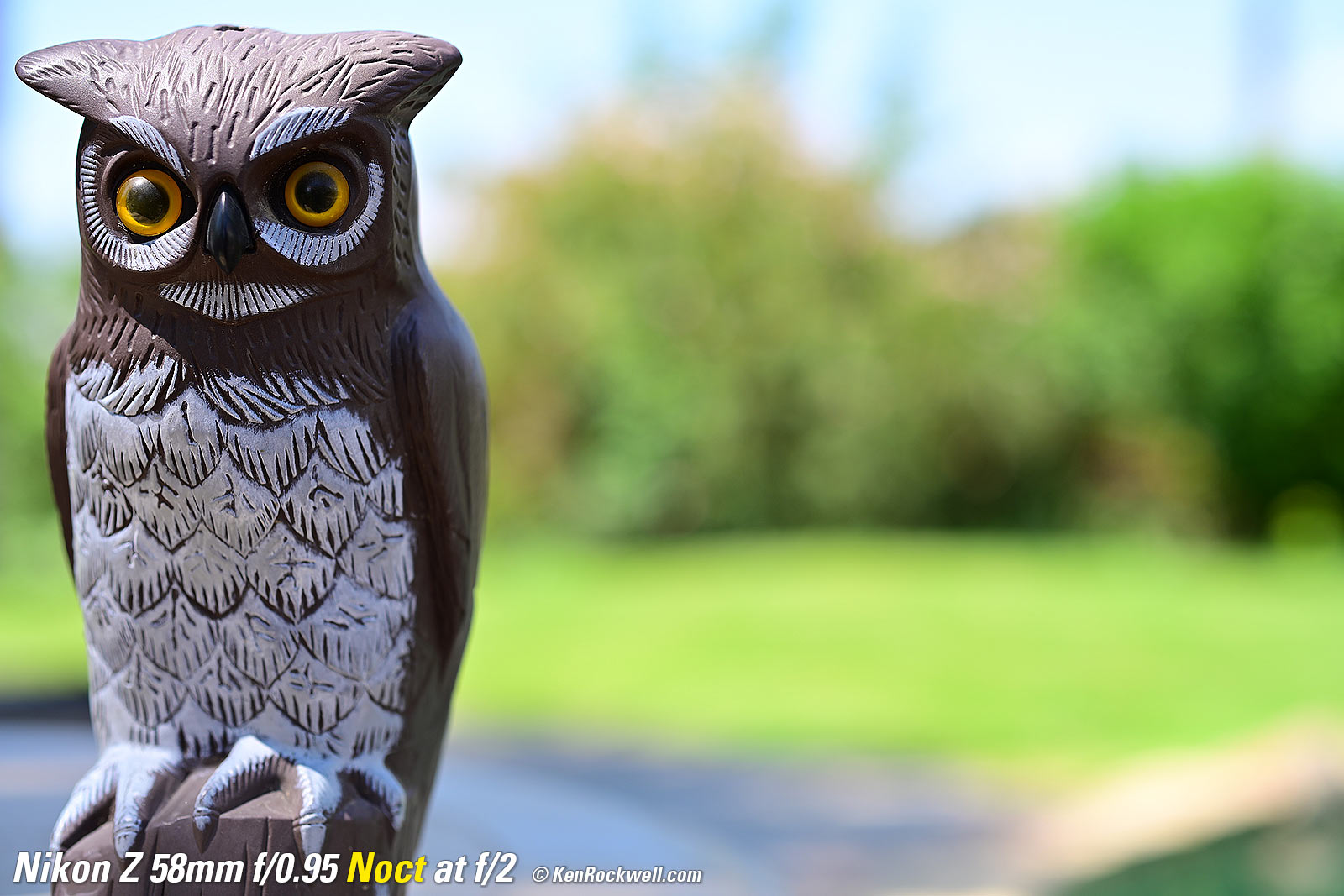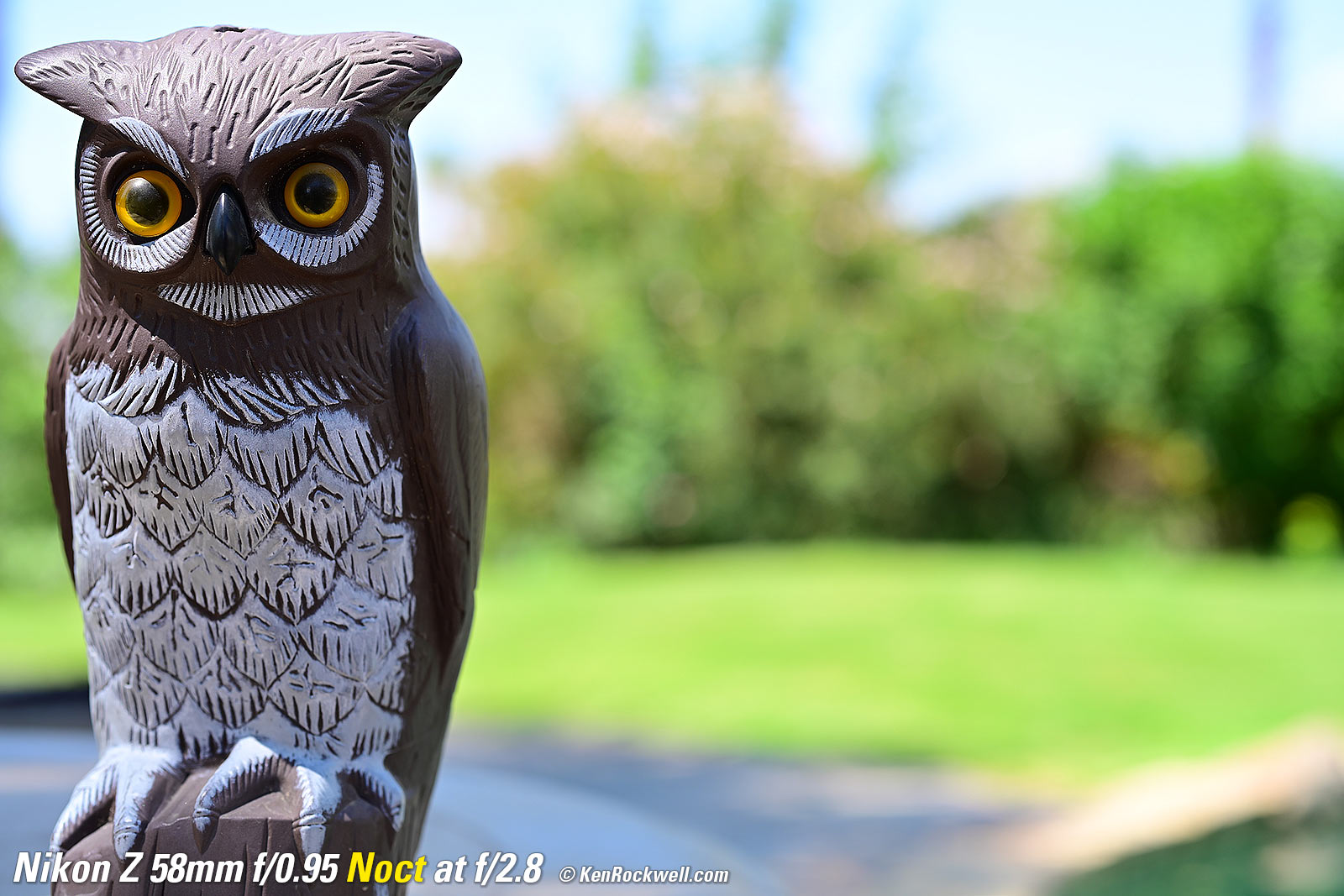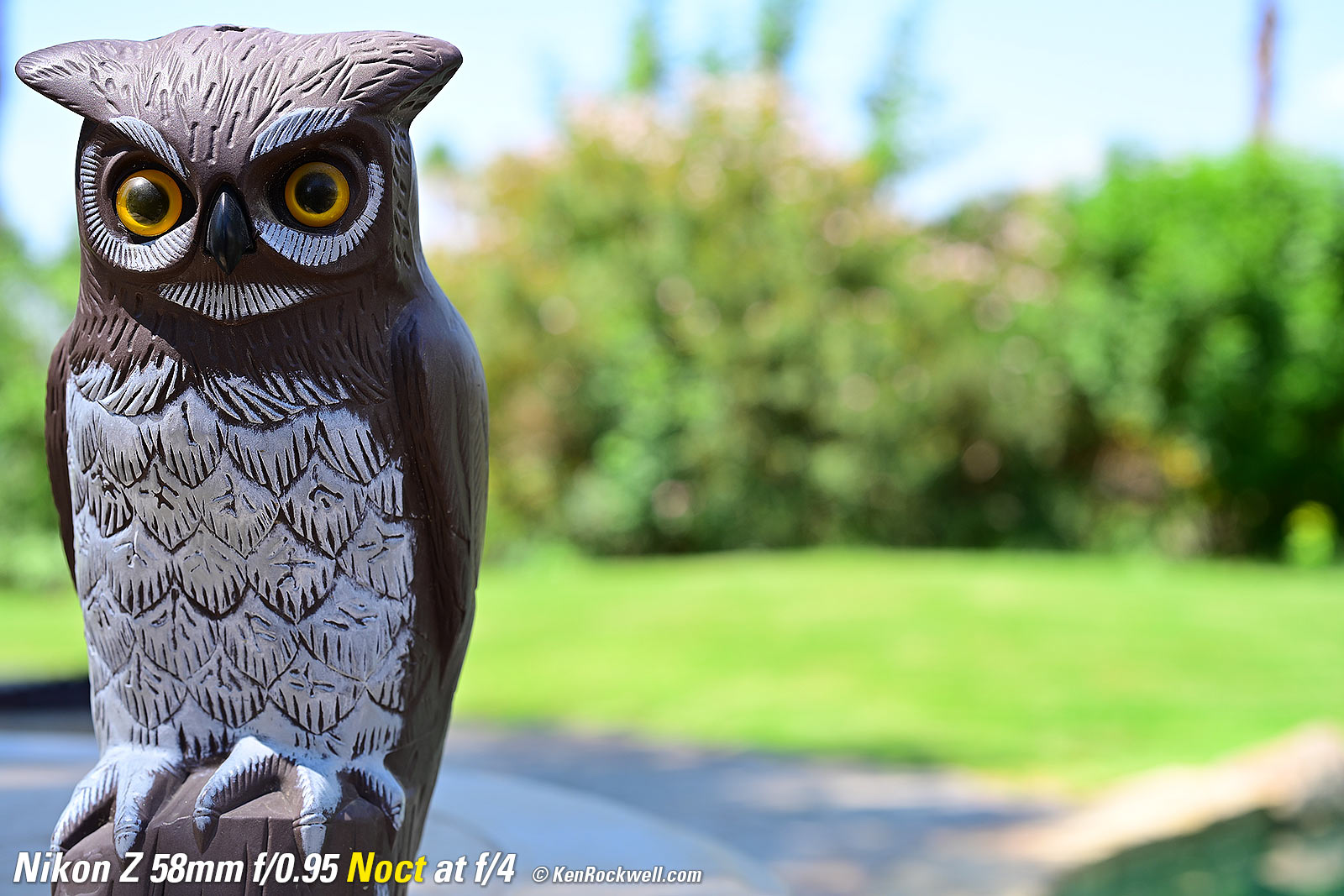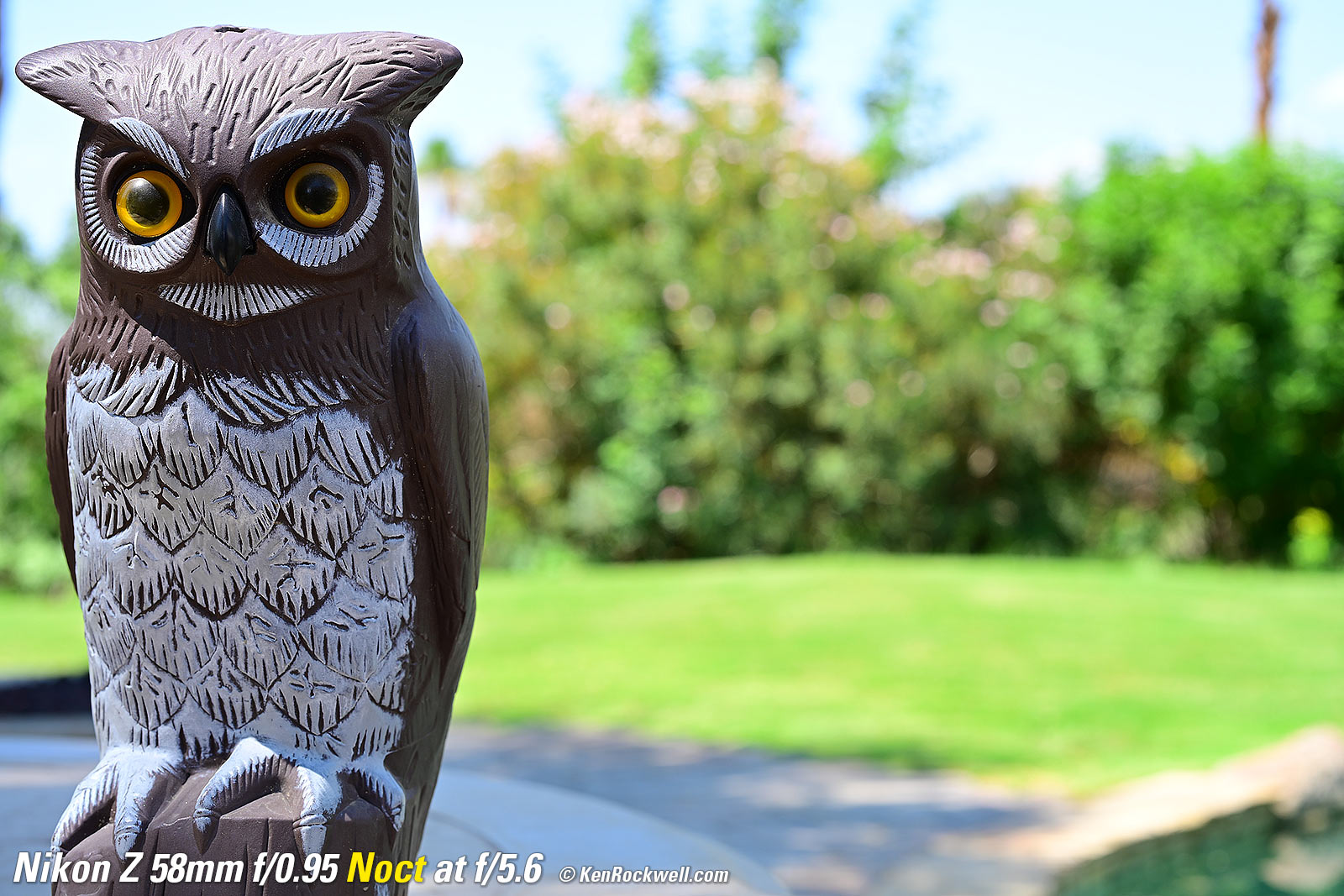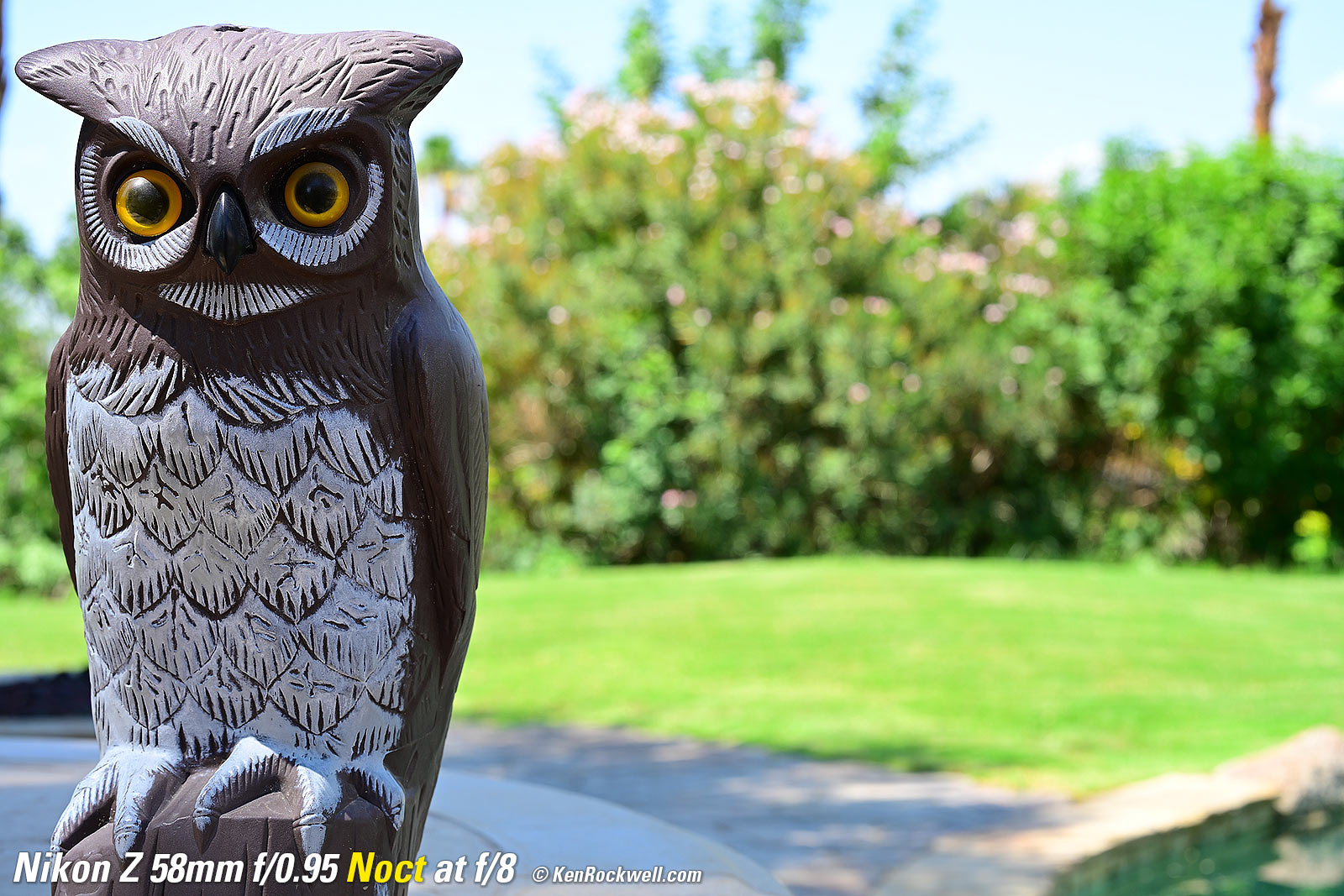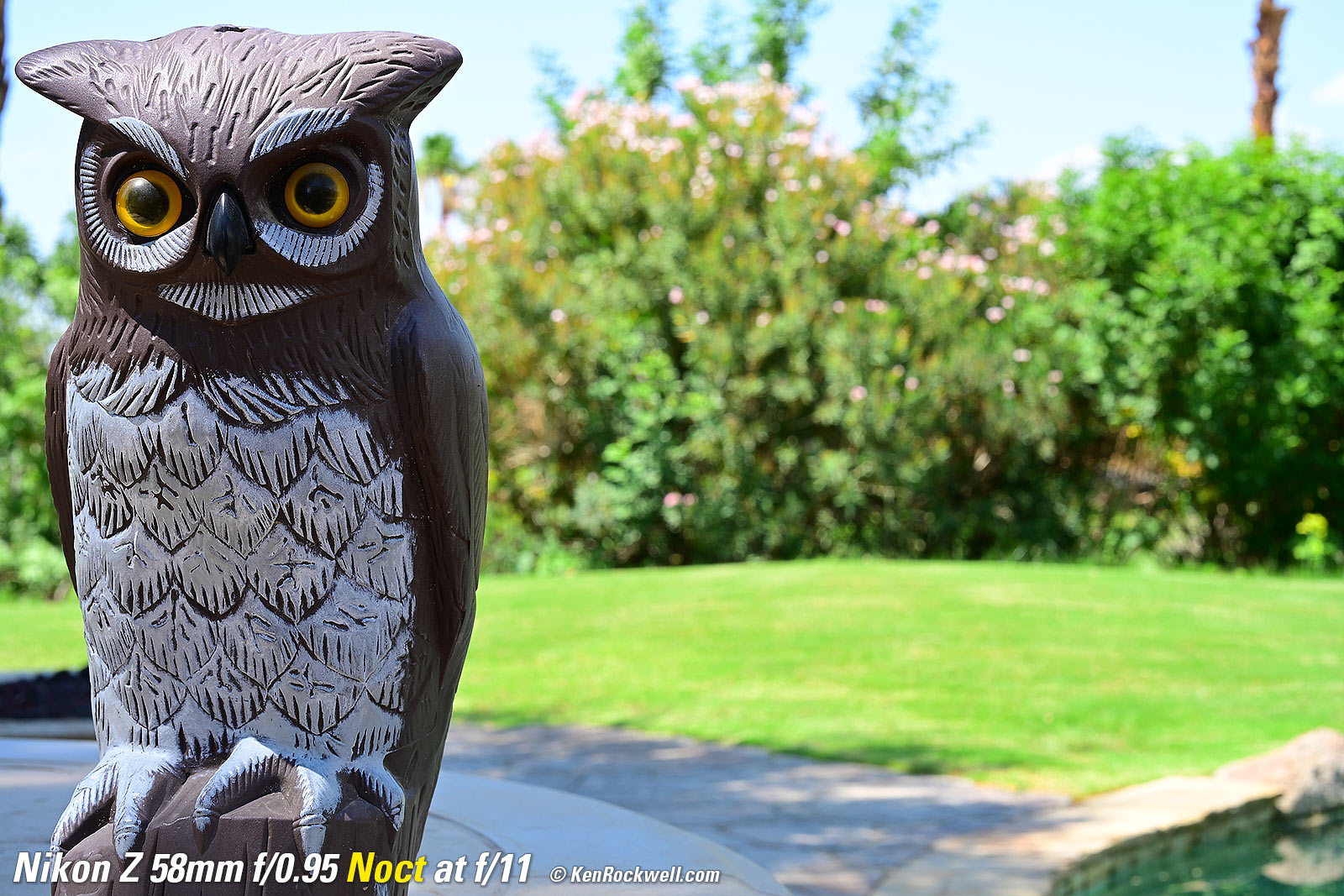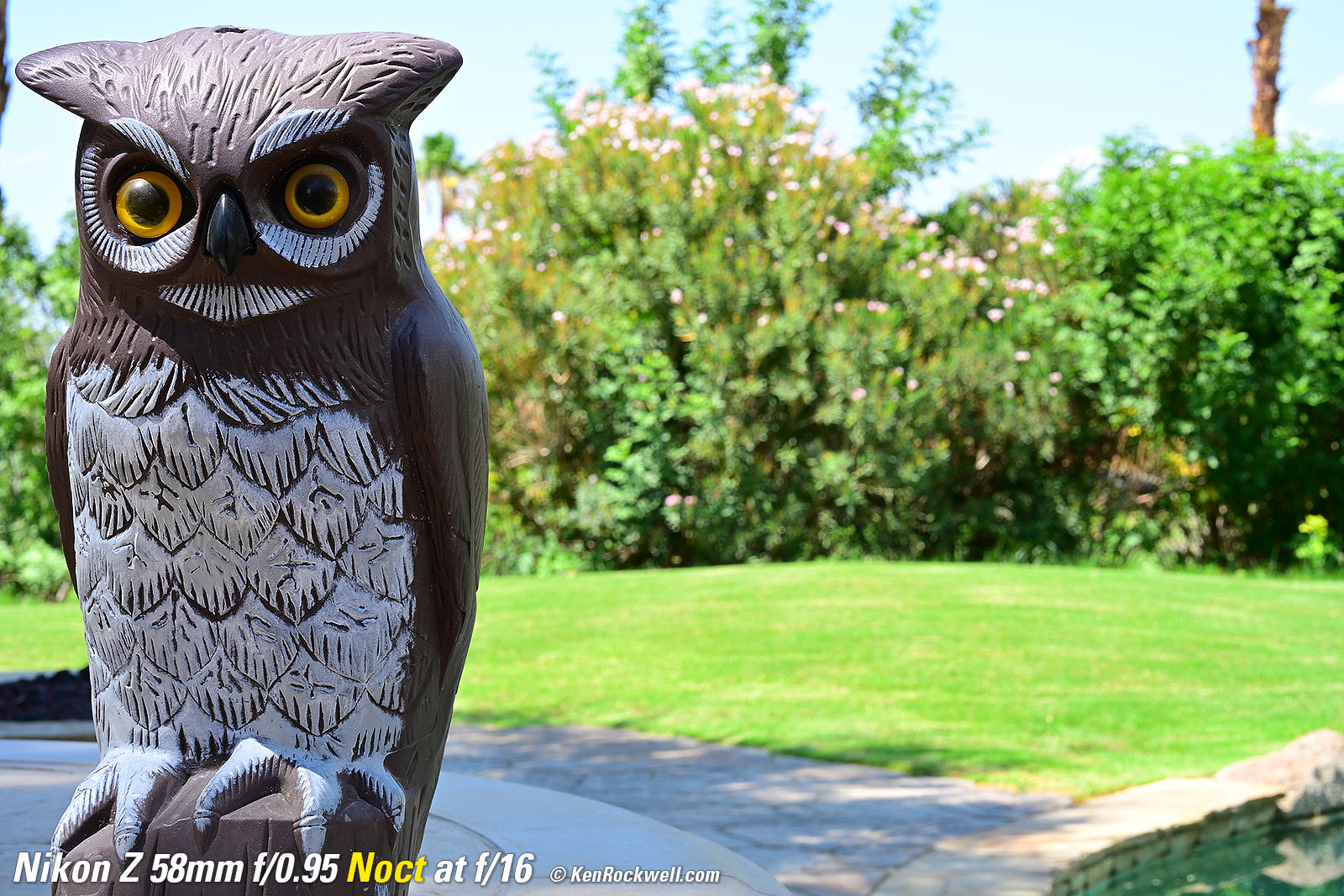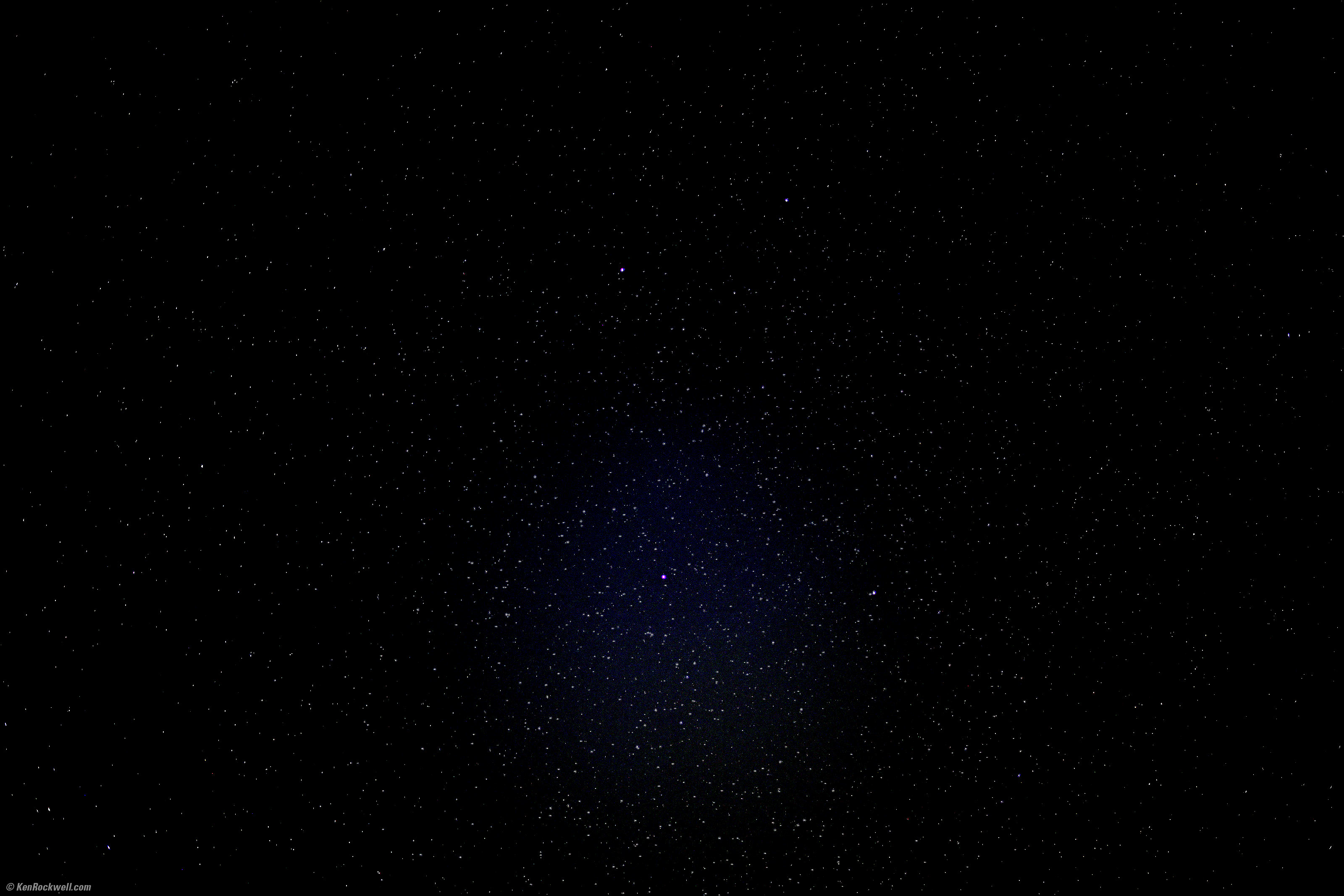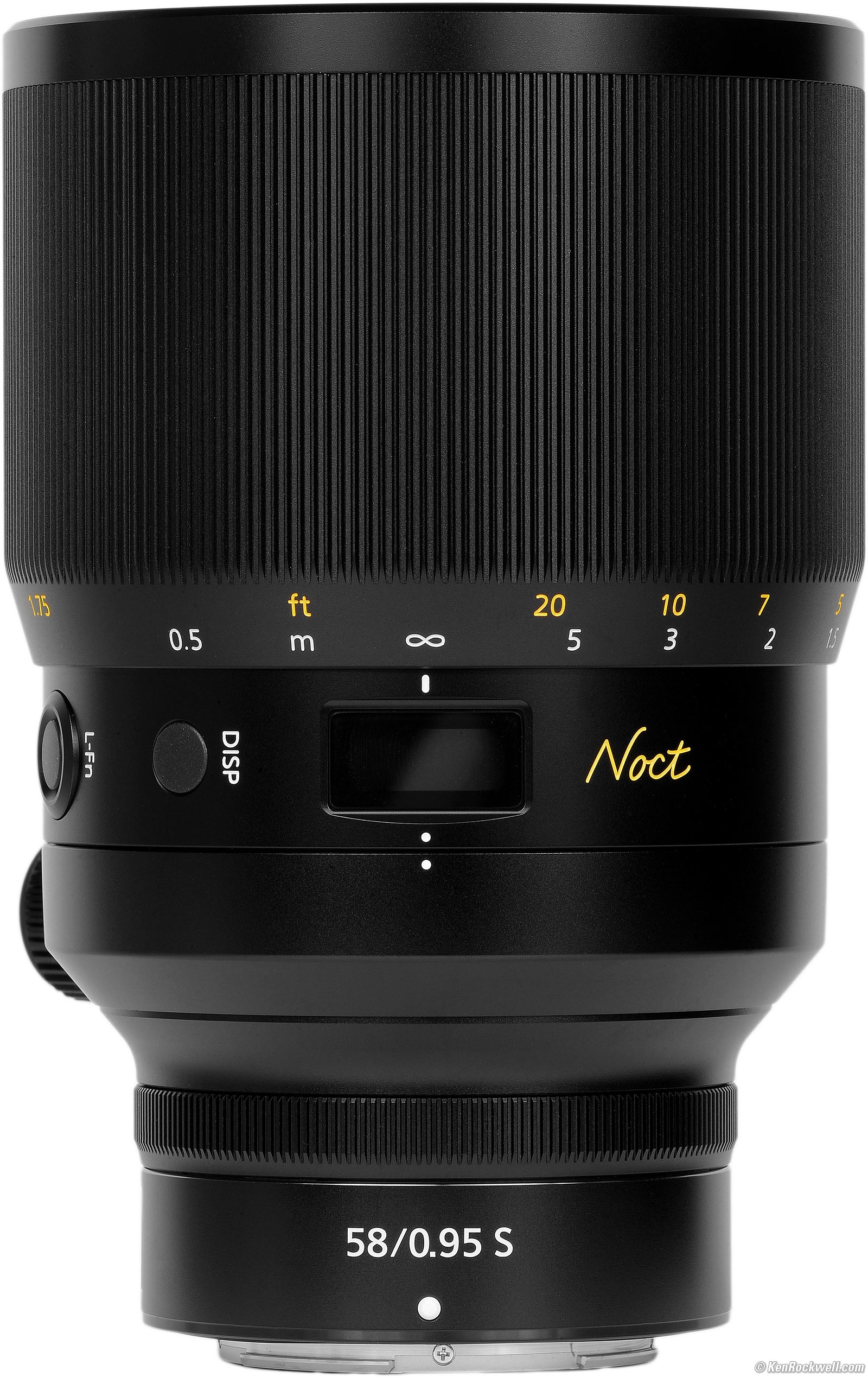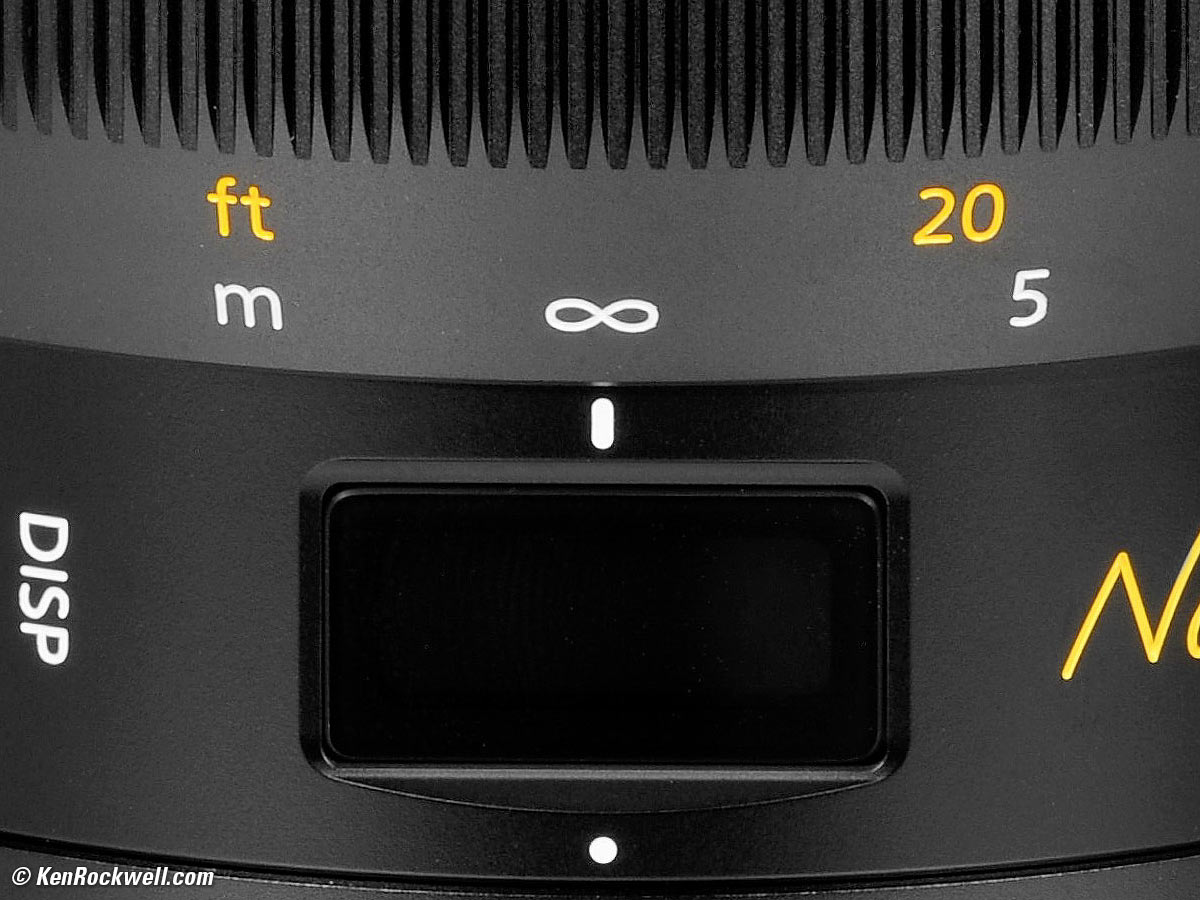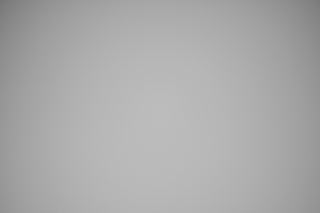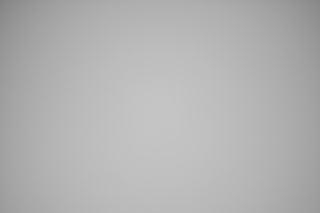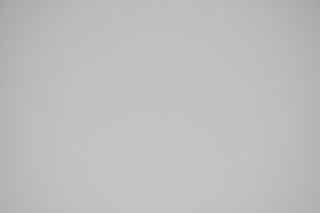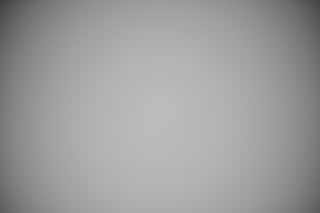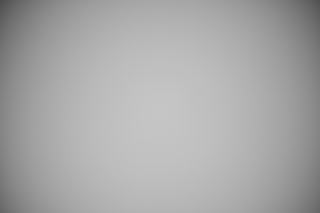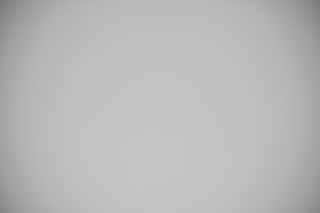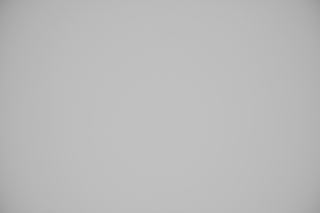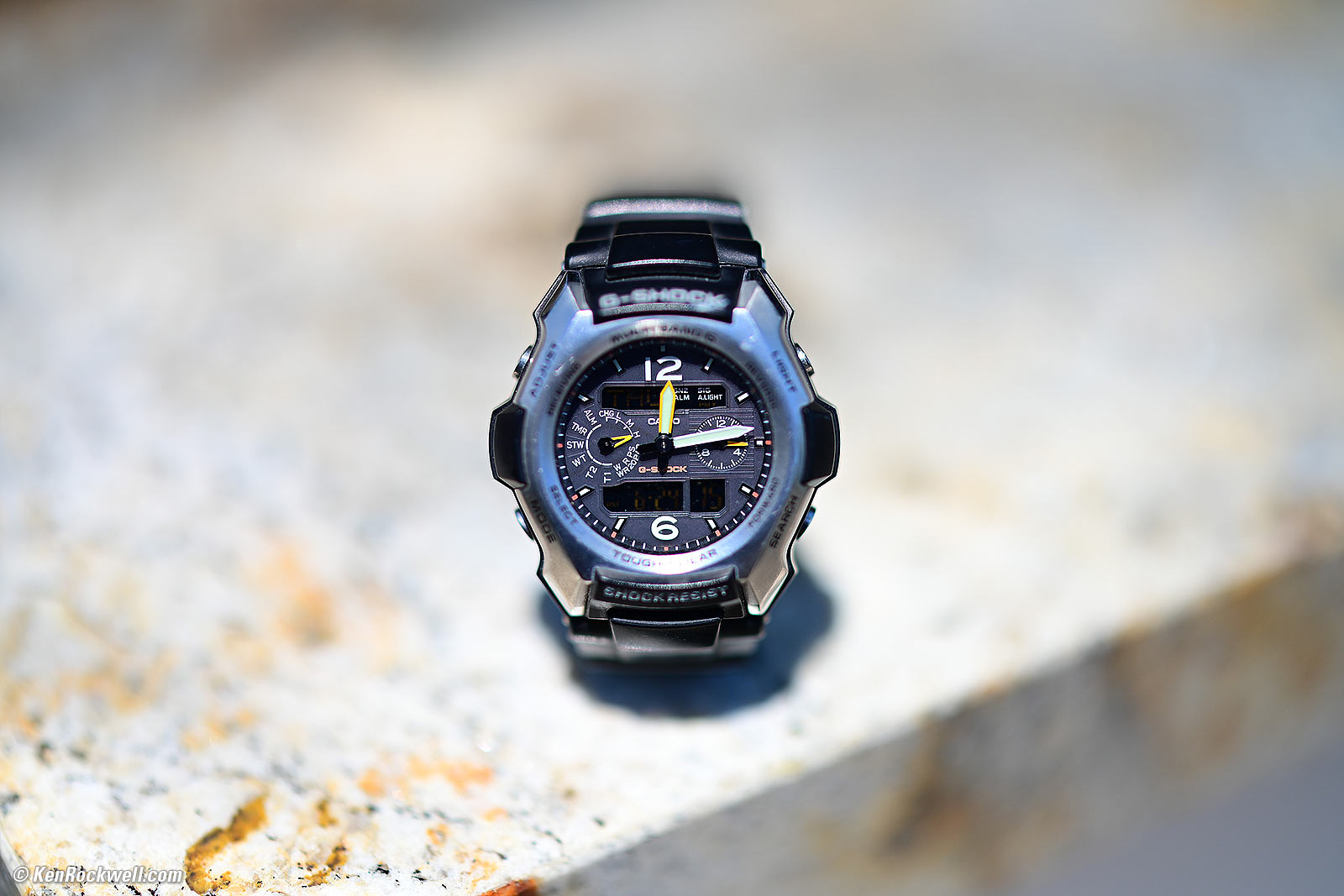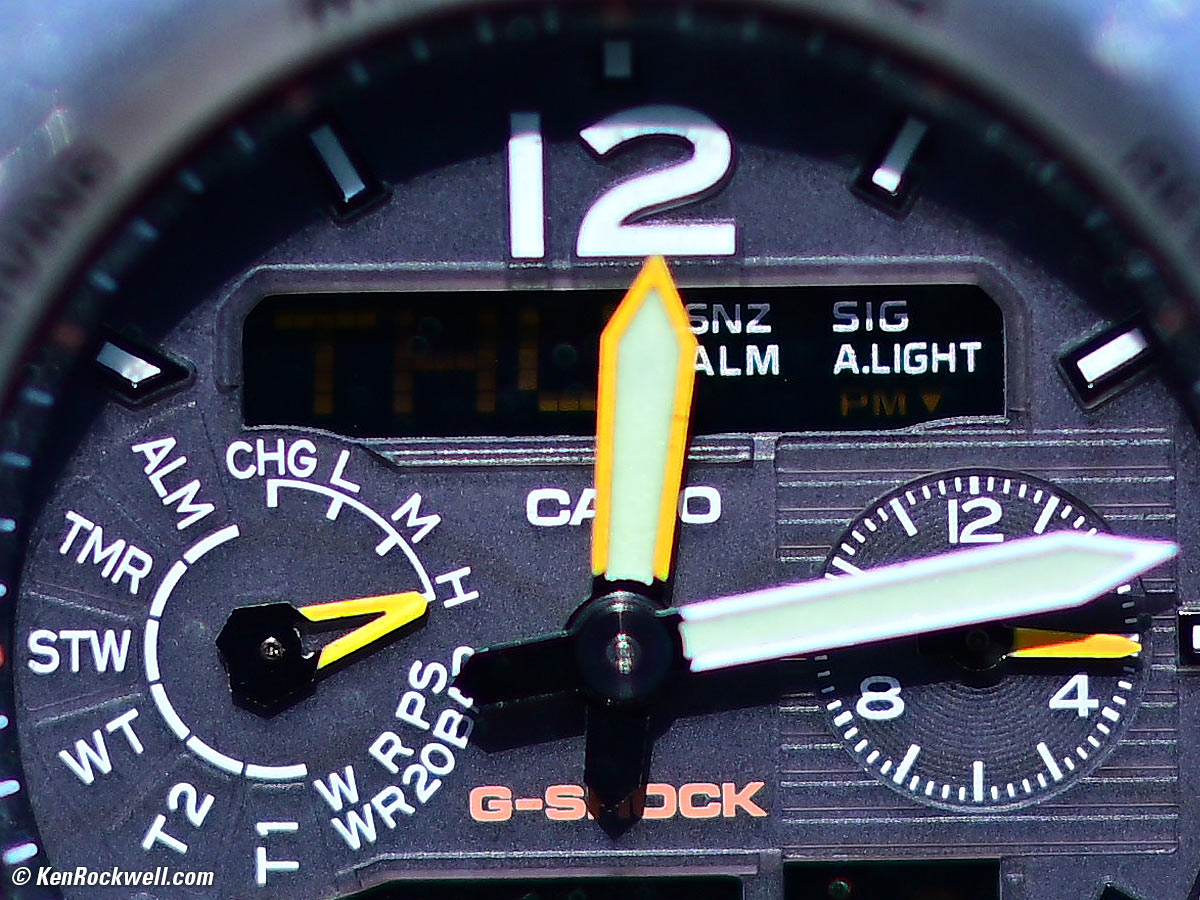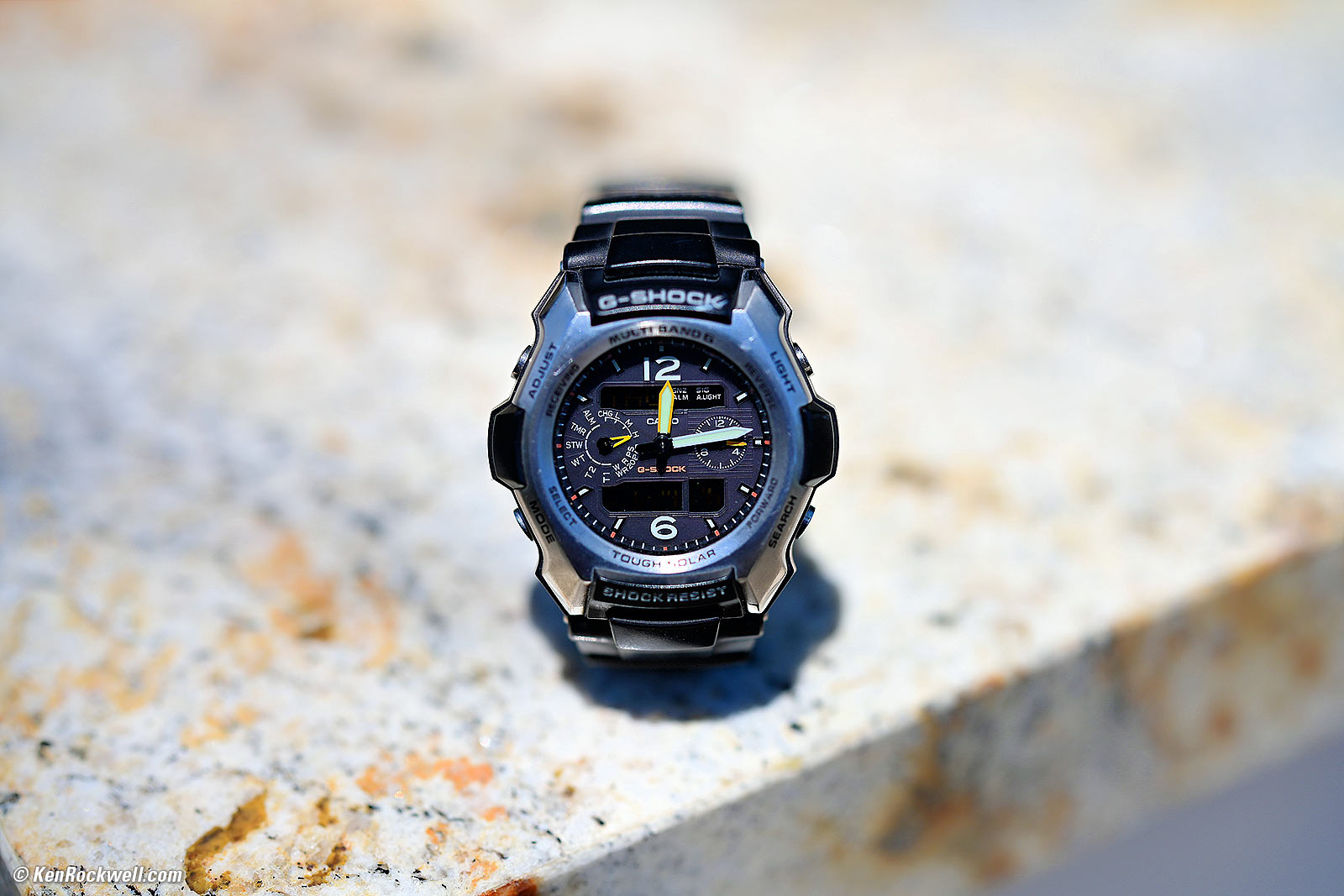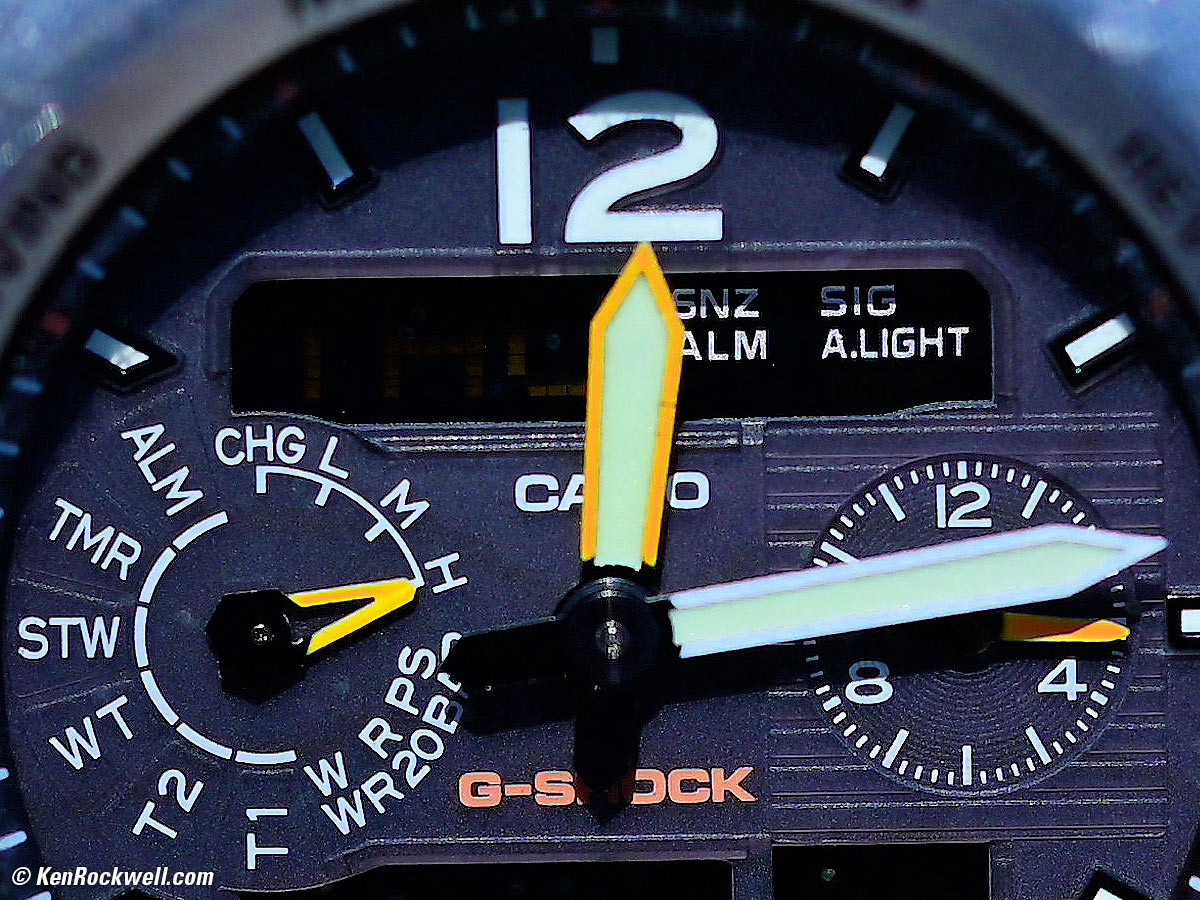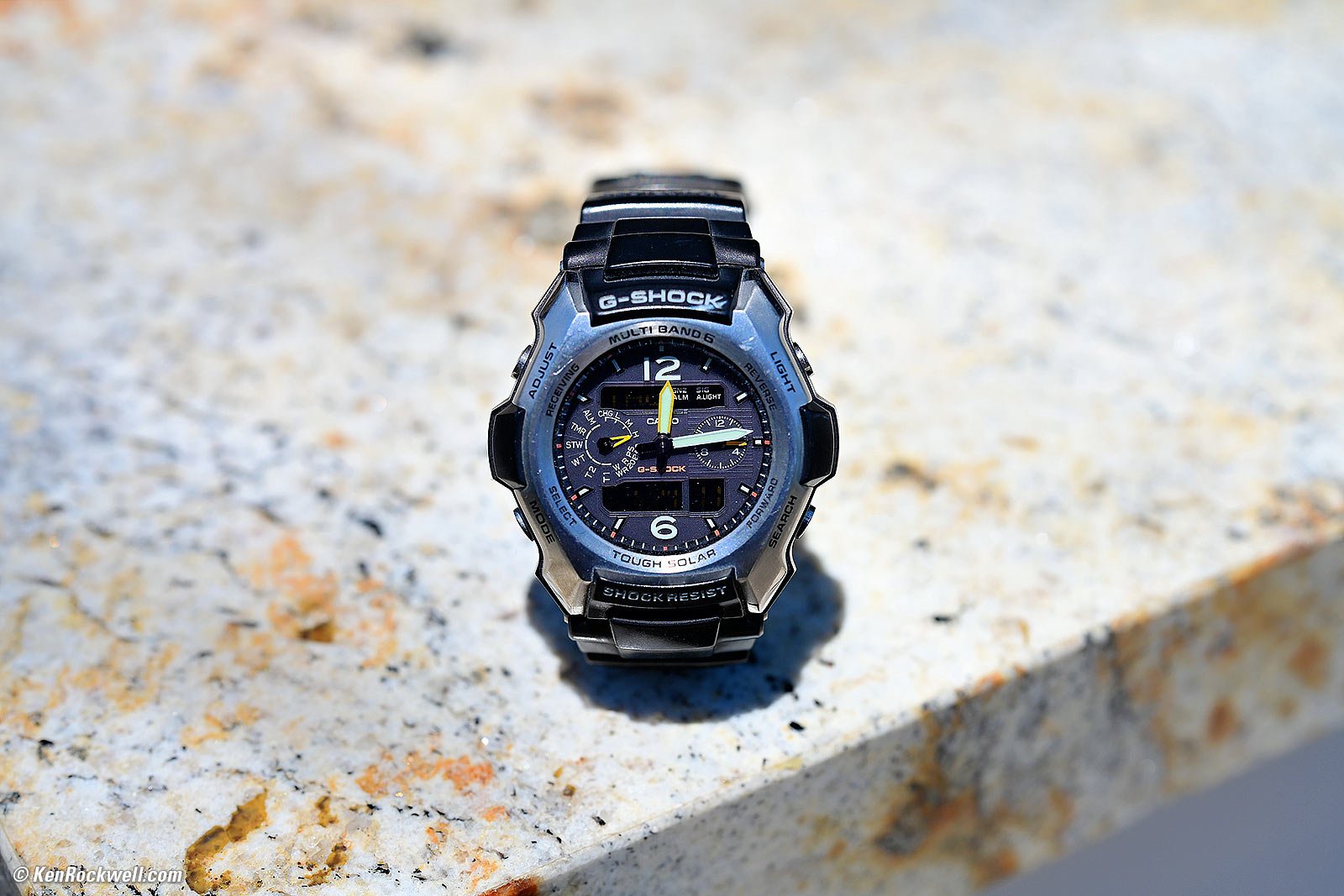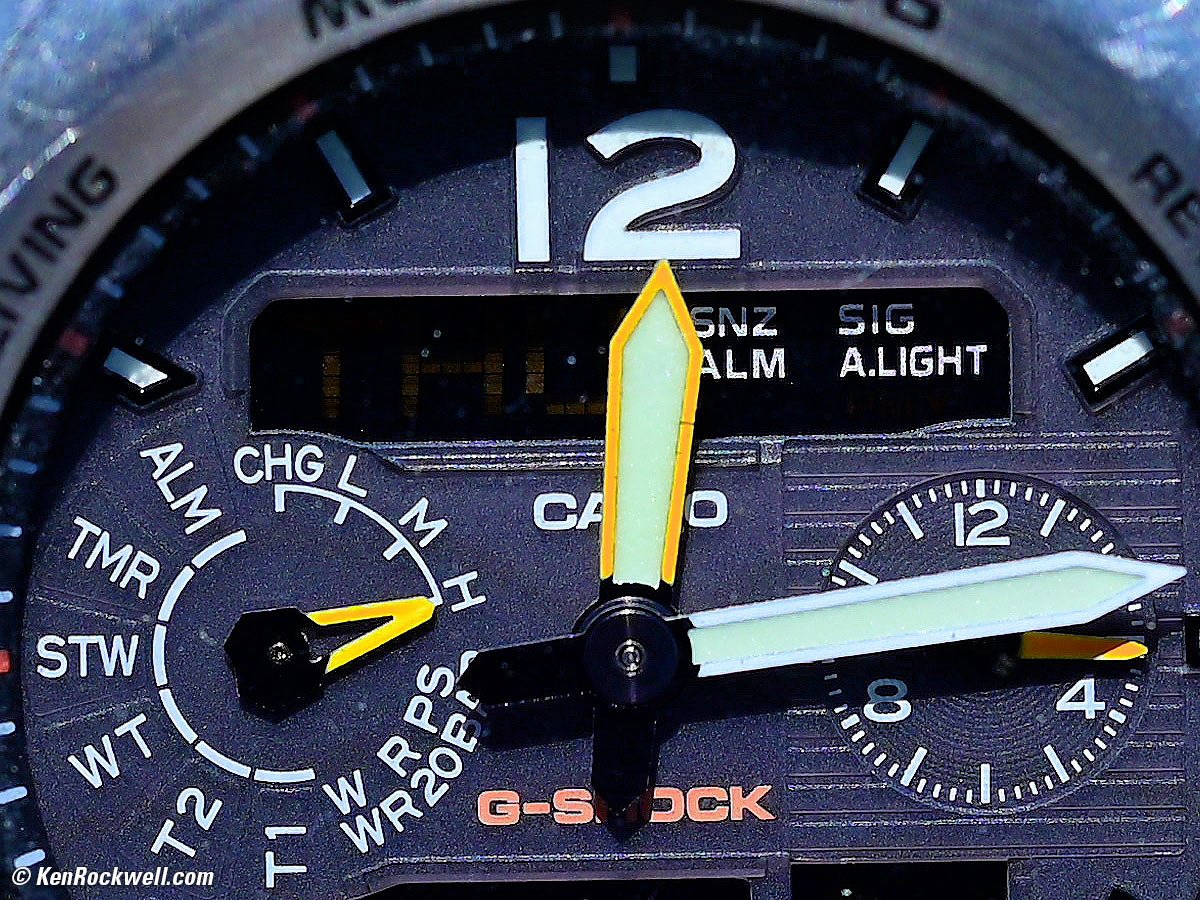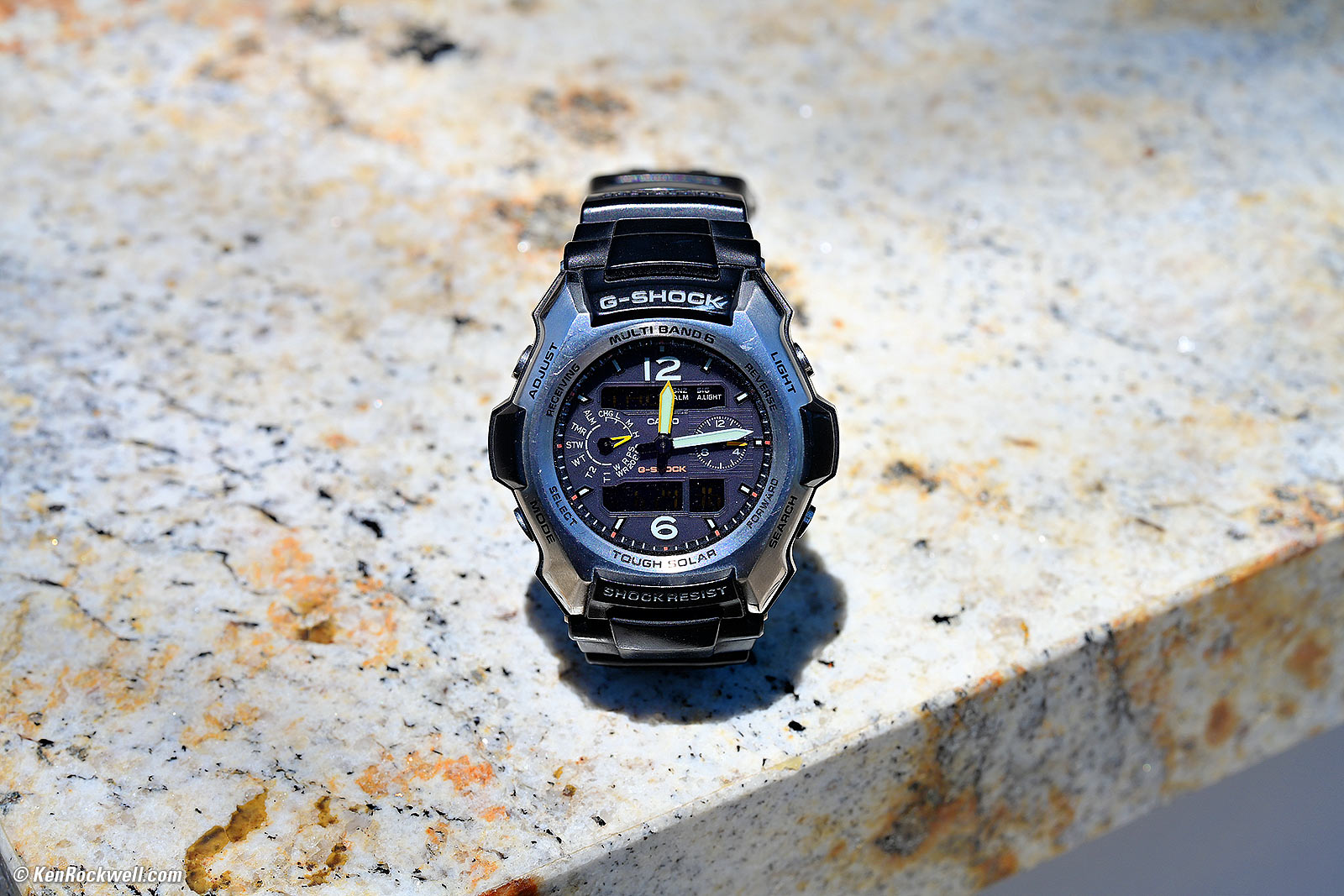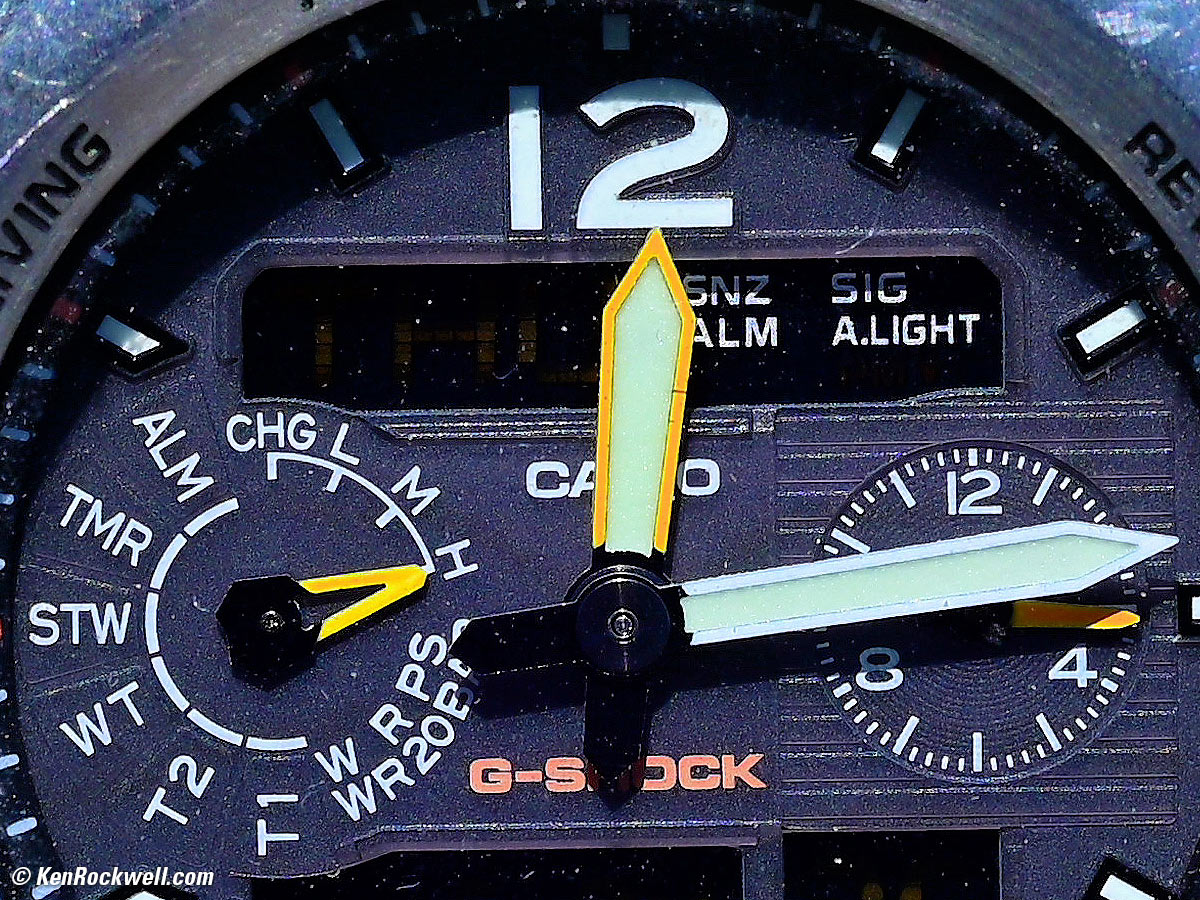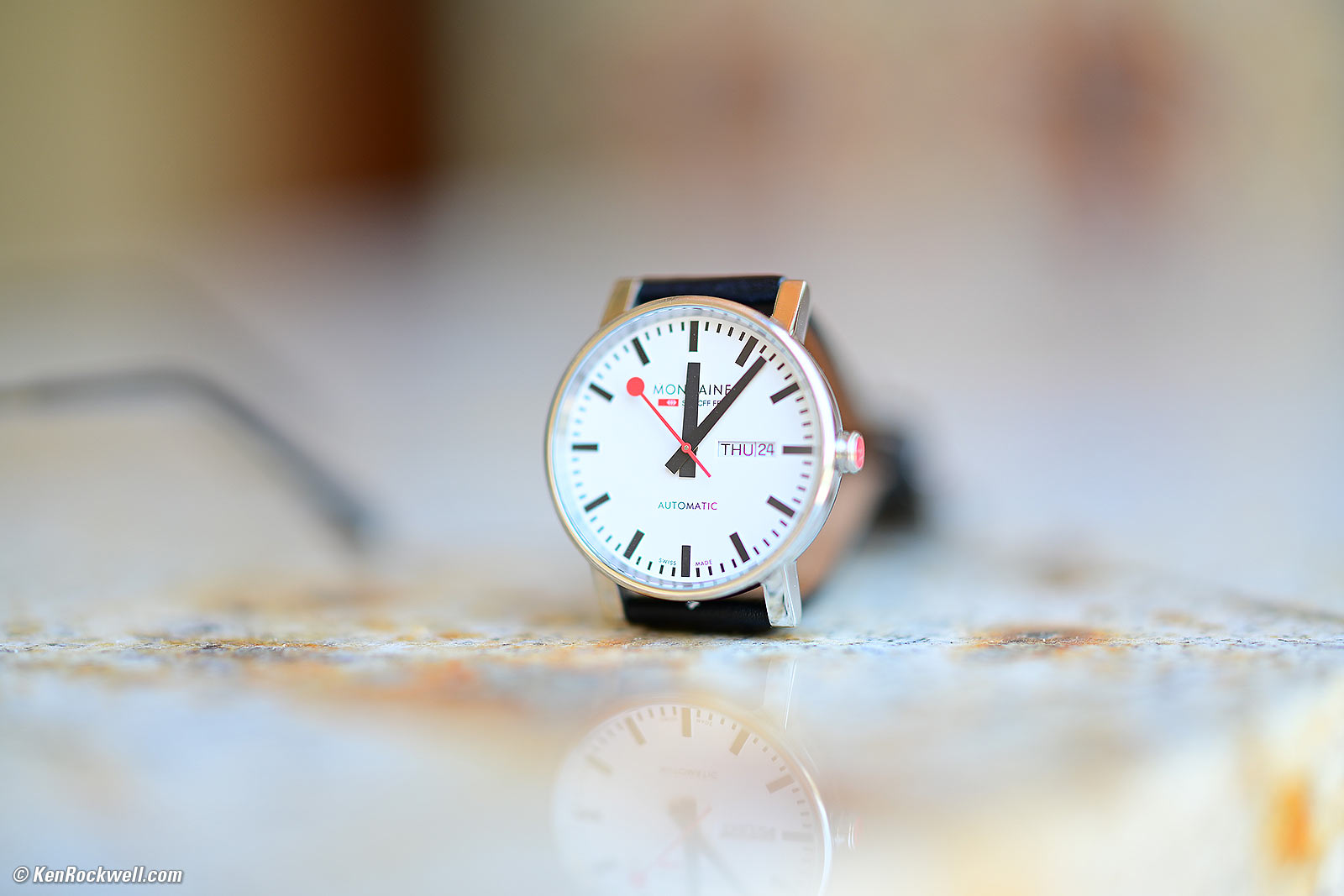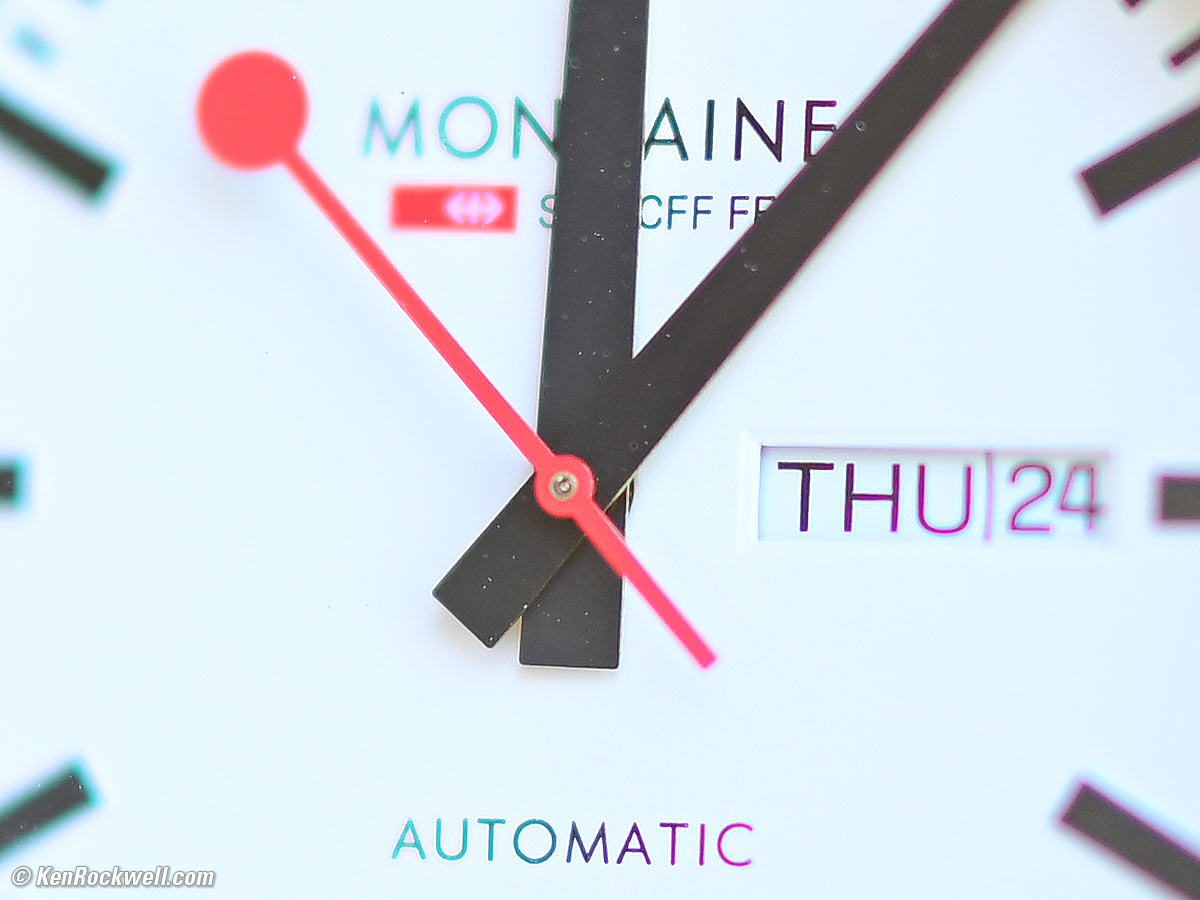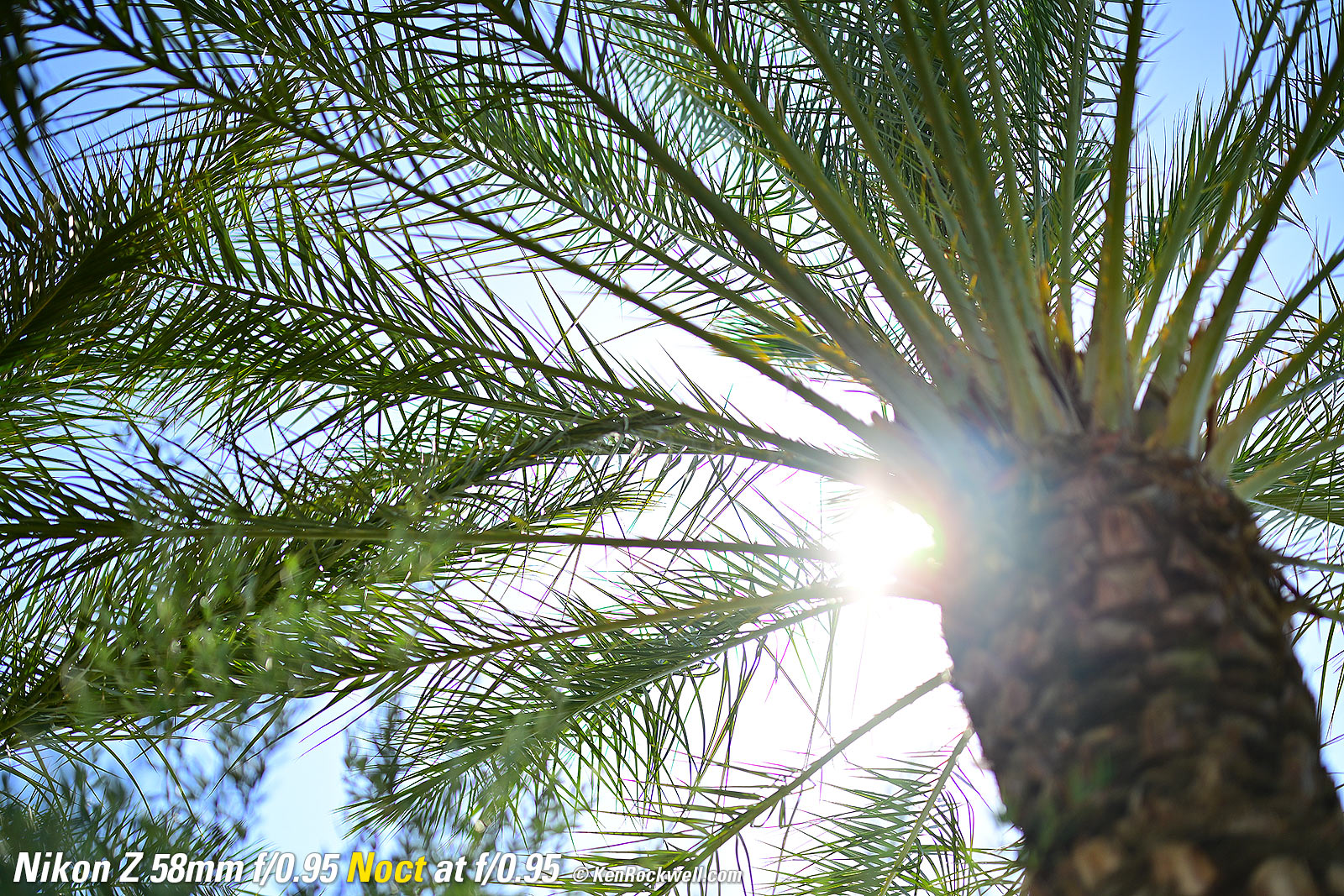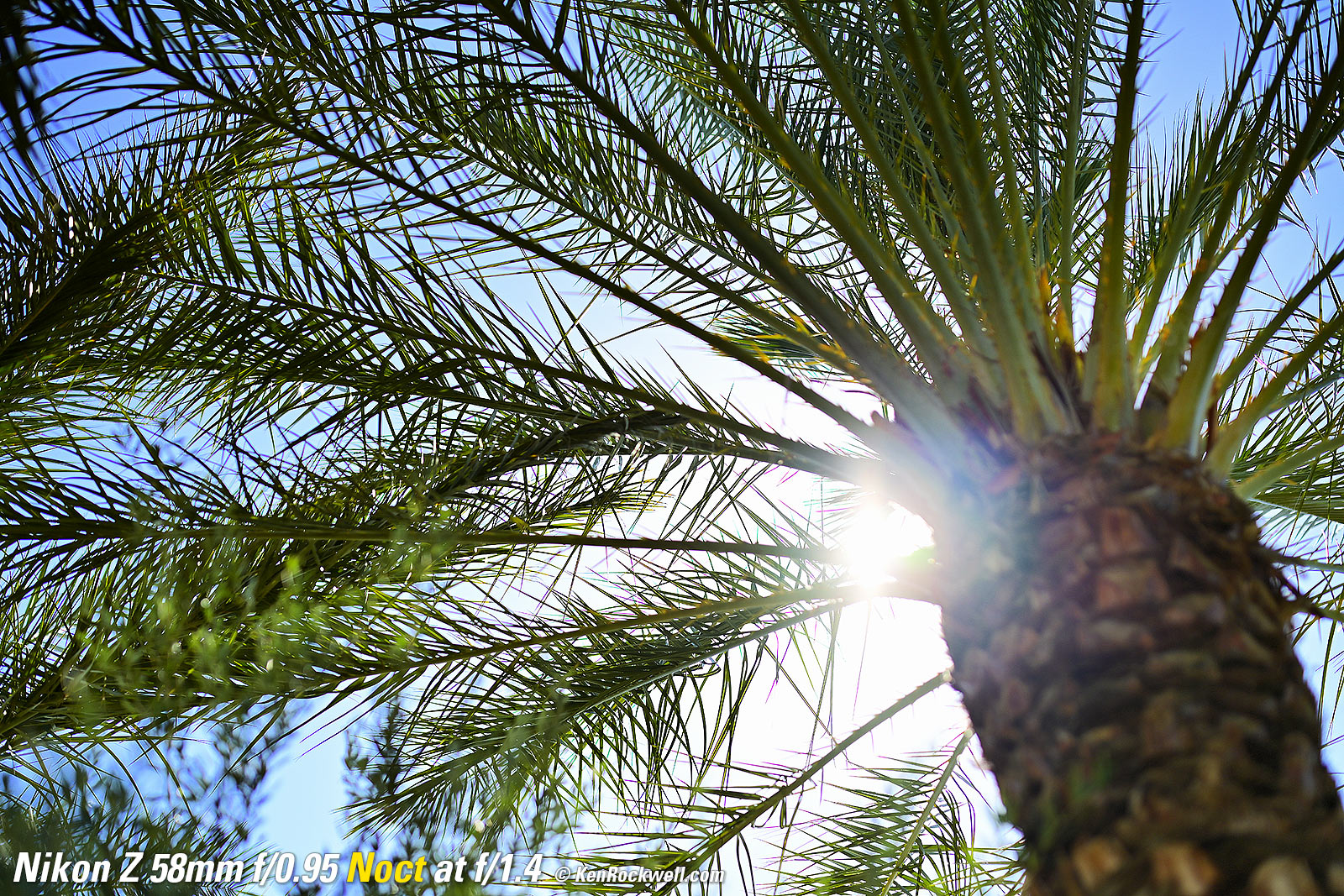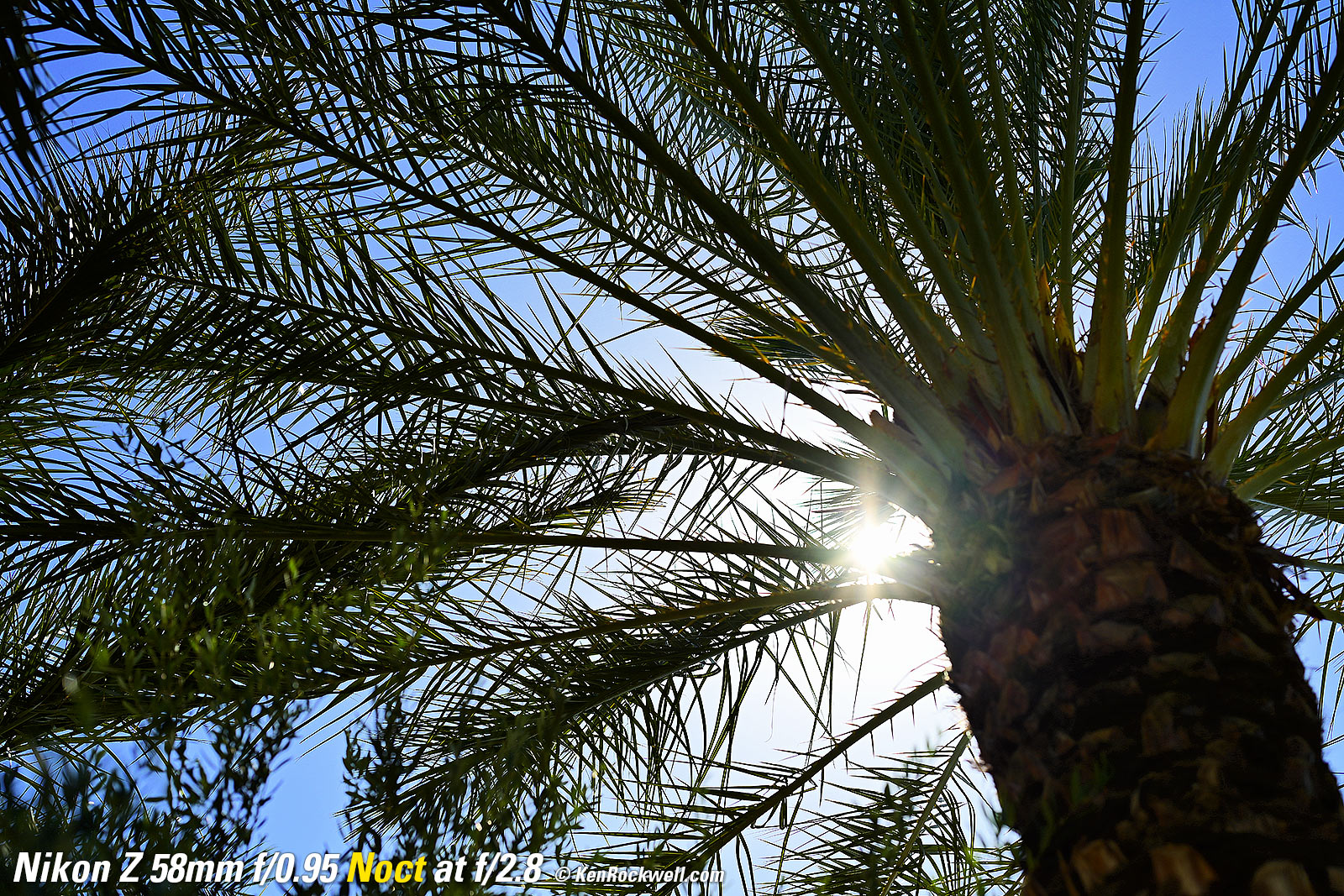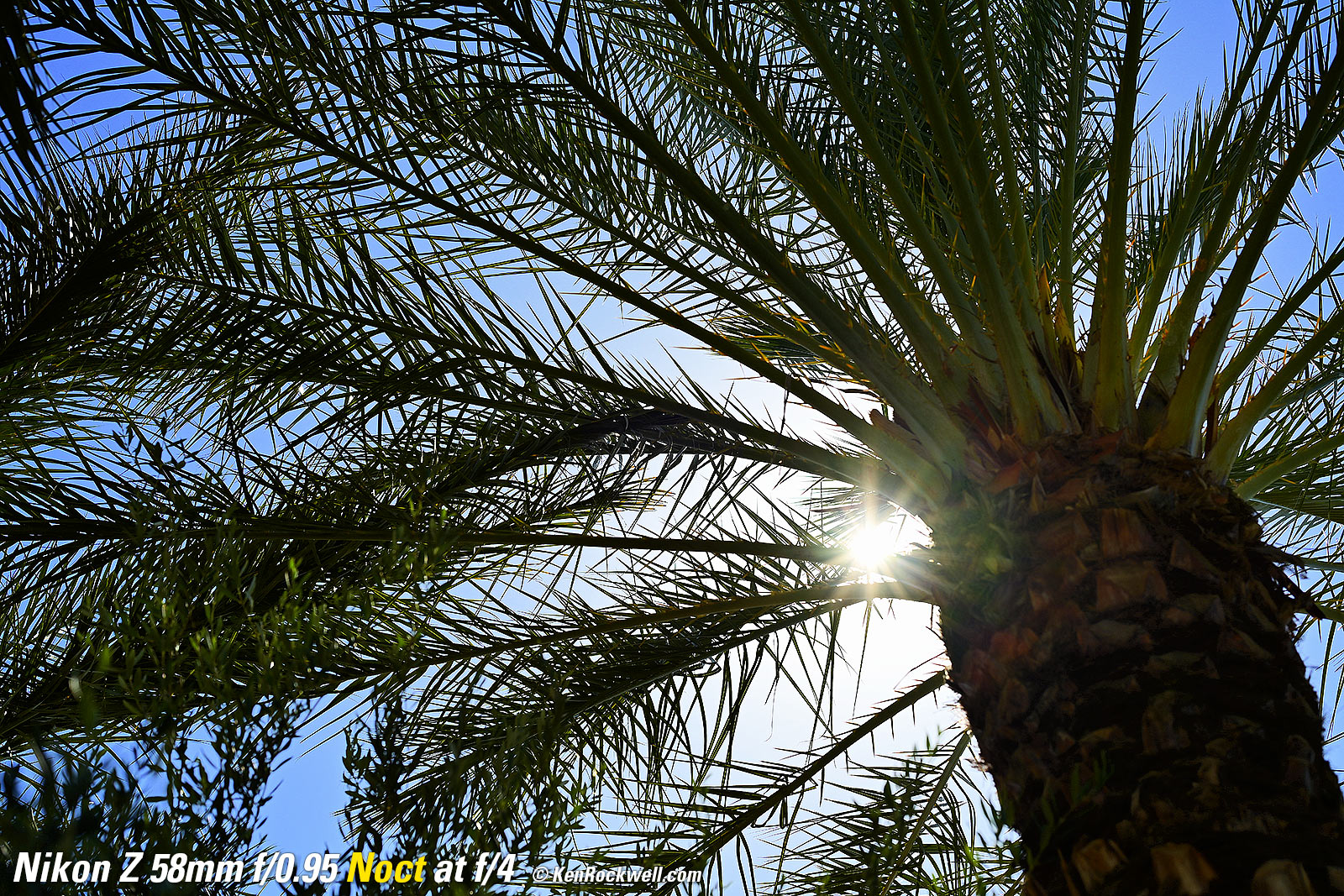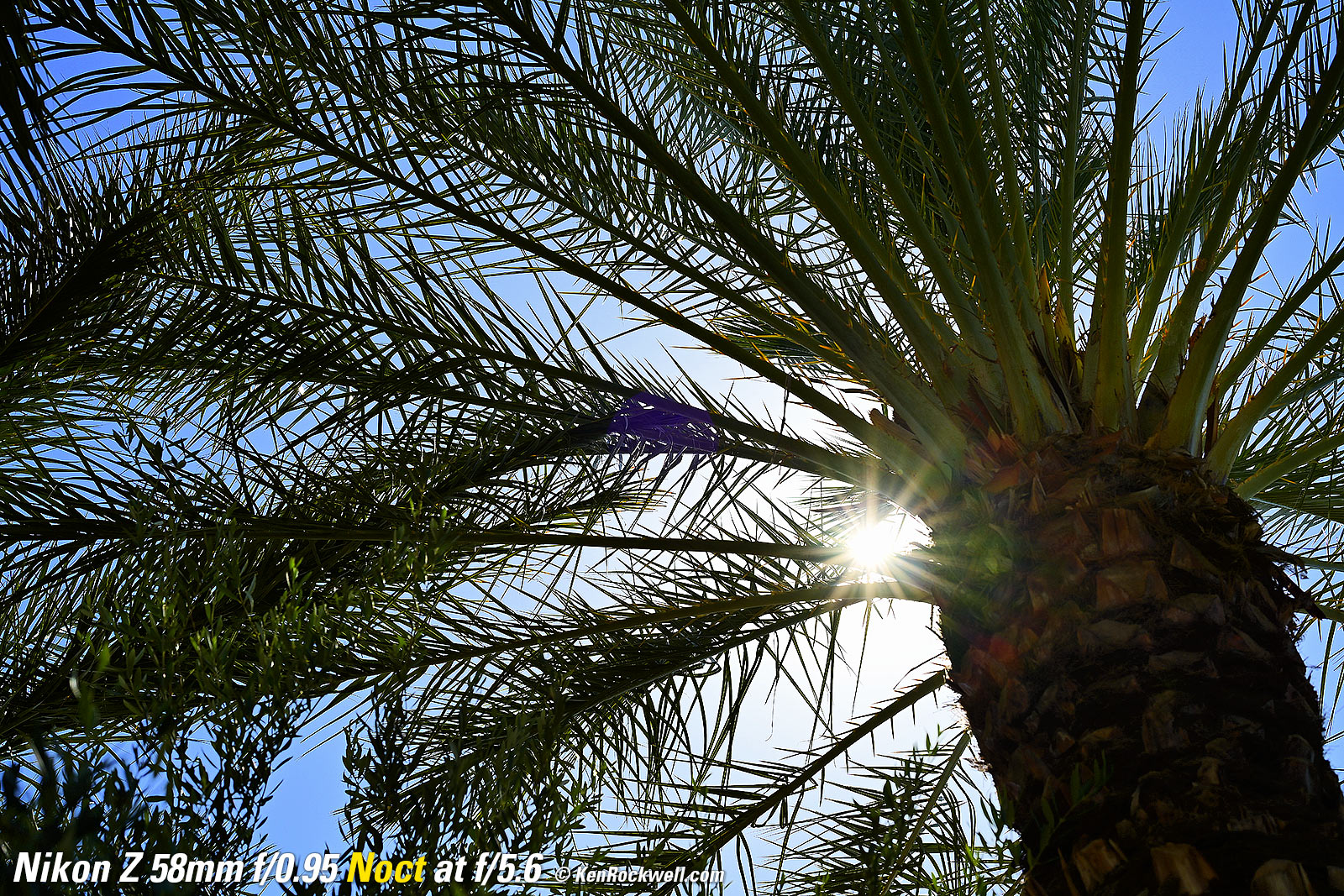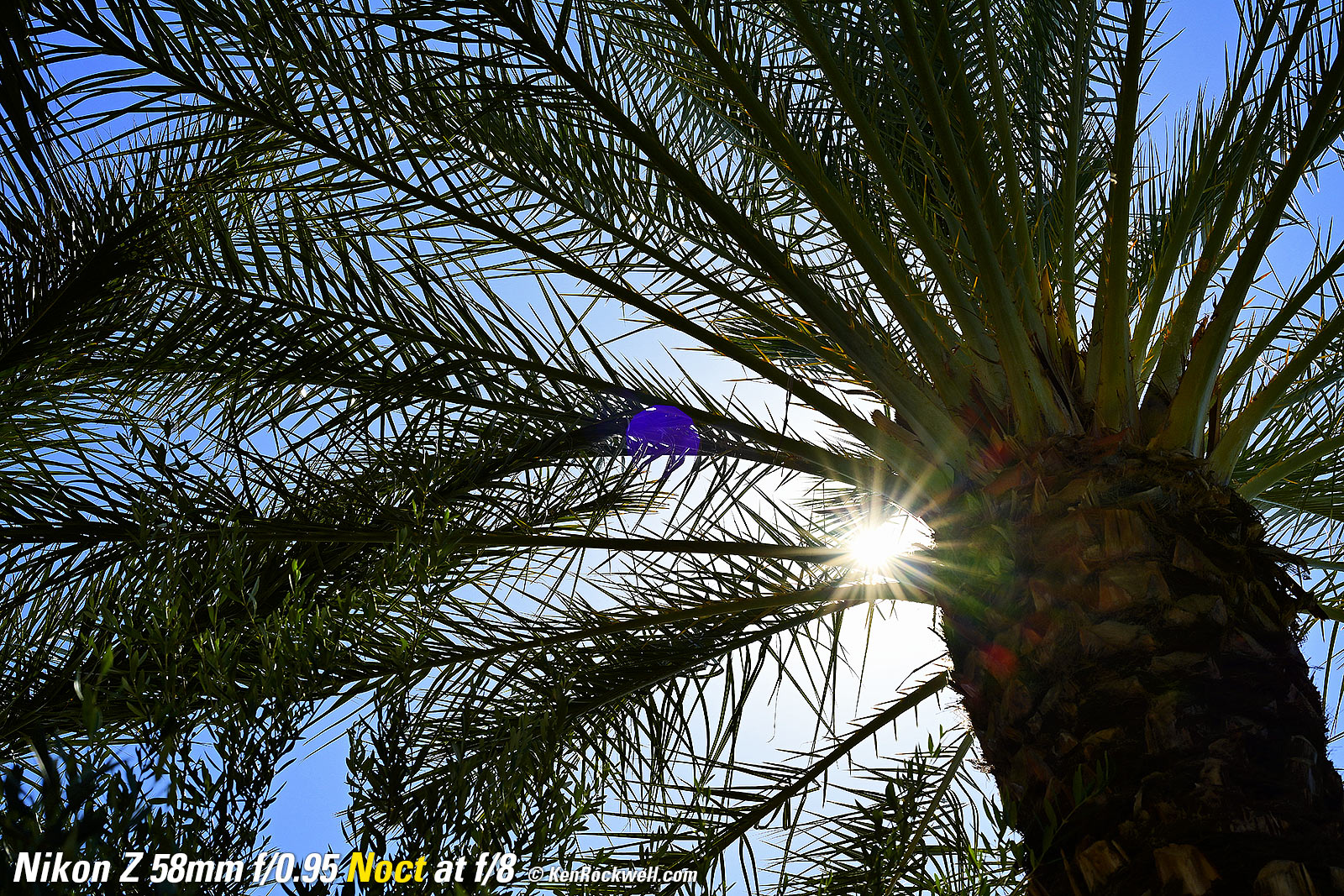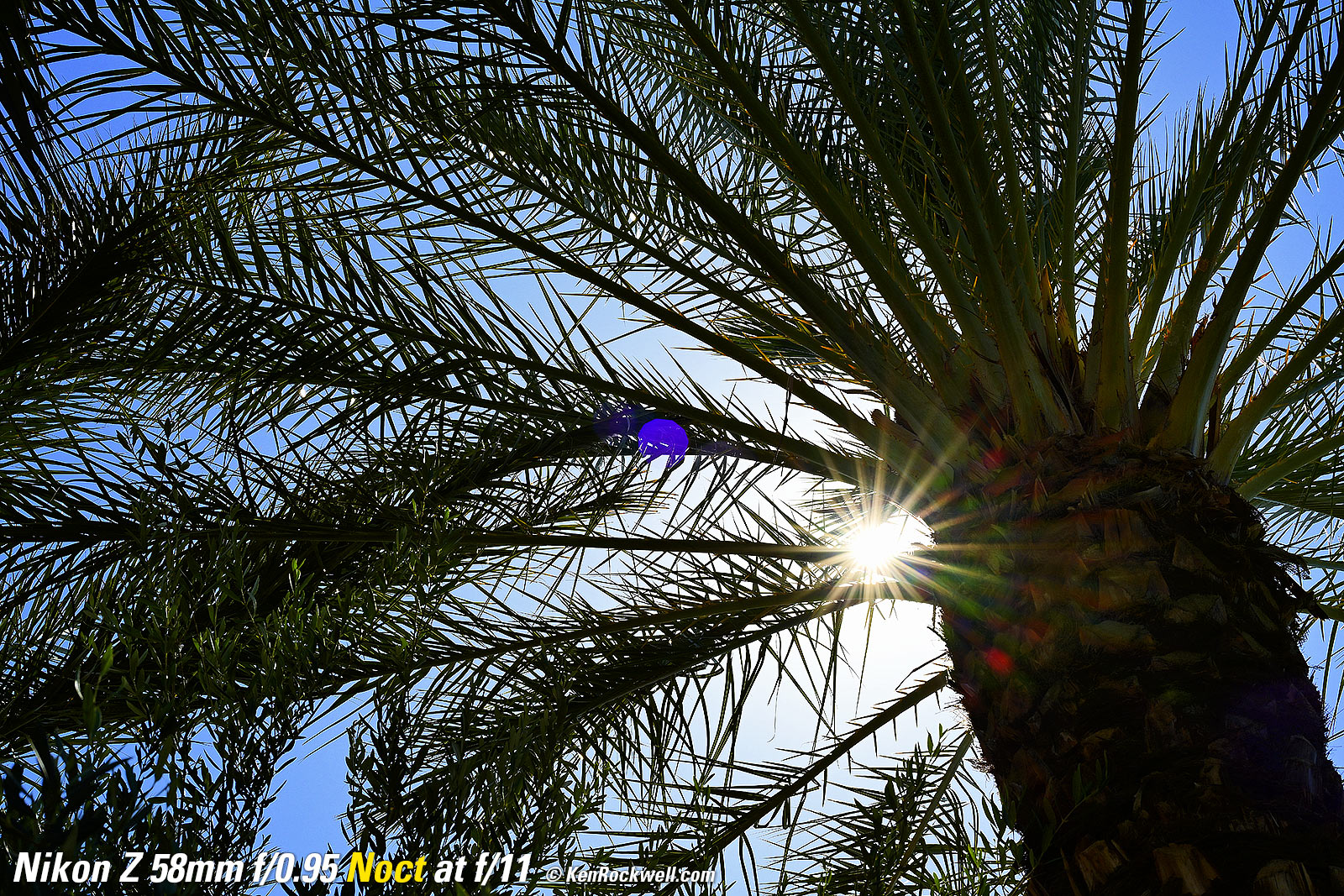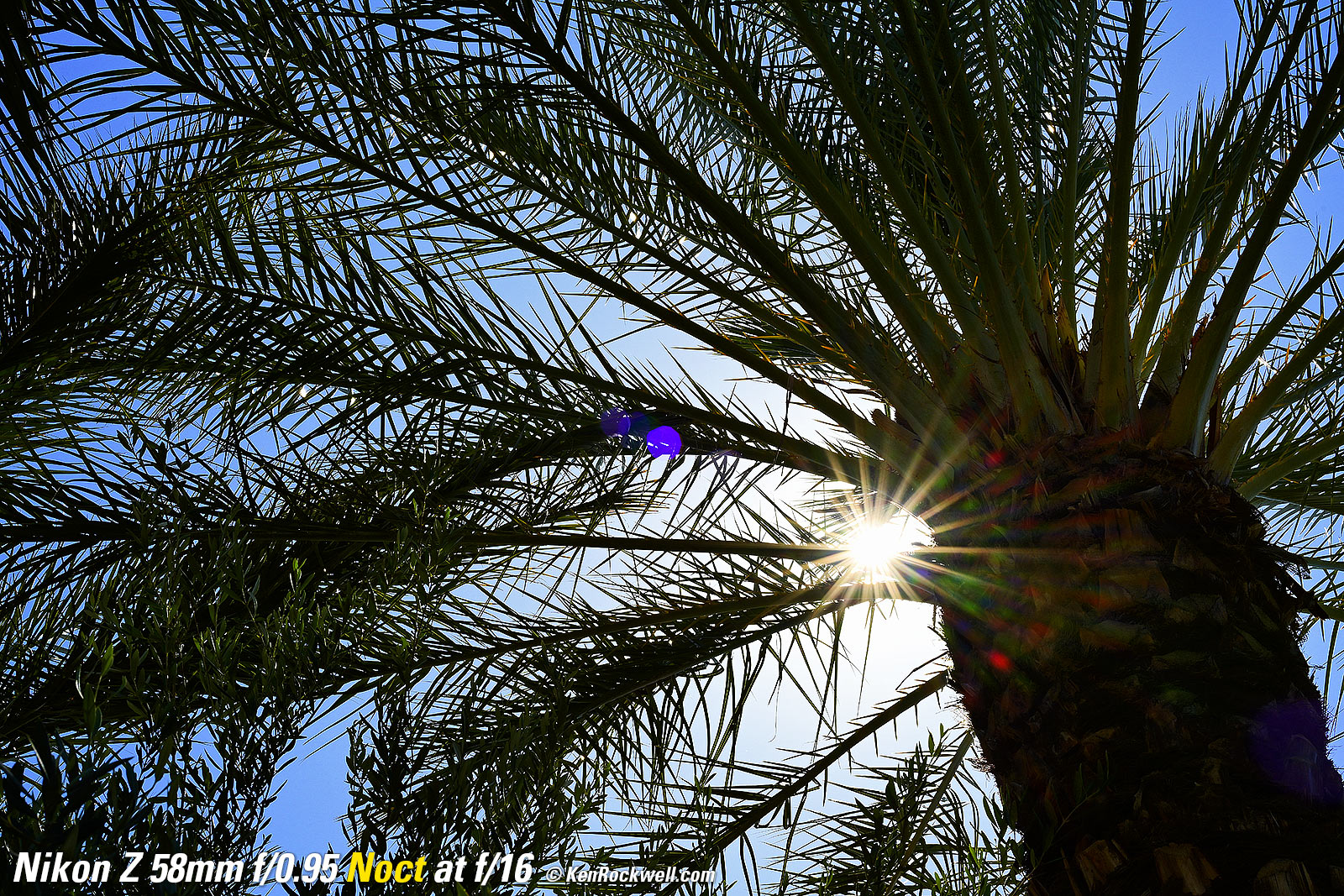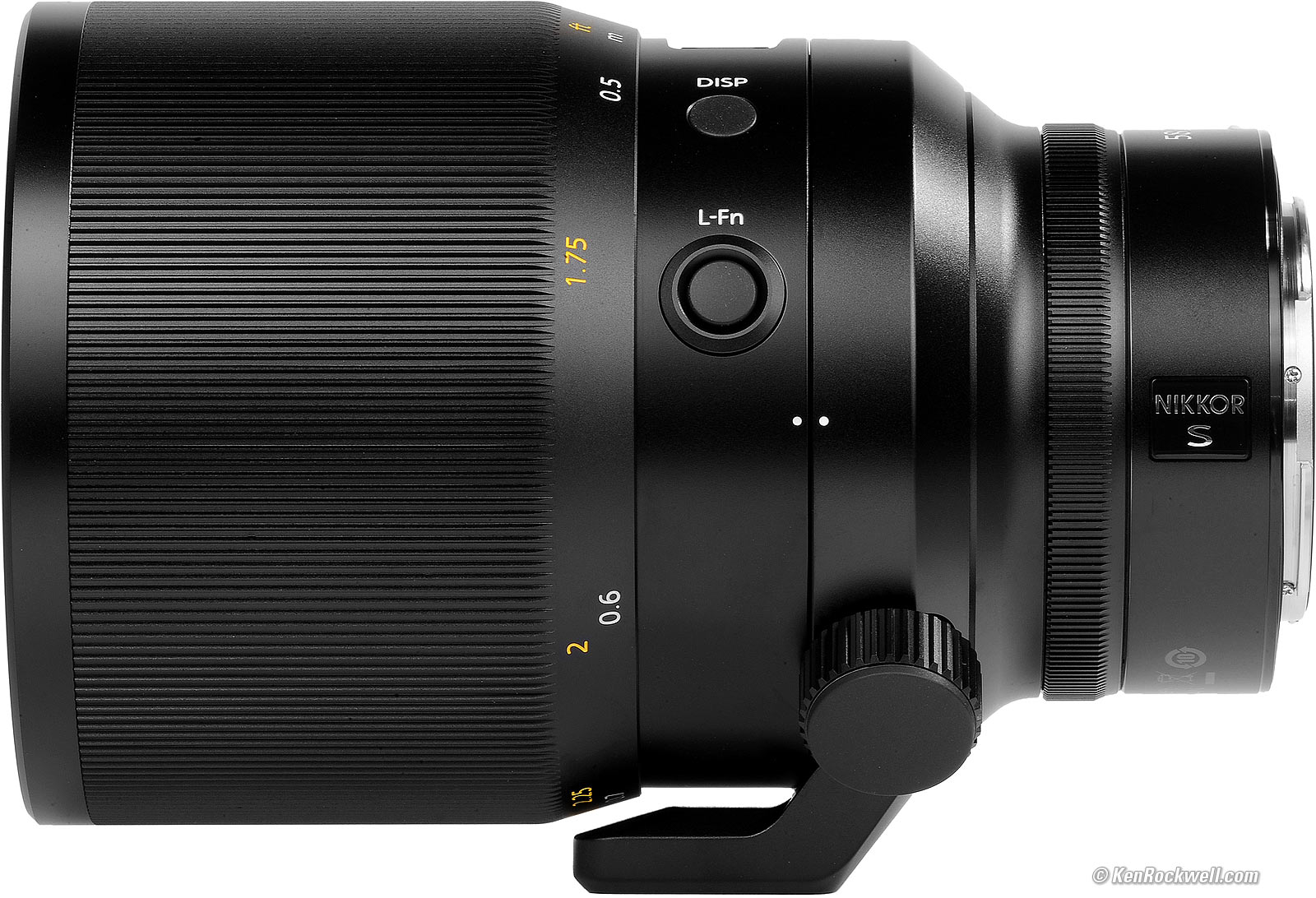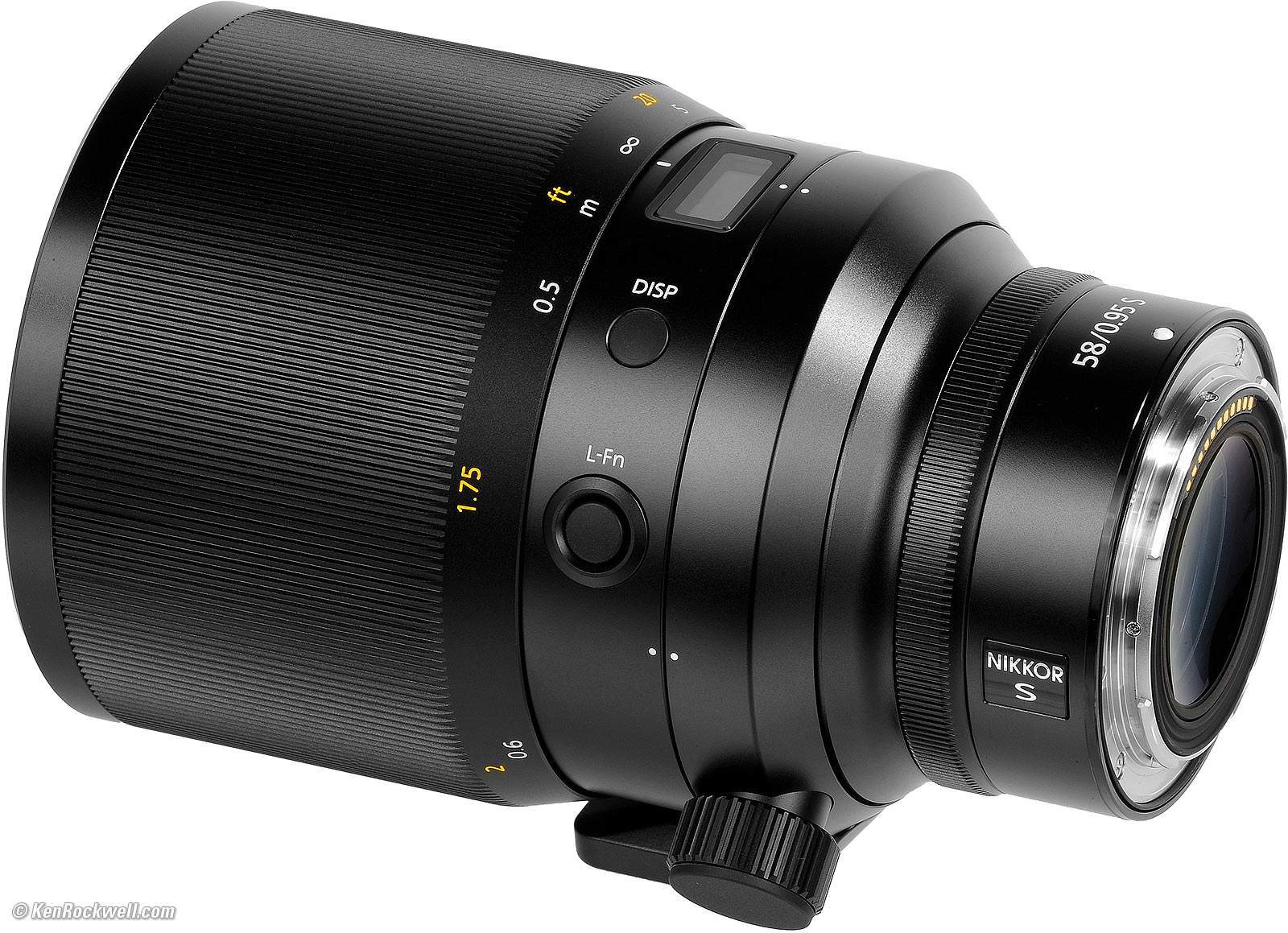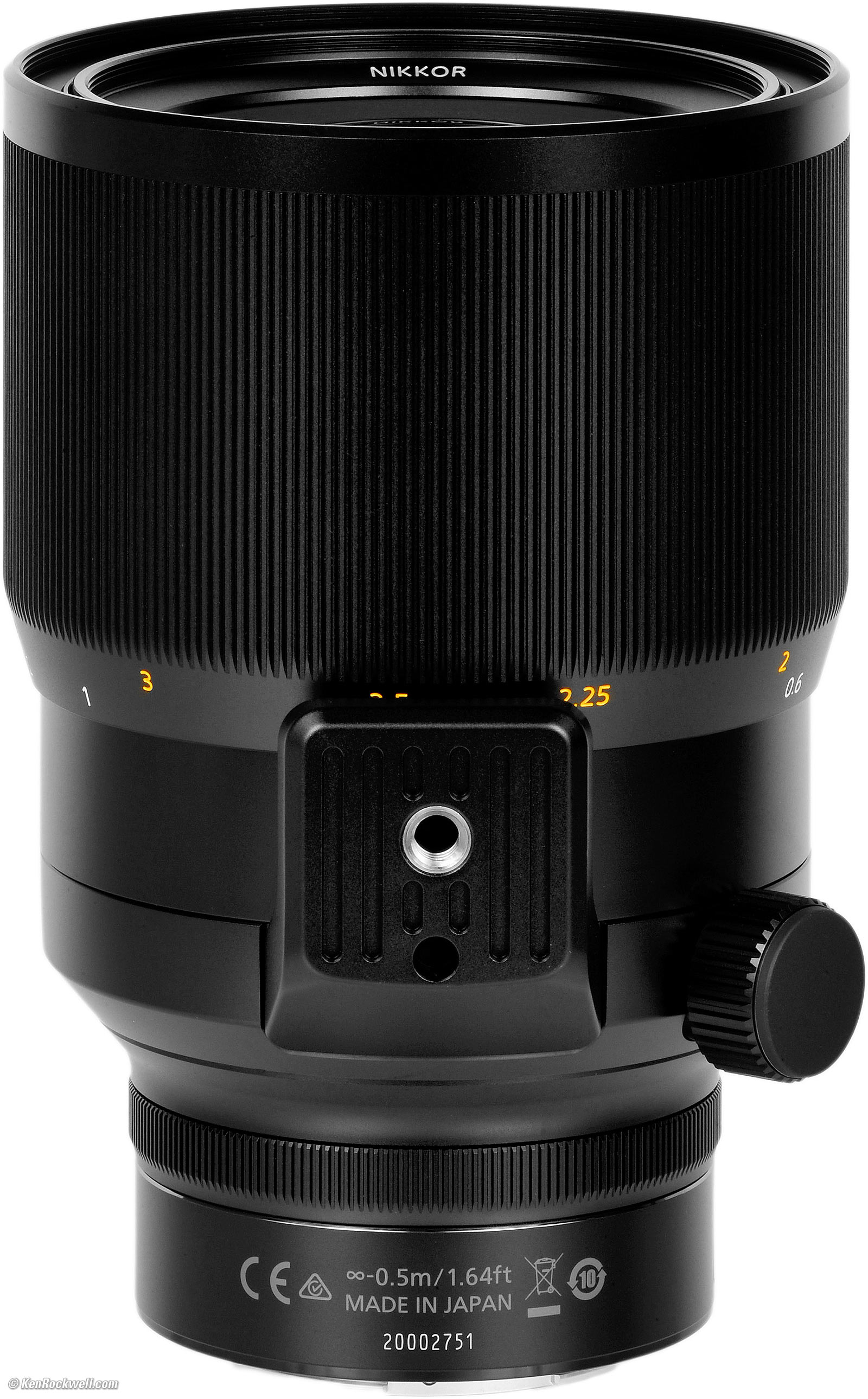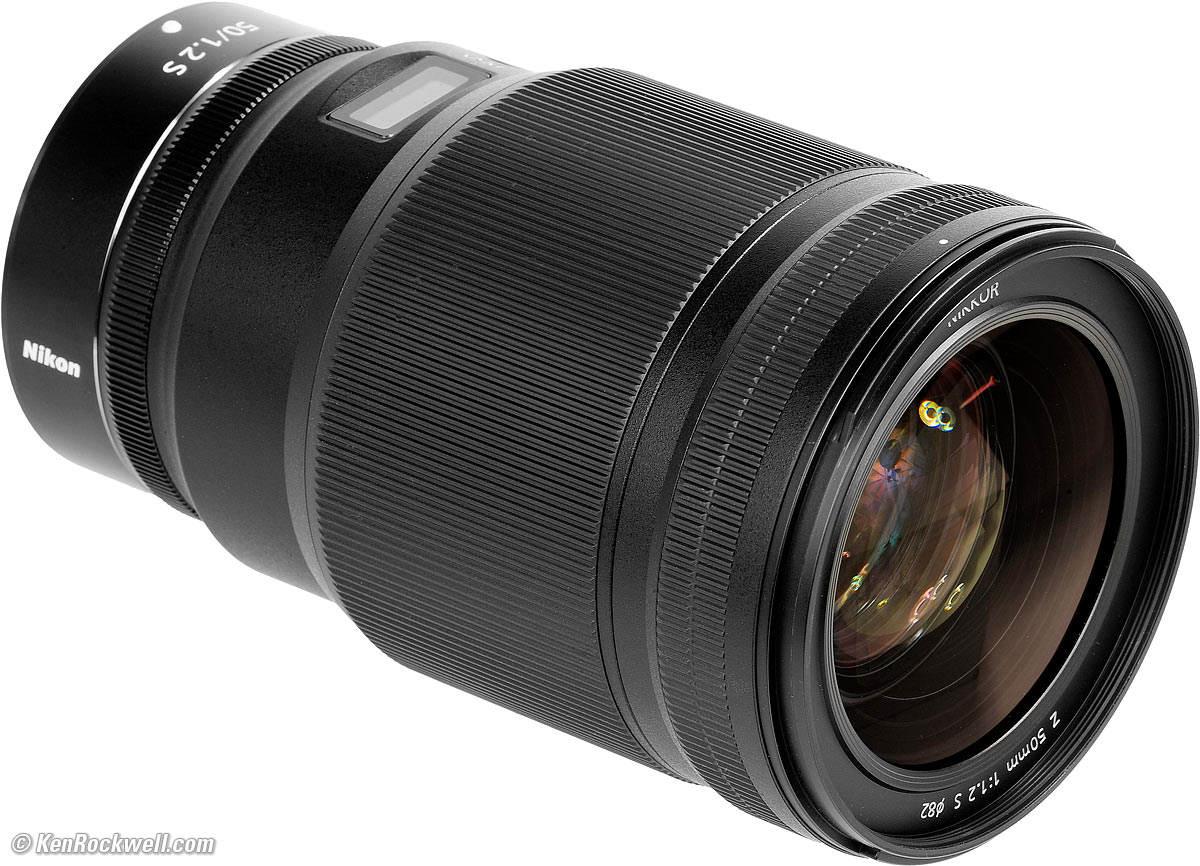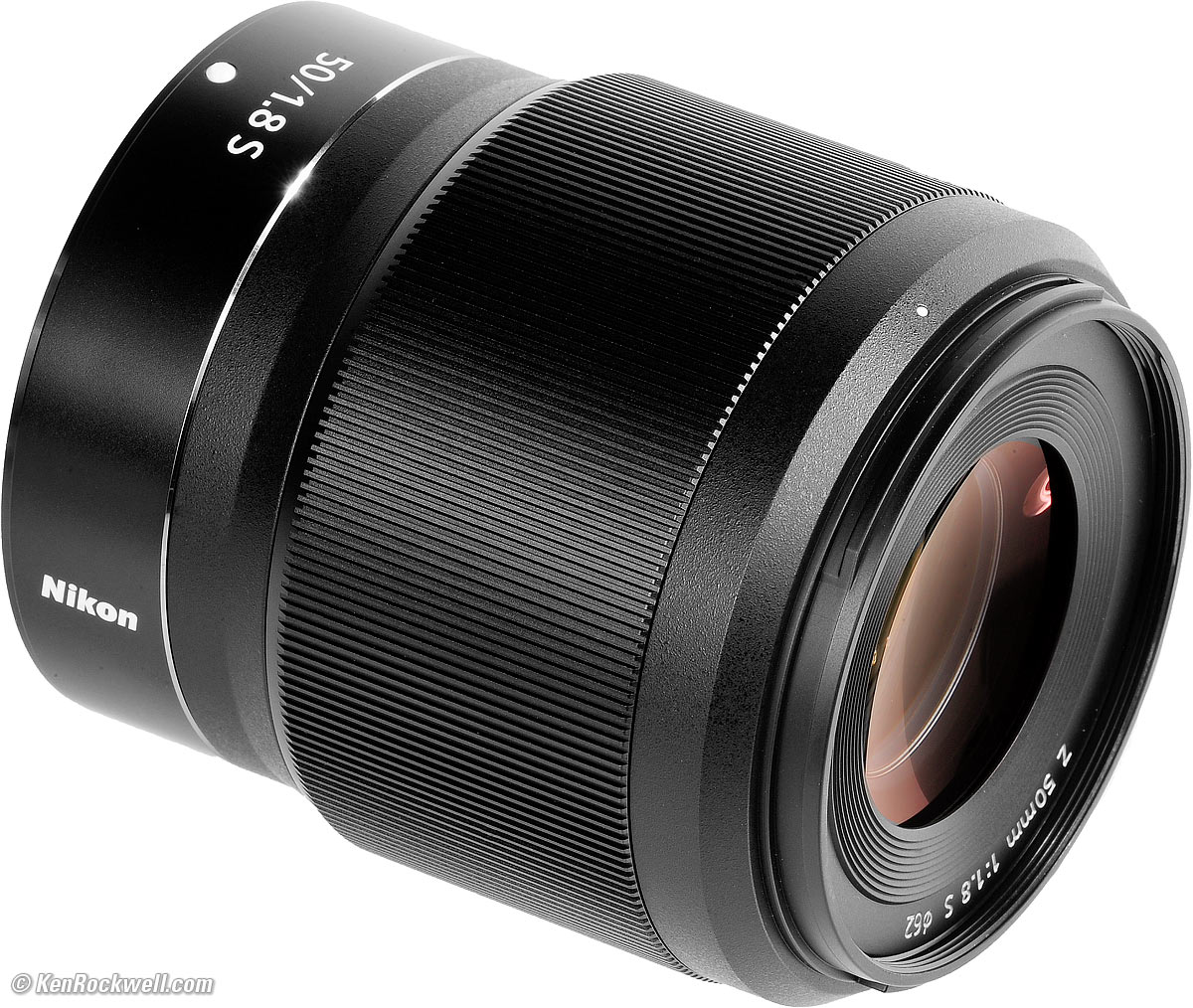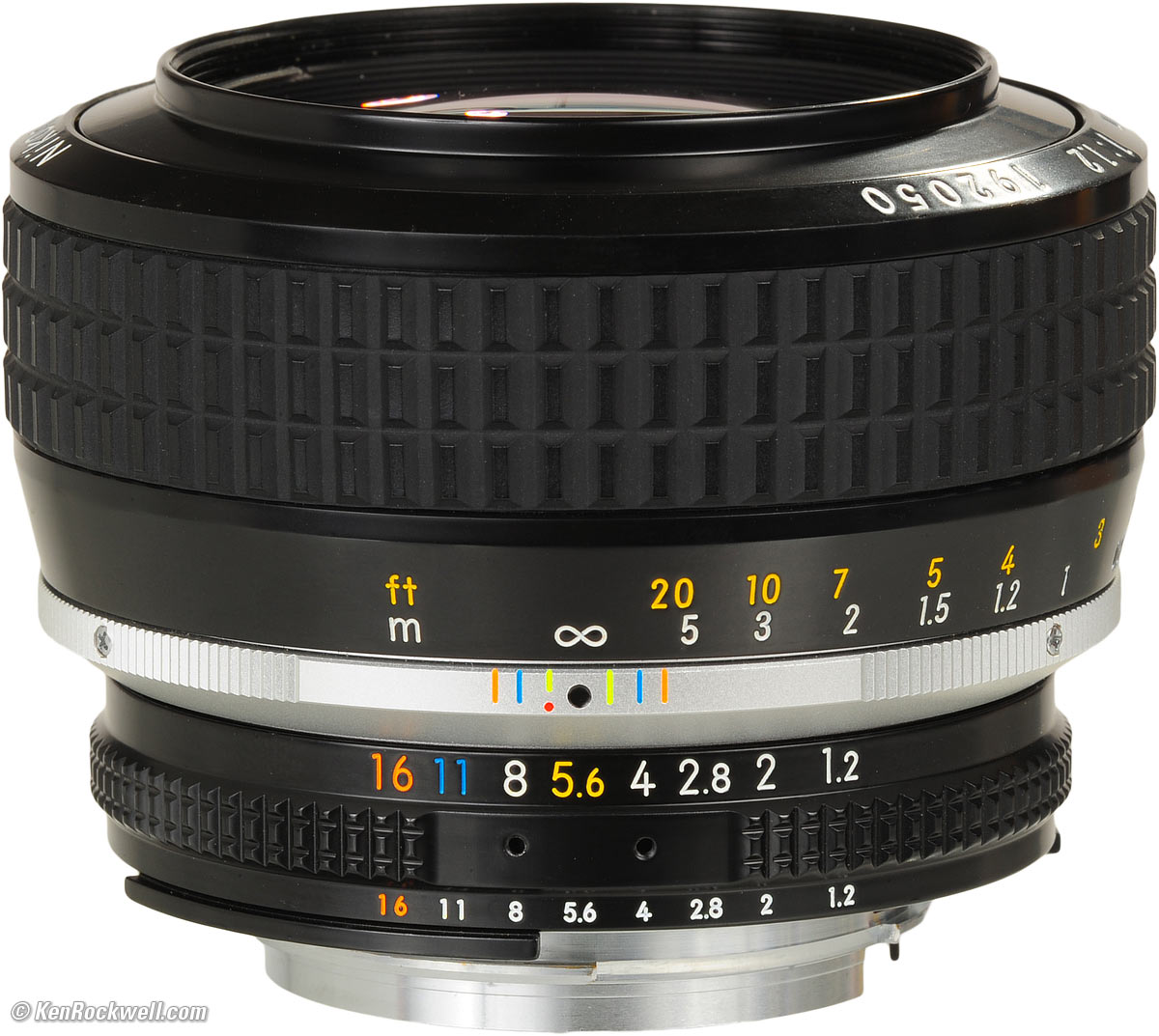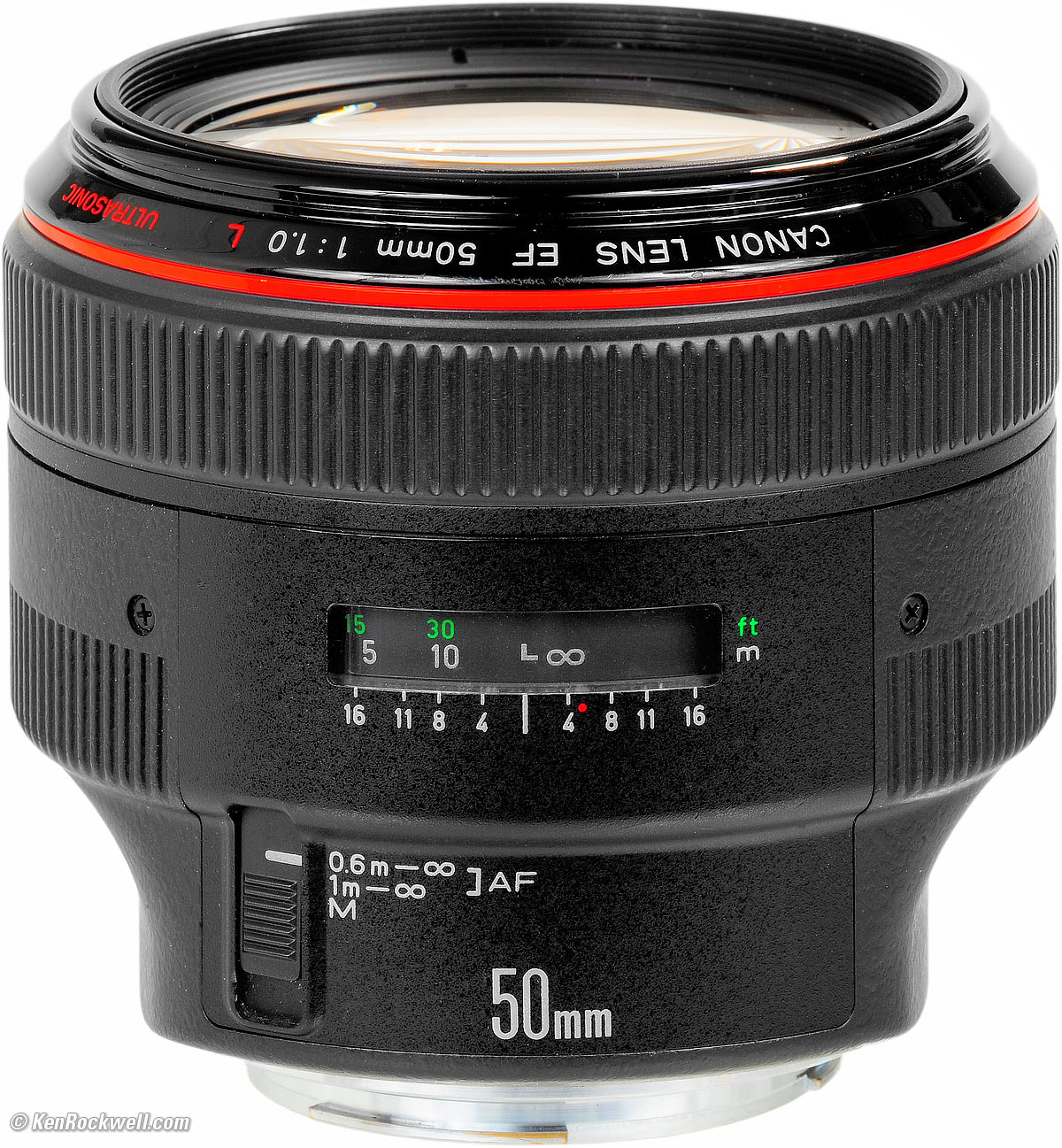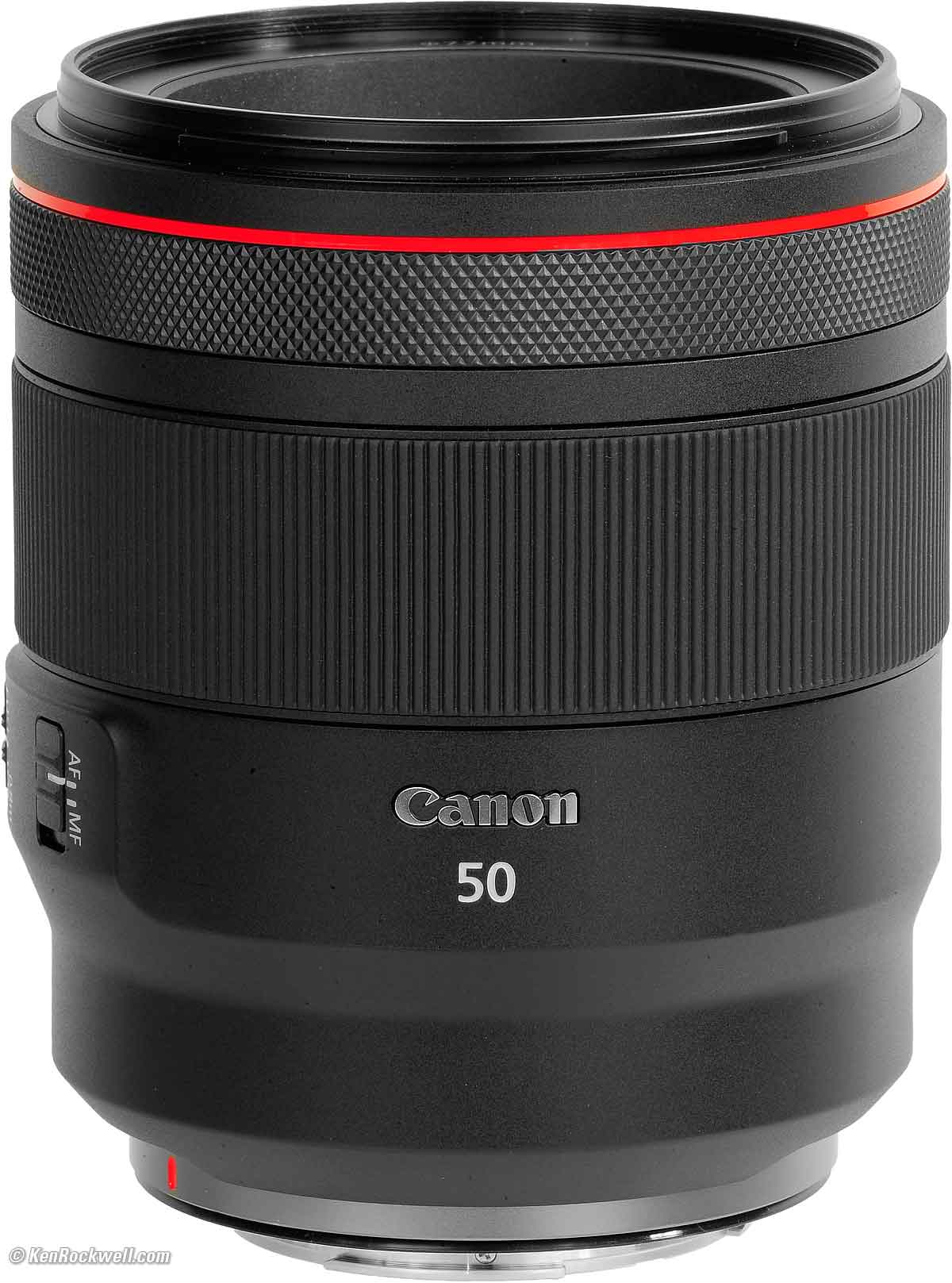Nikon 58mm f/0.95 Noct
Oculus Dei "Eye of God"
Manual-Focus Z-mount
Format Compatibility Specifications
Accessories Unboxing USA Version
Z9 Z8 Z7 II Z6 II Zf Z7 Z6 Z5 Z fc Z50 Z30
Z System Z Lenses All Nikon Lenses Flash
Nikon Z 58mm f/0.95 Noct (82mm filters, 70.5 oz./4.4 pounds/2,000g, 1.64'/0.5m close focus, $7,997). bigger. I got mine at B&H. I'd also get mine at Adorama or at Amazon, or used at eBay if you know How to Win at eBay.
This 100% all-content, junk-free website's biggest source of support is when you use those or any of these links to my personally approved sources I've used myself for way over 100 combined years when you get anything, regardless of the country in which you live — but I receive nothing for my efforts if you get it elsewhere. Never buy at retail or any other source not on my personally approved list since you'll have no way of knowing if you're missing accessories, getting a defective, damaged, returned, dropped, incomplete, gray-market, store demo or used Noct as they aren't really sealed — and all of my personally approved sources allow for 100% cash-back returns for at least 30 days if you don't love your new Noct. I've used many of these sources since the 1970s because I can try it in my own hands and return it if I don't love it, and because they ship from secure remote warehouses where no one gets to touch your new Noct before you do. Buy only from the approved sources I've used myself for decades for the best prices, service, return policies and selection.
July 2021 Nikon Mirrorless Mirrorless Lenses All Nikon Lenses Nikon Flash All Reviews
Original 58mm f/1.2 Noct-NIKKOR
Sample Images top
Format Compatibility Specifications
Accessories Unboxing USA Version
More samples throughout this review at Bokeh, Coma, Macro, Spherochromatism and Sunstars.
These are just snapshots; my real work is in my Gallery.
At f/0.95
Fountain in Afternoon Light, 6:34 PM, 24 June 2021. Mild crop from Nikon Z7 II, f/0.95 at 1/2,500 hand-held at ISO 64, +0.7 stops exposure compensation (LV 11.8), Perfectly Clear and Photoshop CS6. bigger or full-resolution.
2,400 pixels-wide (3⅓× crop) from above. Note the exquisite sharpness and contrast and the vanishingly thin depth of field, all wide-open at f/0.95. bigger.
2017 Specialized Tarmac Comp 58cm, Torch Edition with orange Presta valve caps, Shimano Dura-Ace CS-R9100 12-25T cassette, Shimano Integra FC-R8000 175mm 46-36T crankset, Shimano Dura-Ace PD-R9100 pedals and awesomely inexpensive ($14), light (24g) and strong carbon-fibre bottle cages, 10:12 AM, 26 June 2021. Nikon Z7 II, f/0.95 at 1/8,000 at ISO 32 (L), -1.3 stops exposure compensation (LV 14.5), Perfectly Clear. bigger, full-resolution or camera-original © BASIC ★ JPG.
You've got to be kidding me with how great is this lens: even at f/0.95 it's so sharp and contrasty and has no chromatic aberration such that I can read the microscopic printing on my tires - even on the far left-side of the picture! The only reason anything's not perfectly sharp here is that there is very little in perfect focus; the depth of field is nonexistent and the bike and its parts aren't in the same vapor-thin plane of focus.
At f/0.95
It's darker on the left because the light's coming from the right; this isn't lens falloff.
Spanish Tile in Shade,10:46 AM, 24 June 2021. Nikon Z7 II, f/0.95 at 1/1,000 at ISO 64, +0.3 stops exposure compensation (LV 10½), Perfectly Clear. bigger, full-resolution or camera-original © BASIC ★ JPG.
At f/4
This lens is so good that the corners are sharpest at f/4 before diffraction starts dulling them. This is extraordinary performance!
Spanish Tile in Shade,10:47 AM, 24 June 2021. Nikon Z7 II, f/4 at 1/50 at ISO 64, +0.3 stops exposure compensation (LV 10.3), Perfectly Clear. bigger, full-resolution or camera-original © BASIC ★ JPG.
2017 Specialized Tarmac Comp 58cm, Torch Edition with orange Presta valve caps, Shimano Dura-Ace CS-R9100 12-25T cassette, Shimano Integra FC-R8000 175mm 46-36T crankset, Shimano Dura-Ace PD-R9100 pedals and awesomely inexpensive ($14), light (24g) and strong carbon-fibre bottle cages, 10:12 AM, 26 June 2021. Nikon Z7 II, f/4 at 1/1,000 at ISO 64, -0.7 stops exposure compensation (LV 14.6), Perfectly Clear. bigger, full-resolution or camera-original © BASIC ★ JPG.
The microscopic printing on my tires is even sharper here, as at f/4 much more is in focus.
Introduction top
Format Compatibility Specifications
Accessories Unboxing USA Version
|
I buy only from these approved sources. I can't vouch for ads below. |
The 58mm 0.95 Noct is a highly specialized, high-performance lens optimized for precision photography on a tripod. This beast weighs 4½ pounds (2 kg) and has its own non-removable tripod collar. This is the lens you use when the work you're creating - or reproducing - is significant enough to be important for decades — or centuries — and you want it done flawlessly.
Oculus Dei. Ochiul lui Dumnezeu. In every language, this is The Eye of God.
This Eye of God is the highest-performance 50mm or 58mm lens I've ever tested in over 50 years of work, and even more importantly, has mechanics optimized for the most exacting photographic creation and reproduction that render it the obvious choice for those of you who never leave the house without your Really Right Stuff tripod and shoot in the raw.
It's more than just a fast lens for night use; it's a spectacular lens for the highest levels of field and studio photography as well as laboratory use.
More than for creating timeless art, it's the best lens ever for reproducing flat art of any size from 5 × 7.5" (127 × 191mm) to infinity because of its flat field, lack of distortion, precision focus, 11-bladed diaphragm, very low flare, an optical system that optimizes itself continuously for perfect performance at every distance as focused, and of course unrivaled sharpness at all apertures. It reminds me of Nikon's little-known Printing-NIKKOR lenses, which while only optimized for one distance, were designed to be used wide-open with extreme resolution and flat fields.
The Eye of God is the new standard in museum and conservatory reproduction, archiving and cataloging. Better than any macro lens, its ultra-precise focus and resolution optimized for use even at the largest apertures makes it easy to get perfect, precise focus every time. Just open it up to f/0.95 to see what you're doing so you can focus perfectly even in dim light. If you're shooting art all day, it's much easier to focus this lens well than anything else; The Eye of God is designed for slow, precise perfect focus, and once set, stays there. Macro lenses aren't needed for flat artwork, since anything small enough should be scanned in a flatbed scanner; lenses are for pieces too big for a scanner.
This is a huge manual-focus-only full-frame lens. Unlike the old 58mm f/1.2 Noct-NIKKOR, this new lens is for precise, painstaking work rather than low-light hand-held newsgathering. This new Noct is optically flawless and far better than the old f/1.2 Noct, but not visibly better than other 50mm lenses for casual photography. This Noct really shines when you have flat subjects and controlled conditions under which you can appreciate its optical supremacy. In the real world of three-dimensional subjects very few things are in perfect-enough focus to show off a lens, but when you're working with flat things (or astronomy or landscapes at a distance) that can be brought into perfect focus, The Eye of God sees all.
This new 58mm is unbeaten for astro and scientific shooting, but it's silly for news, sports, action, portraits or other casual uses. For hand-held use, the Z 50mm f/1.2 is much more practical and hand-holdable.
The Eye of God is also wonderful for video because its huge manual-focus ring should perform marvelously on a follow-focus rig — and f/0.95 makes backgrounds vanish.
The Eye of God is a bargain at just $7,997. It's the least expensive first-world f/0.95 lens sold today as well as the very best. LEICA's 50mm f/0.95 NOCTILUX sells for $12,795 as of this writing, and with its much simpler design I doubt it has the performance and flat field of this Noct NIKKOR, and the NOCTILUX can't focus closely at all, limited to 3.3'/1m.
I got my 0.95 Noct at B&H. I'd also get mine at Adorama or at Amazon, or used at eBay if you know How to Win at eBay.
New since the 58mm f/1.2 Noct of 1977-1997 intro top
 Nikon's first f/0.95 camera lens.
Nikon's first f/0.95 camera lens.
 Far superior, space-grade Eye of God optical performance.
Far superior, space-grade Eye of God optical performance.
 Two-thirds of a stop faster.
Two-thirds of a stop faster.
 Same close-focus distance, but better macro ratio: 1:5.3 (0.19×) versus 1:6.7 (0.15×).
Same close-focus distance, but better macro ratio: 1:5.3 (0.19×) versus 1:6.7 (0.15×).
 Silly OLED panel to show depth-of-field, aperture or focus distance (press DISP button to select).
Silly OLED panel to show depth-of-field, aperture or focus distance (press DISP button to select).
 Programmable function ring.
Programmable function ring.
 Programmable Lens Function (L-fn) button can be set to anything your camera provides.
Programmable Lens Function (L-fn) button can be set to anything your camera provides.
 Much bigger, heavier and more expensive.
Much bigger, heavier and more expensive.
 Dirt and drip resistent.
Dirt and drip resistent.
 11-blade electronic diaphragm.
11-blade electronic diaphragm.
 Tripod collar.
Tripod collar.
Good intro top
 Oculus Dei: the all-seeing Eye of God.
Oculus Dei: the all-seeing Eye of God.
 Outstanding optics:
Outstanding optics:
 Ultra fast (duh).
Ultra fast (duh).
 Outstanding sharpness, especially at f/0.95 and especially in the far corners. Bravissimo!
Outstanding sharpness, especially at f/0.95 and especially in the far corners. Bravissimo!
 Extremely flat field. Bravo!
Extremely flat field. Bravo!
 No visible distortion, even uncorrected. Bravo!
No visible distortion, even uncorrected. Bravo!
 No unusual falloff at f/0.95. Bravo!
No unusual falloff at f/0.95. Bravo!
 Excellent at close distances, and especially with its lack of distortion and superbly precise manual focus, The Eye of God is the new standard for reproducing works of fine art.
Excellent at close distances, and especially with its lack of distortion and superbly precise manual focus, The Eye of God is the new standard for reproducing works of fine art.
 Unusually free from flare and ghosts. Bravo!
Unusually free from flare and ghosts. Bravo!
 Beautiful 22-point sunstars. Bravo!
Beautiful 22-point sunstars. Bravo!
 Direct mechanical manual focus; no electronic baloney like in the Z 50/1.2.
Direct mechanical manual focus; no electronic baloney like in the Z 50/1.2.
 Precise manual focus geared perfectly for flawless results on a tripod, especially at f/0.95. Of course this means it's slow to focus at f/8, but this is also ideal for precise focus for reproducing large works of art. You don't buy this to hand-hold, you buy The Eye of God for precise focus which is required for extreme resolution.
Precise manual focus geared perfectly for flawless results on a tripod, especially at f/0.95. Of course this means it's slow to focus at f/8, but this is also ideal for precise focus for reproducing large works of art. You don't buy this to hand-hold, you buy The Eye of God for precise focus which is required for extreme resolution.
 Works great with all the manual focus tools in the Z cameras. For instance my Z7 II has color-changing focus areas, as well as a very precise three-dot null system (▶●◀), and of course focus magnification and peaking. details.
Works great with all the manual focus tools in the Z cameras. For instance my Z7 II has color-changing focus areas, as well as a very precise three-dot null system (▶●◀), and of course focus magnification and peaking. details.
 All-metal construction, not a plastic excrescence like the Z 50/1.2.
All-metal construction, not a plastic excrescence like the Z 50/1.2.
 Quality-made in Japan, not dumped to some second- or third-world country for cheap assembly like most Nikon products today.
Quality-made in Japan, not dumped to some second- or third-world country for cheap assembly like most Nikon products today.
 If you shoot on a tripod, you deserve this lens. The Eye of God is the best 50mm or 58mm lens you can get.
If you shoot on a tripod, you deserve this lens. The Eye of God is the best 50mm or 58mm lens you can get.
Bad intro top
 Manual focus only.
Manual focus only.
 Cam-based focus system works magnificently, but doesn't feel anywhere near as smooth or silky as Nikon's traditional manual focus lenses with which Nikon earned its reputation. The Noct's focus feel is actually a bit gritty or sloppy!
Cam-based focus system works magnificently, but doesn't feel anywhere near as smooth or silky as Nikon's traditional manual focus lenses with which Nikon earned its reputation. The Noct's focus feel is actually a bit gritty or sloppy!
 Huge.
Huge.
 Very, very heavy: 4½ pounds or 2 kg!
Very, very heavy: 4½ pounds or 2 kg!
Missing intro top
 No autofocus.
No autofocus.
 No infinity focus stop: you have to focus manually and hope you get perfect focus.
No infinity focus stop: you have to focus manually and hope you get perfect focus.
 No focus lock; the manual focus ring can't be locked-down with a thumbscrew like the 105mm f/2.8 AI-s.
No focus lock; the manual focus ring can't be locked-down with a thumbscrew like the 105mm f/2.8 AI-s.
 No 90º clicks in the tripod collar.
No 90º clicks in the tripod collar.
 Tripod collar has no Arca-Swiss dovetail so you still need to buy an Arca-Swiss plate if you use that system. C'mon; even my $18 SPA-1000 iPhone adapter has an Arca-Swiss dovetail. Duh.
Tripod collar has no Arca-Swiss dovetail so you still need to buy an Arca-Swiss plate if you use that system. C'mon; even my $18 SPA-1000 iPhone adapter has an Arca-Swiss dovetail. Duh.
Nikon Z 58mm f/0.95 Noct. bigger.
Format top
Format Compatibility Specifications
Accessories Unboxing USA Version
I got my 0.95 Noct at B&H. I'd also get mine at Adorama or at Amazon, or used at eBay if you know How to Win at eBay.
This is a full frame FX lens, and I'm reviewing it as such.
It works great on DX cameras, too, on which you may make the usual inferences.
Compatibility top
Format Compatibility Specifications
Accessories Unboxing USA Version
I got my 0.95 Noct at B&H. I'd also get mine at Adorama or at Amazon, or used at eBay if you know How to Win at eBay.
This lens works only on Nikon's Z-series mirrorless cameras.
It does not so much as even mount on any other camera.
Nikon Z 58mm f/0.95 Noct dwarfing a Z7. bigger.
Specifications top
Format Compatibility Specifications
Accessories Unboxing USA Version
I got my 0.95 Noct at B&H. I'd also get mine at Adorama or at Amazon, or used at eBay if you know How to Win at eBay.
Name
Nikon calls this the NIKKOR Z 58mm f/0.95 S Noct:
NIKKOR: Nikon's brand name for all their lenses.
Z: For Nikon's mirrorless cameras.
S: Subliminally suggests sexual satisfaction. The "S" designation has no other purpose than subliminal seduction; Nikon and electronics and automobile and every kind of marketer have been using letters like "S" and "X" in model numbers since the 1940s for this same reason. Nikon called their first 1946 rangefinder lens mount the "S" mount, then went whole-hog to the "F" SLR mount in 1959, used "S" again when they updated their AI lenses to AI-"S" in 1983, created AF-"S" SWM lenses in 1998 and here it is again.
Noct: Shortened version of LEICA's trademark NOCTILUX for its fast aspherical lenses designed to keep bright points of light looking like sharp points of light at night at large apertures, not as weird-shaped blobs as usually happens with fast ordinary lenses wide-open.
Also has:
E: Electronic diaphragm for silent operation.
ED: Magic Extra-low Dispersion glass for reduced secondary chromatic aberration.
IF: Internal focusing; nothing moves externally as focused.
Aspherical: Specially curved glass elements for sharper pictures.
Nano Crystal Coat (N): Magic anti-reflection coating that has a variable index of refraction that's far more effective against ghosts and internal reflections than traditional multicoating.
Ø82: 82mm filter thread.
Optics specifications top
Nikon 58 095 Noct internal optical construction. Aspherical and ED elements.
17 elements in 10 groups.
4 ED extra-low dispersion elements, which help reduce secondary axial chromatic aberration.
3 Aspherical elements, one of which is ground and of high refractive index glass.
Front-group focussing: the front group moves out as focused more closely while the rear elements stay put, just like the Canon EF 100mm f/2.8 Macro.
Nikon Super Integrated multicoating (SIC).
Fluorine front coating to resist dirt and smudges.
ARNEO and Nano coatings.
Filters specifications top
82 mm filter thread.
Diaphragm specifications top
Nikon Z 58mm f/0.95 Noct. bigger.
11 rounded blades.
Electronically actuated.
Stops down to f/16.
Focal Length specifications top
58mm.
When used on DX cameras, it sees the same angle of view as an 85 mm lens sees when used on an FX or 35mm camera.
See also Crop Factor.
Angle of View specifications top
40.7º diagonal on FX.
27.3º diagonal on DX.
Autofocus specifications top
NONE.
Focus Scale specifications top
Yes.
Depth of Field Scale specifications top
Yes, but only on OLED panel.
Infrared Focus Index specifications top
No.
Close Focus specifications top
1.64 feet (0.5 meters).
Maximum Reproduction Ratio specifications top
1:5.3 (0.19×).
Reproduction Ratio Scale specifications top
No.
Image Stabilizer specifications top
NONE.
Caps specifications top
LC-82 82 mm snap-on front cap (Nikon part number 4132), included.
LF-N1 Z-mount rear cap, included.
Can also take 95mm caps, see my User's Guide.
Hood specifications top
HN-38 screw-in metal hood. bigger.
HN-38 screw-in metal hood, included.
It has a front rubber bumper.
The hood is marked "Ø82mm" in black paint, which is the filter size of the lens, but the hood's threads are more like 97mm x 0.75mm.
The hood attaches to larger-diameter (~ 97mm) threads inside the huge focus ring while the lens' optics have a smaller 82mm thread:
Outer ~ 97mm hood threads and inner 82mm filter threads. bigger.
Case specifications top
CT-101 plastic trunk case. bigger.
CT-101 plastic trunk case, included.
Tripod Collar specifications top
Rotating, locking, no 90º clicks, non-removable.
Standard ¼″ × 20 thread.
See Tripod Collar for more.
Size specifications top
4.1" Ø maximum diameter × 6.1" extension from flange.
102 mm Ø maximum diameter × 153 mm extension from flange.
Weight specifications top
70.5 oz. (4.4 pounds or 2,000g).
Quality specifications top
Nikon Z 58mm f/0.95 Noct. bigger.
Lens Made in Japan.
Caps made in Thailand.
Announced specifications top
Early morning, Thursday 10 October 2019, NYC time, although it was teased earlier.
Promised for specifications top
Halloween and Reformation Day, 31 October 2019.
Included specifications top
LC-82 82 mm snap-on front cap (Nikon part number 4132).LF-N1 Z-mount rear cap, included.
Nikon's Model Number specifications top
20086.
Price, U. S. A. specifications top
October 2019 ~ July 2021
Accessories top
Format Compatibility Specifications
Accessories Unboxing USA Version
I got my 0.95 Noct at B&H. I'd also get mine at Adorama or at Amazon, or used at eBay if you know How to Win at eBay.
Nikon HN-38 hood: $260!!! (replacement)
Nikon CT-101 plastic trunk case: $931!!! (replacement)
Be careful with the Nikon CT-101 case: it has foam on the inside and over the decades this sort of foam typically degrades back into mushy goo which would damage the lens if you don't check on it every so often.
Unboxing top
Format Compatibility Specifications
Accessories Unboxing USA Version
I got my 0.95 Noct at B&H. I'd also get mine at Adorama or at Amazon, or used at eBay if you know How to Win at eBay.
Only the outermost shipping box is sealed. DO NOT BUY A NOCT if it's not in this original outer shipping box and sealed with the original Japanese packing tape:
Nikon Z 58mm f/0.95 Noct Outermost Shipping Box. bigger.
Nikon Z 58mm f/0.95 Noct Outermost Shipping Box. bigger.
There's no silica gel (humidity absorber) anywhere as I opened all the boxes and looked inside. Why? Because Nikon ships these babies by air; they don't come over on a slow container ship sitting out on the open ocean for a week:
Air Nippon Airways Shipping Label. bigger.
Open this box, and inside there is another pristinely clean cardboard box marked NIKKOR, which is completely unsealed. DO NOT BUY A NOCT if it's only in this box below, which indicates a used lens and should be disclosed and discounted appropriately:
Inner box (used Nikon Z 58mm f/0.95 Noct). bigger.
Inner box (used Nikon Z 58mm f/0.95 Noct). bigger.
Here's the stickers with the UPC, EAN/JAN and serial number again:
UPS, EAN/JAN and UPC, Nikon Z 58mm f/0.95 Noct. bigger.
Nestled inside two foam end-braces and a plastic bag (not shown) inside the inner box is this unlocked Nikon CT-101 plastic trunk case. Wrapping this case in a plastic bag is sort of like putting a paper towel over a tank; I don't think a plastic bag offers any additional protection to the lens other than keeping this black case more dust-free:
CT-101 plastic trunk case. bigger.
This inner box is completely unsealed, and the trunk case is completely unlocked. Just like packages of ice cream that kids open, lick and put back in store freezer sections or mouthwash that's been gargled and put it back on the store shelf, there is no way to know if anyone else has been fiddling with your Noct, swapping parts and accessories, or even if it's a dropped, returned, damaged or used Noct if yours doesn't come from an approved source, sealed in the outer box shown at the top.
This is why it's critical to buy only from an approved online source, since they ship from automated warehouses where no shifty salesmen or other customers ever getting to touch your new Noct before it ships. While new home security cameras, $5 CDs, DVDs, Blu-Rays and bottles of milk and drinking water are sealed and quite obvious if anyone's opened them, paradoxically Nikon doesn't bother sealing anything other than the outer box, so your only insurance is to buy only from a trusted online dealer.
Also inside the inner cardboard box (but not inside the trunk case) is the USA warranty card and this exclusive "black" Noct manual inside its own bubble wrap:
The "Black" Noct manual. bigger.
Inside the trunk case is the hood wrapped in plastic on the left, the lens wrapped in plastic in the middle, and an empty space on the right for your user manual:
What's inside the CT-101 plastic trunk case. bigger.
CT-101 plastic trunk case. bigger.
What's in the front compartment under the exclusive "Noct" inscriptions laser-engraved into the fine foam?
Nothing!
These empty spaces are for storing camera bodies, other collectibles like rare coins, stamps or fine timepieces, personal protective equipment like a small handgun and ammunition, backup stashes of cash, or honestly, a great idea would be a big cannister of silica gel.
The piece of foam marked "Noct" pulls out, and there's a cutout in the foam in lid of the case to store it if you like.
Here's how a Nikon Z II stores. Poke the foam into the recess in the lid and bodies are nice and safe:
Nikon Z II in the empty areas of the CT-101 plastic trunk case. bigger.
Getting a Legitimate U. S. A. Version top
Format Compatibility Specifications
Accessories Unboxing USA Version
I got my 0.95 Noct at B&H. I'd also get mine at Adorama or at Amazon, or used at eBay if you know How to Win at eBay.
This section applies in the U. S. A. only.
You must have a USA Warranty Card, and the serial number must match the one on the bottom of your lens, otherwise you have no warranty.
U. S. A. Warranty Card. bigger.
If you don't have this card, or if the card doesn't say "VALID IN THE CONTINENTAL UNITED STATES" or the serial number on the card doesn't match the one on your lens exactly, you got ripped off with a gray market version from another country. All legitimate Nocts come with printed warranty cards, even if you prefer to register online. (The serial number on the box doesn't have to match, but if it doesn't it means you bought from a shady dealer who took Nocts out of boxes and then resold these used Nocts as new.)
Nikon stopped offering 5-year lens warranties in 2021 in an effort to save themselves money at our expense.
Always be sure to check your box, warranty card and serial numbers while you can still return it, or just don't buy from unapproved sources or at retail so you'll be able to have your camera serviced and get free updated firmware as needed.
This is why I never buy anyplace other than from my personally approved sources. You just can't take the chance of buying elsewhere, especially at any retail store, because non-USA versions have no warranty in the U. S. A., and you won't even be able to get firmware or service for it — even if you're willing to pay out-of-pocket for it when you need it!
Nikon U. S. A. enforces its trademarks strictly. It's unlikely, but possible that US customs won't let your camera back in the country if you bought a gray-market version in the U. S. A., carried it overseas, and try to bring it back in. (If you take the chance of buying one overseas, be sure you have a receipt to prove you bought it overseas and be prepared to pay duty on it.)
If a gray market version saves you $3,000 it may be worth it, but for $2,000 or less I wouldn't risk having no warranty or support.
Get yours from the same places I do and you won't have a problem, but if you take the risk of getting yours elsewhere, be sure to check everything while you still can return it.
Performance top
Format Compatibility Specifications
Accessories Unboxing USA Version
Overall Autofocus Manual Focus Focus Shift
Breathing Bokeh Coma Distortion Ergonomics
Falloff Filters Flare & Ghosts Lateral Color Fringes
Lens Corrections Macro Mechanics
Stabilization Sunstars Tripod Collar
I got my 0.95 Noct at B&H. I'd also get mine at Adorama or at Amazon, or used at eBay if you know How to Win at eBay.
Overall performance top
This is a huge and expensive lens with flawless optical performance at every aperture.
It's strongly optimized for tripod shooting.
Autofocus performance top
This lens has NO autofocus.
Manual Focus performance top
Manual focus is great!
Half the lens is a HUGE mechanical focus ring — no electronic baloney here. Bravo!
It's geared very precisely to ensure we always can get perfect focus at f/0.95, probably the world's only f/0.95 lens with this level of manual focus precision. The huge focus ring turns 345º from near to far!
It's tedious trying to focus quickly at f/8, but that's not why we buy this lens. For use at f/0.95, it's wonderful.
Bravo!
Focus Shift performance top
Focus shift is if the focus changes as stopped down. It's caused by spherical aberration. It sometimes was a problem in the old days when we would focus at full aperture and then stop down to shoot.
DSLRs corrected this electronically, and modern lens designs largely made this go away.
Thankfully I see no focus shift with this manual-focus lens. I can focus at f/0.95 and nothing appears to shift as stopped down, thank goodness.
Focus Breathing performance top
Focus breathing is the image changing size as focused in and out. It's important to cinematographers that the image not breathe because it looks funny if the image changes size as focus gets pulled back and forth between actors. If the lens does this, the image "breathes" by growing and contracting slightly as the dialog goes back and forth.
The image from this lens grows as focused more closely.
Bokeh performance top
Bokeh, the feel, character or quality of out-of-focus areas as opposed to how far out of focus they are, is absolutely beautiful at large apertures, neutral from about f/2 to f/8, and poor at f/11 and f/16 — where we don't care.
At f/0.95 backgrounds simply vanish, things are normal at normal apertures, and at f/11 and f/16 blur circles have dreaded brighter circles around their peripheries. Obviously for the best bokeh get as close as you can and shoot at f/0.95 — but forget f/11 and f/16.
Here are photos from headshot distance. I'm focused on the Scarecrow Owl's left eye, and only the left eye is in focus. The darkness along the left edge is a palm tree, not a lens defect. Click any for the © camera-original file:
Scarecrow Owl, 24 June 2021. Shot on Nikon Z7 II at ISO 64.
Coma performance top
Coma, or sagittal coma flare, is often seen with fast normal to wide lenses as weird batwing shapes on bright points of light in the corners at night.I see little to no coma in this lens, which is superb. This time exposure of a random light-polluted suburban sky is showing a lot of motion; the camera isn't on a clock drive and the North Star is on the lower right:
Starfield with North Star roughly on lower right, 9:18 PM, 24 June 2021. Nikon Z7 II, f/0.95 for 10 seconds at ISO 64 (LV -2.8), curves adjustment layer to make the light-polluted semi-hazy sky black Photoshop CS6. bigger or camera-original © FINE JPG file. Remember these stars are making short trails, you're not necessarily seeing any coma.
Distortion performance top
The Nikon Z 58mm f/0.95 has no visible distortion, even with correction turned off.
With correction ON on in my Z7 II, I can't measure any distortion; it's less than what a factor of ±0.10 would be needed to correct in Photoshop's lens correction filter.
With correction off, use a factor of -0.50 in Photoshop's lens correction filter, however there is some minor waviness left after this correction.
These aren't facts or specifications, they are the results of my research that requires hours of photography and calculations on the resulting data.
Ergonomics performance top
This is a huge lens with no autofocus.
Caution: As every metallurgist knows, screwing aluminum into aluminum can stick. Ideally one of the focus ring or the hood would be brass, since aluminum on brass naturally lubricate each other, but since both are aluminum, often my hood will stick and be difficult to remove. I may try some anti-seize compound to prevent that.
The manual focus ring is half the lens:
Nikon Z 58mm f/0.95 Noct. bigger. |
Nikon Z 58mm f/0.95 Noct. bigger. |
Manual focus feels unexpectedly gritty and sloppy because it feels like it's moving cams and followers with play taken up with spring tension, rather than zero-play helicoids as I was expecting.
The manual focus ring grip ridges are sharp! Unlike LEICA, who cut their grip ridges with a mostly rectangular cross-section, these Nikon ridges are triangular, with the pointy sharp side on the outside:
Nikon Z 58mm f/0.95 Noct. bigger.
The OLED panel is easy to use; just press the DISP button until you have the display you want — however it turns off by itself, so it's just a gimmick. It tries to show depth of field, but it would be much handier if it simply was engraved on the barrel. With this precise focus scale an engraved depth-of-field scale (or one taped-on) would be a huge help with optimum aperture calculations.
You can program the function of the Lens Function (L-fn) button in your camera's menu system.
The extra control ring near the rear also can be programmed in your camera. By default it's an aperture control, but since it lacks clicks it works very poorly for that.
Falloff performance top
The Noct is remarkably free from falloff. Most other ultra-speed lenses cheat and are really only their marked aperture in the middle of the image, with mechanical vignetting robing you of most of the speed towards the corners.
I'm impressed; this 0.95 has much less falloff than I usually see in lenses like this.
I've greatly exaggerated the falloff by shooting a gray field and placing these on a gray background; it will not look this bad in actual photos of real things:
Falloff on full-frame, Vignette Control NORMAL:
© 2021 KenRockwell.com. All rights reserved. |
Of course if you go out of your way to turn Vignette Control OFF then you'll see more falloff, which is still less than usual for these kinds of lenses:
Falloff on full-frame, Vignette Control OFF:
© 2021 KenRockwell.com. All rights reserved. |
Filters, use with performance top
Outer ~ 97mm hood threads and inner 82mm filter threads. bigger.
There's no need for thin filters. I can use quite a stack of regular 82mm filters with no vignetting.
Go ahead and use your standard rotating polarizer and grad filters.
See also my User's Guide.
Flare & Ghosts performance top
Big, complex lenses like The Eye of God are Devil's playgrounds for flare and ghosts, with so many big pieces of glass inside.
God triumphs over Satan and we have nearly no flare or ghosts at all in this lens. This is surprising; 17-element lenses like this often have a decent amount of ghosts, but nearly none here.
See examples at Sunstars.
Bravo!
Lateral Color Fringes performance top
There are no color fringes when shot as JPG. Nikon cameras have corrected for this automatically since 2007, so if there was any, we wouldn't see it.
I can't vouch for this if you shoot raw and then use non-manufacturer software to process that data into images.
There is some spherochromatism, which is a different chromatic aberration in a different dimension.
Lens Corrections performance top
The Z7 II, Z6 II, Z7, Z6, and Z5 correct for any or all of distortion, diffraction and falloff (vignette control).
Any of these may be turned OFF or ON.
TheZ7 II, Z6 II, Z7, Z6, and Z5 always correct for lateral color fringes (lateral chromatic aberration). This is part of Nikon's secret sauce and never appears in any menu; you can't turn it off.
Macro Performance performance top
Macro gets a little closer than the Z 50/1.8, but the Z 24-70/2.8 gets a little closer than this Noct, and the Z 24-70/4 gets much closer.
While it doesn't get that super-close, what's impressive is how precisely it can focus to give perfect results, and how sharp it is at every aperture. Bravo!
At f/0.95
It's insanely sharp at f/0.95! I don't know of any other lens that can do this. Look how everything else just vanishes from the zero depth-of-field. Bravo!!!
Casio G-Shock Solar Atomic Watch at close-focus distance at f/0.95, Nikon Z7 II at ISO 64 at 1/8,000, 24 June 2021. bigger or camera-original © file.
1,200 × 900 pixel (6.8× magnification) crop from above. bigger or camera-original © file.
The magenta fringes on the minute hand is because it's not in focus (the face is, not the hands), so spherochromatism gives it the magenta fringe.
If this 1,200 × 900 pixel crop is about 3" (7.5cm) wide on your screen, the complete image would print at a large 14 × 21″ (35 × 55 cm) at this same high magnification.
If this 1,200 × 900 pixel crop is about 6" (15cm) wide on your screen, the complete image would print at a huge 27½ × 41¼″ (70 × 105 cm) at this same high magnification.
If this 1,200 × 900 pixel crop is about 12" (30cm) wide on your screen, the complete image would print at a mammoth 55 × 82½″ (1.4 × 2.1 meters) at this same extremely high magnification!
At f/2
It gets even sharper at f/2:
Casio G-Shock Solar Atomic Watch at close-focus distance at f/2, Nikon Z7 II at ISO 64 at 1/3,200, +0.7 stops exposure compensation, 24 June 2021. bigger or camera-original © file.
1,200 × 900 pixel (6.8× magnification) crop from above. bigger or camera-original © file.
Spherochromatism is gone by f/2, so no more fringes on out-of focus objects.
If this 1,200 × 900 pixel crop is about 3" (7.5cm) wide on your screen, the complete image would print at a large 14 × 21″ (35 × 55 cm) at this same high magnification.
If this 1,200 × 900 pixel crop is about 6" (15cm) wide on your screen, the complete image would print at a huge 27½ × 41¼″ (70 × 105 cm) at this same high magnification.
If this 1,200 × 900 pixel crop is about 12" (30cm) wide on your screen, the complete image would print at a mammoth 55 × 82½″ (1.4 × 2.1 meters) at this same extremely high magnification!
At f/4
It gets even sharper at f/4:
Casio G-Shock Solar Atomic Watch at close-focus distance at f/2, Nikon Z7 II at ISO 64 at 1/640, +0.7 stops exposure compensation, 24 June 2021. bigger or camera-original © file.
1,200 × 900 pixel (6.8× magnification) crop from above. bigger or camera-original © file.
If this 1,200 × 900 pixel crop is about 3" (7.5cm) wide on your screen, the complete image would print at a large 14 × 21″ (35 × 55 cm) at this same high magnification.
If this 1,200 × 900 pixel crop is about 6" (15cm) wide on your screen, the complete image would print at a huge 27½ × 41¼″ (70 × 105 cm) at this same high magnification.
If this 1,200 × 900 pixel crop is about 12" (30cm) wide on your screen, the complete image would print at a mammoth 55 × 82½″ (1.4 × 2.1 meters) at this same extremely high magnification!
At f/8
And, like most lenses, it seems sharpest at f/8 because more is in focus, like the dirt on the watch crystal:
Casio G-Shock Solar Atomic Watch at close-focus distance at f/2, Nikon Z7 II at ISO 64 at 1/160, +0.7 stops exposure compensation, 24 June 2021. bigger or camera-original © file.
1,200 × 900 pixel (6.8× magnification) crop from above. bigger or camera-original © file.
If this 1,200 × 900 pixel crop is about 3" (7.5cm) wide on your screen, the complete image would print at a large 14 × 21″ (35 × 55 cm) at this same high magnification.
If this 1,200 × 900 pixel crop is about 6" (15cm) wide on your screen, the complete image would print at a huge 27½ × 41¼″ (70 × 105 cm) at this same high magnification.
If this 1,200 × 900 pixel crop is about 12" (30cm) wide on your screen, the complete image would print at a mammoth 55 × 82½″ (1.4 × 2.1 meters) at this same extremely high magnification!
Mechanical Quality performance top
Nikon Z 58mm f/0.95 Noct. bigger.
The Eye of God is all metal and glass. The only plastic I can find is the silly "NIKKOR S" badge on the back, the OLED cover and the Kensington lock-hole cover over the metal tripod collar lock knob.
Thank goodness! Back when Nikon was number one (1960s~1980s) everything they made was metal, but it's mostly been downhill ever since, with Nikon now making most of its products out of plastic in outside of Japan to save itself money.
Hallelujah!
The only sloppy part is that it uses a spring-loaded cam system for focus, and doesn't feel anywhere as nice as traditional hybrid aluminum/brass helicoids. The Noct's focus ring works excellently, but feels a bit loose or gritty as turned. Sorry; The Eye of God is all about business rather than feeling good.
Finish
Black anodized aluminum.
Hood
Solid aluminum alloy.
Caution: As every metallurgist knows, screwing aluminum into aluminum can stick. Ideally one of the focus ring or the hood would be brass, since aluminum on brass naturally lubricate each other, but since both are aluminum, often my hood will stick and be difficult to remove. I may try some anti-seize compound to prevent that.
Front Bumper
Rubber, on hood.
None on lens itself.
Filter Threads
Metal.
Hood Bayonet Mount (Threads inside Focus Ring)
Metal.
Front Barrel
Metal.
Focus Ring
Aluminum alloy.
Mid Barrel
Section with buttons and OLED: Metal.
Rear Barrel Exterior
Metal.
Tripod Collar
Metal.
The collar doesn't come off.
Standard ¼″ × 20 thread.
See Tripod Collar for more.
Identity
Deeply laser-engraved into the aluminum ring between front element and filter threads.
"Noct" is filled with yellow paint both on the identity ring and the engraved script on the lens barrel.
Internals
All metal!
Dust Gasket at Mount
Yes.
Mount
Chromed metal.
Markings
Almost all deeply engraved and filled with paint except for the certifications on the bottom of the barrel, which are paint.
Serial Number
Nikon Z 58mm f/0.95 Noct. bigger.
Laser engraved on bottom of barrel.
Date Code
None found.
Noises When Shaken
Moderate to major clunking.
It turns out that at least the front group is spring-loaded, with spring tension pushing it back against what I'll presume is a multi-group cam system.
Axial shaking à la Shake Weight gets the front group flopping all over the place in and out. Don't do this at home; I'm a trained professional in a closed laboratory. Try it: grab the front filter ring and you can pull it out a short way against spring tension.
Made in
Made in Japan.
Sharpness performance top
The Eye of God is more than just sharp; it sees all. It's sharper wide-open at f/0.95 than it is at f/16 because God's law of diffraction makes it softer at f/16. It's sharp right out to the corners at f/0.95, if and only if you have something in perfect focus out there. The only things that would do that are flat charts in a lab, the Heavens (which are all at infinity) or very distant landscapes, where everything is close enough to infinity
Lens sharpness has nothing to do with picture sharpness; every lens made in the past 100 years is more than sharp enough to make super-sharp pictures if you know what you're doing. The only limitation to picture sharpness is your skill as a photographer. It's the least talented who spend the most time worrying about lens sharpness and blame crummy pictures on their equipment rather than themselves. Skilled photographers make great images with whatever camera is in their hands; I've made some of my best images of all time with an irreparably broken camera! Most pixels are thrown away before you see them, but camera makers don't want you to know that.
If you're not getting ultra-sharp pictures with this, be sure not to shoot at f/11 or smaller where all lenses are softer due to diffraction, always shoot at ISO 100 or below because cameras become softer at ISO 200 and above, avoid shooting across long distances over land which can lead to atmospheric heat shimmer, be sure everything is in perfect focus, set your camera's sharpening as you want it (I set mine to the maximum) and be sure nothing is moving, either camera or subject. If you want to ensure a soft image with any lens, shoot at f/16 at ISO 1,600 at default sharpening in daylight of subjects at differing distances in the same image.
More important than just being sharp, it also has an extremely flat field. Bravo!
Nikon's MTF charts at 10 cyc/mm and 30 cyc/mm.
Spherochromatism performance top
Spherochromatism, also called secondary spherical chromatic aberration or "color bokeh," is an advanced form of spherical and chromatic aberration in a different dimension than lateral chromatic aberration. It happens mostly in fast normal and tele lenses when spherical aberration at the ends of the color spectrum are corrected differently than in the middle of the spectrum. Spherochromatism can cause colored fringes on out-of-focus highlights, usually seen as green fringes on backgrounds and magenta fringes on foregrounds. Spherochromatism is common in fast lenses of moderate focal length when shooting contrasty items at full aperture. It goes away as stopped down.
It has a decent amount of spherochromatism, but the depth-of-field is so vanishingly thin at f/0.95 I doubt you'd ever see it. Once you get far enough out of focus (which is everything at f/0.95), spherochromatism ceases to be visible. I had to swing my watch just a hair so the slope would be very shallow from near to far from one side to the other:
Mondaine A132.30348.11SBB at close-focus distance at f/0.95, Nikon Z7 II at ISO 64 at 1/400, +1 stop exposure compensation, 24 June 2021. bigger or camera-original © file.
1,200 × 900 pixel (6.8× magnification) crop from above. bigger or camera-original © file.
See the word AUTOMATIC? That's classic; exactly why I spell Spherochromatism with those colors. Bravo!
If this 1,200 × 900 pixel crop is about 3" (7.5cm) wide on your screen, the complete image would print at a large 14 × 21″ (35 × 55 cm) at this same high magnification.
If this 1,200 × 900 pixel crop is about 6" (15cm) wide on your screen, the complete image would print at a huge 27½ × 41¼″ (70 × 105 cm) at this same high magnification.
If this 1,200 × 900 pixel crop is about 12" (30cm) wide on your screen, the complete image would print at a mammoth 55 × 82½″ (1.4 × 2.1 meters) at this same extremely high magnification!
Image Stabilization performance top
While this lens has NO Optical Image Stabilization (OIS, IS or VR (Vibration Reduction)), of course it will work with in-camera stabilization.
I didn't try it; this lens works best focussed precisely as shot from a tripod.
I program the U3 position of my Z7 II to turn off stabilization and Auto ISO, as I always shoot my Noct on a tripod at ISO 64 for however long it takes for the sharpest results.
Sunstars performance top
With a 11-bladed rounded diaphragm, I get pretty good 22-pointed sunstars on brilliant points of light at middle and small apertures.
Ignore the the vertical smear at large apertures, this is is a sensor artifact called interline transfer smear and not a lens defect.
The shots at very large apertures are lighter as I didn't want to use a neutral-density filter, so I'm limited by my Z7 II's 1/8,000 top speed.
Likewise ignore the crazy red and green dots at small apertures; these are sensor artifacts caused by taking a picture directly of the sun and exposing for the dark underside of a huge palm tree, and using that same palm tree to hide the sky to accentuate the stars.
Of course most of the picture is soft at f/0.95; most of it is completely out of focus. You can see magenta and green fringes on some slightly out-of-focus fronds due to spherochromatism at f/1.4 and larger.
Click any to enlarge:
Click any to enlarge.
Tripod Collar performance top
Nikon Z 58mm f/0.95 Noct. bigger.
The rotating tripod collar is permanently attached.
It has a standard ¼″ × 20 thread.
It has no click stops, but it does have 90º index marks.
There's a friction lock knob, which has flimsy plastic cover hiding a Kensington lock hole.
The lens rotates continuously in the collar without stops.
Nikon Z 58mm f/0.95 Noct. bigger.
Nikon Z 58mm f/0.95 Noct. bigger.
Compared top
Format Compatibility Specifications
Accessories Unboxing USA Version
I got my 0.95 Noct at B&H. I'd also get mine at Adorama or at Amazon, or used at eBay if you know How to Win at eBay.
Versus the Z 50mm f/1.2
The Z 50/1.2 is much smaller (half the weight) and one-quarter the price. It's mostly plastic and offshored to Thailand; a much wimpier lens.
It's just as sharp but not quite as fast.
Most importantly it has autofocus and works great handheld. The Noct 0.95 has no autofocus, so forget it for serous low-light action, news or sports use, where this Z 50/1.2 makes much more sense.
These two lenses don't really compare; they are for totally different kinds of shooting. Some serious photographers should own both; the Noct for tripod use and the Z 50/1.2 for basic and hand-held shooting.
The direct mechanical manual focus works much better on Noct than the squishy electronic focus of the Z 50/1.2, but manual focus is probably faster on the Z 50/1.2 for shooting at normal apertures where you don't need the Noct's precision.
The Eye of God is for painstaking tripod use, while the Z 50/1.2 is a basic lens for all uses. Only the Z 50/1.2 is sane to hand-hold.
Versus the Z 50mm f/1.8
The Z 50mm f/1.8 is much smaller, lighter and less expensive than the Z 50/1.2, and just as sharp at moderate apertures. For most practical use if you don't need f/1.2, this Z 50mm f/1.8 makes even more sense.
The Z 50mm f/1.8 is a very practical lens, and of course has autofocus.
For shallow depth-of-field, focal length is far more important than maximum aperture. The Z 85mm f/1.8 has the same shallow depth of field at f/1.8 as this f/0.95 lens does at f/0.95.
Versus the Original 58mm f/1.2 Noct-NIKKOR
All of the Z lenses have far superior optics. This original 58mm f/1.2 excelled at resistance to coma, but never got that sharp when stopped down. The 58mm f/1.2 Noct was the best practical lens for low-light newsgathering Nikon could make — in 1977.
This 58mm f/1.2 Noct is good for shooting film, as it was designed, but for careful tripod work, any of the Z lenses runs circles around it optically. This 58mm f/1.2 Noct was only special wide-open; it never got as sharp as Nikon's other 50mm lenses when stopped down.
Sunstars are critical to great night photography, and all versions of the original Noct 1.2 have much sharper sunstars from their conventional straight diaphragms than the more muted stars from this Noct 0.95's rounded 11-blade diaphragm.
Versus the Canon EF 50mm f/1.0L
The classic Canon EF 50mm f/1.0L is the same speed; f/0.95 is the same as f/1.0; 0.95 is used just for marketing purposes exactly the same way this new lens sells at $7,996.95 instead of an even $8,000.
This EF 50mm f/1.0L is half the weight and sells for half the price (used) if you know How to Win at eBay.
This Canon lens isn't anywhere near as sharp at f/1 in the laboratory, but more than makes up for it by adding excellent autofocus — and will autofocus on Z cameras with the newest firmware in the Fringer EF to Z adapter!
The 50mm f/1.0L is an exotic you can own, hand-hold and enjoy every day, while the 58/0.95 is happiest on a tripod.
For optics, the Noct is far superior, but if you want autofocus, the EF 50mm f/1.0L is the only choice.
This EF 50mm f/1.0L is more of a fun classic, like a 1963 Corvette, while the Noct is a state-of-the-art optical powerhouse for serious professional work — that should stay on a tripod.
Versus the Canon RF 50mm f/1.2L
Canon RF 50mm f/1.2L USM. bigger.
The Canon RF 50mm f/1.2L is flawless optically, and also very practical with a reasonable size, weight and less than a third the cost — and has great autofocus so you'll get the sharp results for which you paid in every shot.
f/1.2 is only two thirds of a stop from f/0.95, so for actual shooting it's a much better lens, like the Z 50mm f/1.2.
There's no way to shoot this on Nikon Z, so go for the Z 50mm f/1.2 or buy into Canon mirrorless if you want to shoot with this lens.
User's Guide top
Format Compatibility Specifications
Accessories Unboxing USA Version
I got my 0.95 Noct at B&H. I'd also get mine at Adorama or at Amazon, or used at eBay if you know How to Win at eBay.
Manual Focus
I prefer always to focus at f/0.95 with a magnifier, and then stop down if that's what I need.
I've never seen any focus shift and this gives the most precise results, especially in lower light.
Caps & Hoods
The hood attaches to larger-diameter (~ 97mm) threads inside the huge focus ring while the lens' optics have a smaller 82mm thread:
Outer ~ 97mm hood threads and inner 82mm filter threads. bigger.
82mm caps sit inside the filter threads. I prefer to leave the stout metal hood attached all the time, and use a 95mm snap-cap over the hood. Even though the inside of the hood is about 96mm, it works great.
A 95mm snap-cap cap works fine without the hood, but only if the lens is focussed at infinity. If focused closely the 82mm front section extends and would interfere with a 95mm cap.
Filters
Be careful; shooting at f/0.95 demands only the finest, flattest filters.
It's easy to test filters for flatness. Either look through one side of a pair of binoculars or a spotting scope and hold the filter over the objective. The focus and sharpness should not change at all; even the slightest lack of filter flatness will be immediately obvious.
Alternately, magnify a Live View image with the lens set to f/0.95 on a tripod. The focus and sharpness should not change at all when you hold a filter over the lens.
Tripod Heads
I love my geared Manfrotto 410 (née Bogen 3275) Geared Head. It lets me make precise, perfect adjustments well suited to the ultimate precision of this lens.
Recommendations top
Format Compatibility Specifications
Accessories Unboxing USA Version
I got my 0.95 Noct at B&H. I'd also get mine at Adorama or at Amazon, or used at eBay if you know How to Win at eBay.
This is a lens for people who deserve the very best, as well as institutions, museums and organizations archiving art or doing astronomy or other research.
It demands a sharp eye, sturdy back and a tripod. If you're this serious, The Eye of God will deliver Heavenly results; results like nothing else.
See also Is It Worth It.
I use a clear (UV) protective filter instead of a cap so I'm always ready to shoot instantly. I only use a cap when I throw this in a bag with other gear without padding — which is never. The UV filter never gets in the way, and never gets lost, either.
The very best protective filter is the 82mm Hoya multicoated HD3 UV which uses hardened glass and repels dirt and fingerprints. The Nikon NC 82mm is also an excellent choice, but not as resistant to the environment as the HD3 UV.
For less money, the B+W 82mm 010 is an excellent filter, as is the multicoated version, but the Hoya HD3 is the toughest and the best.
Any of these filters protects as well and gives ultrasharp images, but since filters last a lifetime, you may as well get the best since the Hoya HD3 is tougher and stays cleaner than the others since it repels oil and dirt.
I got my 0.95 Noct at B&H. I'd also get mine at Adorama or at Amazon, or used at eBay if you know How to Win at eBay.
This 100% all-content website's biggest source of support is when you use those or any of these links to approved sources when you get anything, regardless of the country in which you live. Nikon does not seal its boxes in any way, so especially with an exotic like this never buy at retail or any other source not on my personally approved list since you'll have no way of knowing if you're missing accessories, getting a defective, damaged, returned, non-USA, store demo or used Noct. I use the stores I do because they ship from secure remote warehouses where no one gets to touch your new camera before you do. Buy only from the approved sources I use myself for the best prices, service, return policies and selection.
Thanks for helping me help you!
Ken Rockwell.
© Ken Rockwell. All rights reserved. Tous droits réservés. Alle Rechte vorbehalten.
Help Me Help You
I support my growing family through this website, as crazy as it might seem.
The biggest help is when you use any of these links when you get anything. It costs you nothing, and is this site's, and thus my family's, biggest source of support. These places always have the best prices and service, which is why I've used them since before this website existed. I recommend them all personally.
If you find this page as helpful as a book you might have had to buy or a workshop you may have had to take, feel free to help me continue helping everyone.
If you've gotten your gear through one of my links or helped otherwise, you're family. It's great people like you who allow me to keep adding to this site full-time. Thanks!
If you haven't helped yet, please do, and consider helping me with a gift of $5.00.
As this page is copyrighted and formally registered, it is unlawful to make copies, especially in the form of printouts for personal use. If you wish to make a printout for personal use, you are granted one-time permission only if you PayPal me $5.00 per printout or part thereof. Thank you!
Thanks for reading!
Ken Rockwell.
